The Skies Above, The Worlds Below
Set off from an island floating above the clouds, to find the Mother Lode of treasure. But beware, for each adventure may be your last...
 Credit: 7Egames
Credit: 7Egames
Table Of Contents
- 1 The Skies Above, The Worlds Below
- 2 Campaign House Rules
- 3 Races
- 3 Races
Table Of Contents
- 3 Races
- 4 Setting
- 5 New Gear
- 6 Appendix A: Character Sheet in Use
- 7 Appendix B: Class Changes
- 8 Appendix C: DMG Rules
- 9 Appendix D: Hybrid Classes
- 10 Appendix E: Dungeonesque House Rules
- 11 Appendix F: Homebrew Sources in use
- 12 Appendix G: Heirloom Items
- 13 Appendix H: Unearthed Arcana In Use and Changes to them
Campaign House Rules
Campaign Sources in Use
| Source | In Use | Exceptions |
|---|---|---|
| PHB | All* | Rangers (all), Rogue (thief) |
| SCAG | All | |
| Planeshift Zendikar | Kor and Merfolk | All else |
| Volo's Guide to Monsters | Non-Monstrous Races | All else |
| Unearthed Arcanas | ** | All else |
| Sprouting Chaos Player's Companion (NOV 2015) | Silva, Spells | All else |
| Herbalism & Alchemy Homebrew v1.2 | All | |
| The Engineer (ver.1.14 / 17th AUG 2015) | All | |
| PoisonersKit GeekTrash V1.2 | All | |
| Genes Guide to Thieves Cant (10189718) | All | |
| Other Sources as the DM allows | All else |
* : see exceptions. ** : See 13 Appendix H: Unearthed Arcana In Use and Changes to them). If using a ranger in this campaign, UA The Ranger, Revised, with some changes, is to be used. See Appendix B: Class Changes. Options from Dungeonesque will also be used, and will be added to Appendix E: Dungeonesque House Rules.
Character Creation at Campaign Start
Level 1 start. Stats are 33-point buy. I will be using a milestone levelling system. Start with 500gp, and you must buy your own equipment. You will also gain an heirloom magic item, chosen from a list that will be presented in Appendix F: Heirloom Items.
Hybrid Classes
Detailed in Appendix D: Hybrid Classes. You may either choose to hybrid class or multiclass, but not both.
Feats and Variant Humans
All PCs get a feat of their choosing at 1st level. No Variant Humans.
HP
HP at higher levels uses Max HP.
Gear Changes
Normal rations cost the same, but instead weigh 1lb, NOT 2lb. Make a note of this. Additional ration varieties will be added, such as the Wanderlust variety. When you purchase a class equipment pack, you may opt to swap some items for an equal number of similar ones, such as 50ft of hemp rope for 50ft silk rope, or 10 rations for 10 Wanderlust Rations. As these prices are of differing amounts, there are strict rules. If the original is cheaper, you pay the difference. If the replacement is cheaper, tough luck, you lose out on free money.
Learning New Tools, Languages & Skills with Downtime
Each tool is assigned a base difficulty that determines the number of days of training (8 hours per day) required to learn them. Easy (100 Days) : Gaming Sets Skilled (250 days) : Disguise Kit, Herbalism Kit, Musical Instruments, Water Vehicles, Poisoner's Kit, Thieves' Tools, Land Vehicles, Skills Master (400 Days) : Artisan tools, Forgery Kit, Languages, Navigator's Tools To find the actual time that it takes for a character to learn the Tool, Language or Skill, use the following calculation. Base Days x 10 / Int Score, and round up to nearest whole number.
Combined Skills And Their Uses
Acrobatics is now combined into Athletics.Animal Handling is now combined into Nature.Medicine is now combined into Survival.If a DM asks for a Nature check to handle an animal, that is a Wisdom (Nature) check, whereas if it was to recall knowledge about a natural creature, then it is a Intelligence (Nature) check. Athletics can be used wih either Strength or Dexterity, depending on whether its being used as raw power (Strength), or with finesse and hand-eye co-ordination (Dexterity). Tracking with Survival and healing with Medicine both use Wisdom (Survival).
DMG Rules in Use
If you don't have access to these pages, see Appendix C: DMG Rules.
Healing surges
Use the Superheroic Variant in the DMG, pages 266 - 277.
Resting
Using the Epic Heroism Rest Variant from the DMG, page 267.
Renown
Renown will be used as described in the DMG on pages 22-23, and 129.
Character Backgrounds and Ideals
Players may use any Backgrounds from the pre-approved list of Campaign Sources above). They may also create one using the rules found on page 289 of the DMG. If players opt to create their own, then you must send me all the details, especially the faction details. That way, I can incorporate them into the campaign, and the annuals of history. In addition, when choosing from the backgrounds, use the following guidelines to add new character hooks that tie you to the campaign. You may choose the name for any of these characteristics, and they can appear in the campaign.
Suggested Characteristics
Suggested characteristics are people and needs which define your character. A Friend is an NPC who can be anything from a drinking buddy to a contact in the local royal court. These NPCs can be patrons, plot hooks, or just for fun roleplaying. A Family member is an NPC related to the PC. A Foe is an NPC that is directly opposing the PC either directly or indirectly. A Flame is something the PC desires and can be an NPC they are in love with, a need to seek justice against an evil empire, or an object (perhaps a magic relic or powerful weapon) that the PC desires. Feel free to use these suggestions for inspiration to make background hooks of your own design. Write these down in your character notes.
Races
The races that are commonly found in Filgaia, originated from the dreams of the Elder Gods. Slight variances in those races found in Filgaia and the original race from whence they came are to be expected.
Humans: Generally using common, humans are the most common of the races of Filgaia.
Elves: The different elvish communities are sequestered away in primeval forests, and are generally closed to outsiders. Those that do manage to gain entrance find that due to the long-lived nature of the elves, find that their dialects generally stay the same, changing minimally, but adding new words or meaning as they find ones interesting.
Dwarves: Dwarfs change less than elves. They stoically remain locked in their ways and have not changed much in 75,000 years, so it is a safe bet to head to a dwarven community.
Gnomes: Gnomes, bless their hearts, are the engineers of the lands, always finding something to tinker with. Generally, they are found in airship yards, some Gnomes leave the security of their homes and jobs to join an adventuring party.
Halflings: Halflings are generally found near humans, so generally use Common. Halfling, as a language, is used mainly for talking between Halfling communities or accomplices in “crime”.
Half-Orc: Generally, Half-Orcs are found in human communities that tolerate them, some Half Orcs do find that knowing the languages of their progenitors comes in handy, when negotiating between humans and Orcs, as Orc raiders do not like communicating in Common, and most humans don't speak Orcish, so cannot communicate effectively.
Half-Elf: Depending on which community they are brought up in, determines their proclivity to language. Those brought up in human communities, follow human trends, whereas those brought up in elvish communities follow those trends.
Other races are found in Filgaia. They are detailed in the sources listed in Campaign Sources. For the following Races (Cait Sith, Dhampir, Air and Earth Genasi, Gith, Goliath, Kenku, Kor, Mul, Tabaxi and Tiefling), the presented details are to be used in favour of published ones.
Cait Sith Traits
- Ability modifiers: +2 Dex, +1 Cha
- Age: A Cait Sith reaches adulthood at the age of 20 and generally lives into the middle of his or her second century.
- Alignment: Most Cait Sith are lawful good. As a rule, they are good-hearted and kind, hate to see others in pain, and have no tolerance for oppression. They are also very orderly and traditional, leaning heavily on the support of their community and the comfort of their old ways.
- Size: Cait Sith average about 3 feet tall and weigh about 40 pounds. Your size is Small.
- Speed: Your base walking speed is 25 feet.
- Lucky: When you roll a 1 on an attack roll, ability check, or saving throw, you can reroll the die and must use the new roll.
- Brave: You have advantage on saving throws against being frightened.
- Cait Sith Nimbleness: You can move through the space of any creature that is of a size larger than yours.
- Languages: You can speak, read, and write Common and Cait. The Cait language isn't secret, but Cait Sith are loath to share it with others. They write very little, so they don't have a rich body of literature. Their oral tradition, however, is very strong. Almost all Cait Sith speak Common to converse with the people in whose lands they dwell or through which they are traveling.
The two main kinds of Cait Sith, Pooka and Moogle, are more like closely related families than true sub-races. Choose one of these sub-races.
Moogle
- Flight. You have a flying speed of 40 feet. To use this speed, you can’t be wearing medium or heavy armour.
Dhampir Traits
- Ability modifiers: +2 to Strength OR Dexterity and +1 to Wisdom or Charisma.
- Age: A Dhampir reaches adulthood at the age of 19 and generally lives into the middle of his or her third century.
- Alignment: Dhampir can be any alignment, as with normal humans their alignment is solely determined by the individual, though due to their unique heritage and the subsequent treatment by most of the world they easily fall to evil.
- Size: Dhampir average about 6 feet tall and weigh about 160 pounds. Your size is Medium.
- Speed: Your base walking speed is 35 feet.
- Vampiric Body: Resistance to necrotic damage.
- Vampiric Blood: Choose one of the following abilities; Once you choose, you cannot change it:
- Blood Drinking: The dhampir can sink its small fangs into a helpless or grappled humanoid and cause 1d4 points of damage per round. Each point of damage that the target takes gives you the same amount of Temporary Hit Points. In addition, you may add half your proficiency bonus to any Strength ability check that does not already use it.
- Night Predator: You gain proficiency in Perception and Stealth skills. You do not take attack penalties with any attack roll when Blinded.
- Shape of the Vampire: You can transform into either a bat, a wolf, or a medium-sized area of mist as a Bonus Action. You cannot make actions in combat when in any form, and your equipment becomes part of the form. You can use another Bonus Action to transform back into your original form. As a Bat, you gain a fly speed equal to (Base speed + (1/2 of your Proficiency Bonus x 5 feet)) As a Wolf, your base speed increases to (Base speed + (1/2 of your Proficiency Bonus x 5 feet)) As Mist, you gain Resistance against all physical attacks (except for magic weapons), but you gain Vulnerability (double damage) against any spells/invocations.
- Superior Darkvision: You can see in dim light within 120 feet as if it were bright light, and in darkness as if it were dim light. You can't discern color in darkness, only shades of grey. And you have truesight up until 30 feet.
- Vampire Weaknesses: If a piercing weapon made of wood is driven into your heart while you are incapacitated in a resting place, you are paralyzed until the stake is removed.
- Languages: Common and one extra language.
Genasi Traits
- Base Race: See the Elemental Evil Player’s Companion p. 7 for the lore and traits of the base Genasi race. Spells found in this companion have the notation "(EE)".
Air Genasi
- Ability Score Increase: (unchanged)
- Unending Breath: (unchanged)
- Mingle with the Wind: You know the gust (EE) cantrip. You can cast the levitate spell once with this trait, requiring no material components, and you regain the ability to cast it this way when you finish a long rest. Constitution is your spellcasting ability for this spell.
- Whisper on the Breeze: You can subtly guide the wind currents to better eavesdrop on distant or whispered words. You gain advantage on Wisdom (Perception) rolls to understand voices you can hear as long as air can freely flow between you and the speakers.
Earth Genasi
- Ability Score Increase: (unchanged)
- Earth Walk: (unchanged)
- Merge with Stone: You know the mold earth (EE) cantrip. Once you reach 3rd level, you can cast the earth tremor (EE) spell once with this trait as a 1st level spell, and you regain the ability to cast it this way when you finish a long rest. Constitution is your spellcasting ability for these spells.
- Stand Your Ground: You gain advantage Strength saving throws and ability checks to resist being shoved, knocked prone, or otherwise moved against your will while standing on stone, soil, brick, sand, or other forms of earth.
- Underworld’s Secrets: You gain advantage on rolls to find hidden spaces and passages in caves.
Gith Traits
Gith Names: Despite their violent estrangement from one another, the Gith share a common language and naming system. Male: Baarya, Dak, Fiden, Greth, Kalla, Klavya, Saath, Shraak, Zith, Zomm Female: Amith, Adaka, Ezhelya, Immilzin, Iliss, Izera, Olavya, Ummon, Usamm, Uweya, Ysviden
- Ability Score Increase: Your Dexterity score increases by 2.
- Age: Gith naturally live to be about one-hundred and fifty years old, reaching adulthood at the age of twenty. Githyanki can be much older than their apparent biological ages due to living in the timeless space of the Astral Plane, though this is somewhat curbed by their violent culture.
- Alignment: Most Githyanki are of some evil alignment, and most Githzerai are of some lawful alignment. Individuals avoiding these stereotypes exist, but often feel pressure to conform or leave their societies.
- Size: Gith are taller than most humans, standing six feet high or more. Their bodies very slender and emaciated, weighing much less than an average being of their stature, but their musculature is very well-developed. Your size is Medium.
- Speed: Your base walking speed is 35 feet.
- Mental Resistance: All Gith share the cultural legacy of horror at being enslaved. You have advantage on all saving throws against any effects that would charm you.
- Psionic Power: Gith were bred by the Illithids as slaves, and possess some of their former masters' advanced mental abilities. You know the mage hand cantrip, though the hand is always invisible. Once you reach 3rd level, you can cast the jump spell once per short rest. These abilities count as Psionic, and the spellcasting ability for these spells is determined by your Sub-race
- Honed Reflexes: You gain proficiency in the Acrobatics skill.
- Languages: You can speak, read, and write Gith and Common, though a Gith of a subtype other than your own would consider you to have a very thick accent.
The Gith race is divided into two culturally-distinct entities: The Githyanki and the Githzerai. Choose one of the two sub-races.
Githyanki
- Ability Score Increase: Your Intelligence score increases by 1.
- Trained Mind: The Githyanki crèches are cruel, but comprehensive, and they teach their students how to travel the Astral Plane. Once you reach 5th level, you can cast the misty step spell once per short rest. Once you reach 7th level, you may cast the nondetection spell once per long rest, targeting only yourself. These abilities count as Psionic. Intelligence is your spellcasting ability for these spells and for the other spells you know from the Psionic Power ability.
- Born Raider: You gain proficiency in either the Athletics or the Intimidation skill.
\page
Githzerai
- Ability Score Increase: Your Wisdom score increases by 1.
- Focused Mind: Githzerai revere discipline, and they teach their students to harness the power of the will to wield their natural psionics. Once you reach 5th level, you can cast the see invisibility spell once per short rest. Wisdom is your spellcasting ability for this spell and for the other spells you know from the Psionic Power ability.
- Monastic Upbringing: You gain proficiency in either the History or the Persuasion skill.
- Psychic Defence: Your precognitive abilities allow you to react to danger. You gain a +1 to your AC.
Gith Backgrounds
When creating a Gith character, you can use the following table of bonds to help flesh out your character. Use this table in addition to or in place of your background's characteristics. d6 Githyanki
- After years of training in my crèche, I've set out to prove my maturity by killing an Illithid. Allying with these inferior creatures is a reasonable means to that end.
- I've been marooned on this world ever since a lucky shot blew my astral vessel to smithereens. Though part of me still wishes to return to my kin on the Astral Plane, I've made a life that I've come to enjoy here in the material universe, and I'm uncertain whether I really want to go back.
- A rare silver sword, a gift from Vlaakith herself, was stolen from my cadre by a being from this world. I've come here to get it back, and I'll do anything it takes to do so.
- I follow the philosophy of Sha'sal Kohu: the belief that the Gith sub-races should reunite into one race. Because of this, I am hated and mistreated by almost all Gith Ironically, considering my intentions, my closest friends are thus other humanoids.
- I've been forced to flee my own people because Vlaakith sensed my natural potential and moved to destroy me before my career had even begun. I'm not sure what I hate more: my own kind for hunting me, or these beasts I have to live alongside to survive.
- I am a Githvyrik: an individualist Gith who refuses to identify as either Githzerai or Githyanki. I have my own odd perspective on things, though the manner in which I wield my powers causes others to mistake me for a Githyanki.
d6 Githzerai
- My instructor has sent me to this world to learn from its inhabitants. I respect their practical experience, but am profoundly discomforted at their disorderly ways.
- I am the sole survivor of an Illithids-hunting party that met a nasty fate. I've sworn not to return home until I've killed not only an Illithids for myself, but for every one of my fallen friends.
- In the past, one of my instructors maintained a close friendship with a Prime. Now, she has asked me to travel for a time with one of his descendants or students, who is one of my fellow party members, to maintain the generational tie.
- I have a naturally disorderly temperament, and I've chosen to leave my people rather than threaten their stability. I enjoy my new-found freedom, though I still feel the occasional twinge of longing for home.
- I have an insatiable thirst for knowledge, and I love to compile information, but I'm not the best writer. I periodically bring my copious notes on my adventures back to the libraries of my people, to mixed reception.
- I am a Githvyrik: an individualist Gith who refuses to identify as either Githzerai or Githyanki. I have my own odd perspective on things, though the manner in which I wield my powers causes others to mistake me for a Githzerai.
Racial Feat: Gith Mental Adept
Prerequisites: You must be a Gith; You must have at least 13 Intelligence if you are of the Githyanki Sub-race, or at least 13 Wisdom if you are of the Githzerai sub-race; You must be at least 9th level.
Through intense training, you have become a paragon of your people's mental abilities. If you are a Githyanki, you have attained the title of Gish, and if you are a Githzerai, you have attained the title of Zerth. You gain the following benefits:
You can cast each of the spells you possess from your Psionic Power, Trained Mind, or Focused Mind racial traits one additional time per long rest. If you are a Githyanki, you can choose to instead cast the tongues spell when you use your Trained Mind racial trait to cast nondetection. If you are a Githzerai, you can choose to cast the feather fall and shield spells instead whenever you would cast jump, and you may cast jump an additional time per day. This is cumulative with the other additional jump spell gained from this feat.
If you are a Githyanki, you can cast the telekinesis spell once per long rest. If you are a Githzerai, you can cast the phantasmal killer spell once per long rest as a fifth level spell. Any spells gained from this feat use the same spellcasting ability as your Psionic Power racial trait.
While you are interacting with other members of your own kind (Githyanki if you are Githyanki or Githzerai if you Githzerai), you gain advantage on all social skill rolls.
\page
Goliath Traits
- Base Race: See the Elemental Evil Player’s Companion p. 10 for the lore and traits of the base Goliath race. Everything is the same, EXCEPT as follows:
Additions:
- Giant's Grip: When holding a versatile weapon with one hand, you gain the benefits of using the weapon two-handed. You may choose to use a weapon that has the two-handed weapon property, but not the oversized weapon property, in one hand. When you do so, its damage dice are reduced by one size. For example, a greataxe used in one hand would deal 1d10 damage. If the weapon normally deals 2d6 damage, its damage die also becomes 1d10. Additionally, you can use weapons with the “oversized” quality without taking disadvantage to attack rolls.
- Giant Among Men Unlike most characters, goliaths may raise their natural strength score to 22 instead of 20. Additionally, you have advantage when making Strength checks to break an object.
- Half-Giant Toughness: Your hit point maximum increases by 1, and it increases by 1 every time you gain a level.
Changes:
- Speed: 35 ft.
- Subraces: Choose a subrace from Mountain Born or Savannah Born*
Mountain Born
- Mountain Born: (unchanged)
Savannah Born
- Savanna Born: You have become accustomed to living in the hot, dry conditions of the savanna. You are naturally adapted to hot climates, as described in chapter 5 of the Dungeon Master's Guide, and only need to consume half the water of a similar sized creature.
Kenku Traits
- Base Race: See Volo's Guide to Monsters pgs. 109 - 111 for the lore and traits of the base Kenku race. Everything is the same, EXCEPT as follows:
Changes:
Some Kenku are seemingly exempt from the majority of the ancient curse that affect the kenku race as a whole. Those exempted from the curse are able to form unique ideas, the spark of creativity returned, able to speak normally and with mimicry, their voices returned. Unfortunately, they are still bound to the earth, their wings still cursed.
- Age: Kenku mature faster, yet have longer lifespans than humans. They reach maturity at about 10 years old and can live to 160.
- Speed: 35ft.
- Languages: You can speak, read and write Common and Auran, and you may speak only by using your Mimicry trait.
\page
Kor
- Base Race: See the Planeshift Zendikar p. 10 - 11 for the lore and traits of the base Kor race. Everything is the same, EXCEPT as follows:
Additions:
- Darkvision: You can see in dim light within 60 feet of you as if it were bright light, and in darkness as if it were dim light. You can't discern color in darkness, only shades of gray.
- Powerful Build: You count as one size larger when determining your carrying capacity and the weight you can push, drag, or lift.
- Mountain Born: See goliath ability of same name.
Changes:
- Speed: 35ft base movement.
Mul (Half-Dwarf) Traits
-
Ability Scores: Your Strength score increases by 2, your Constitution score by 1.
-
Age: Muls mature a few years before humans, and have a slightly shorter lifespan.
-
Alignment: Muls usually to keep to themselves and not get too involved in the matters of others, so they tend to be more neutral rather than good or evil. They run the gamut with respect to law and chaos. Some lawful Muls have personal codes which guide their adventuring, while chaotic Muls live life without caring what others may think of them.
-
Size: Mul stand between 6 and 6 1/2 feet tall and weigh about 270 pounds on average. Your size is medium.
-
Speed: Your base land speed is 30 feet. Your speed is not reduced by wearing heavy armour.
-
Darkvision: Thanks to your dwarven heritage, you have superior vision in dark and dim conditions. You can see in dim light within 30 feet of you as if it were bright light, and in darkness as if it were dim light. You can’t discern colour in darkness, only shades of grey.
-
Keen Senses: You are proficient in the Perception skill.
-
Dwarven Toughness: Your hit point maximum increases by 1, and it increases by 1 every time you gain a level.
-
Inexhaustible: As an action, you may reduce your exhaustion by one level. You cannot use this feature again until after you have taken a long rest.
-
Relentless Endurance: When you are reduced to 0 hit points but not killed outright, you can drop to 1 hit point instead. You cannot use this feature again until after a short or long rest.
-
Untiring: Once every 48 hours, when you take a long rest you may regain all expended Hit Dice. Additionally, while you must still use a long rest to recover spent resources, you can choose to go up to 72 hours without taking a long rest, staying awake the entire time, suffering no additional adverse effects. After 72 hours, you are considered to have been awake for 24 hours; you then begin to incur adverse effects as per the normal rules.
-
Languages: You can speak, read, and write Common and Dwarven.>
Tabaxi Traits
Tabaxi are found in Volo's Guide to Monsters. Changes to the base race are as follows.
- Speed: 40ft
- Feline Agility: You can double your speed until the end of your next turn. Once you use this trait, you can't use it again until you move 0 feet on the turn following.
- Cat's Claws: Change Climbing speed from 20 feet, to 30 feet. Change damage from 1d4+Strength to 1d4+Strength or Dexterity. This can be increased by a Monk's Martial Arts die.
- Catfall: When you are falling you may make a Dexterity saving throw. If you succeed you take no damage, if you fail you take half damage. The Save DC for this Saving Throw is 10 + half the damage dice incurred. For example, if the Tabaxi falls enough to incur 20d6 damage, the DC is 20 (10 + 20/2). If they fail, they instead take 10d6 damage. They still fall prone.
- Tabaxi Weapon Training: You are proficient with Battle Claws. If you are using a class feature that specifies a type of weapon, a Tabaxi may use these instead.
- Languages: Common, Tabaxi, and one other.
Tiefling Traits
Base race is described in the PHB. You may also use Sword Coast Adventurers Guide (SCAG) variants as well. The abilities following are variant sub-races.
-
Asura-Spawn (Faultspawn)
- Dex +2, Wis +1
- Cantrip - Friendship
- at Level 3, cast as 2nd level - Hideous Laughter
- at Level 5 - Enthrall
-
Daemon-Spawn (Grimspawn)
- Dex +2, Int +1
- Cantrip - Chill Touch
- at Level 3, cast as 2nd level - False life
- at Level 5 - Ray of Enfeeblement
-
Demodand-Spawn (Foulspawn)
- Con +2, Wis +1
- at Level 5 - Barkskin
-
Kyton-Spawn (Shackleborn)
- Cha +2, Con +1
- Cantrip - Mage Hand
- at Level 3, cast as 2nd level - Entangle
- at Level 5 – Web
-
Devil-Spawn (Hellspawn)
- Con+2, Cha +1
- Cantrip - Dancing Lights
- at Level 5 - Scorching Ray
-
Rakshasa-Spawn (Beastbrood)
- Dex +2, Cha +1
- Cantrip - True Strike
- at Level 3, cast as 2nd level - Detect Magic
- at Level 5 - Detect Thoughts
-
Qlippoth-Spawn (the Motherless)
- Wis +2, Str +1
- Cantrip - Minor illusion
- at Level 3, cast as 2nd level - Disguise Self
- at Level 5 – Blur
-
Demon-Spawn (Pitborn)
- Cha +2, Str +1
- at Level 5 - Shatter
-
Whipspawn (Thornborn)
- Dex +2, Cha +1
- Cantrip - Thorn Whip
- at Level 3, cast as 2nd level - Ensnaring Strike
- at level 5 - Alter Self
-
Oni-Spawn (Hungerseed)
- Str +2, Wis +1
- at Level 3, cast as 2nd level - Longstrider
- at Level 5 - Alter Self
Tiefling
Lamias
Lamia Traits
- Ability Score Increase: Your constitution increases by 2.
- **Age: **Lamias reach maturity at 15 and can live up to 800.
- Alignment: Lamias lean more towards chaotic alignments.
- ** Size:** Your size is Medium. However, because lamias have such long tails to balance themselves on, you take up an additional 5 feet of space directly behind you at all times, unless you take the time to curl yourself up, in which case you take up a medium-sized space as normal.
- Speed: Your base walking speed is 25 feet. You also have a base swim speed of 30 feet.
- Constrict: While a lamia is grappling a creature, the target takes 1d6 bludgeoning damage at the end their turn.
- Natural Climber: You have advantage on checks made to climb vertical surfaces.
- Thick Scales: A Lamia's scales are thick granting it an unarmored AC of 11 + dexterity modifier.
- Cold-Blooded: You have vulnerability to cold damage. Whenever you are in cold water you take 1d6 cold damage for every 5 feet of swimming movement.
- Languages: You can speak, read and write Common and Draconic.
- **Subspecies: ** You belong to one of the four subspecies listed below, of which you must choose one.
Humanbred
Humanbred traits
- Ability Score Adjustment: Your Dexterity increases by 1.
- Human Empathy: You have proficiency in the Persuasion skill.
- Human Training: You are proficient with one additional weapon type of your choice.
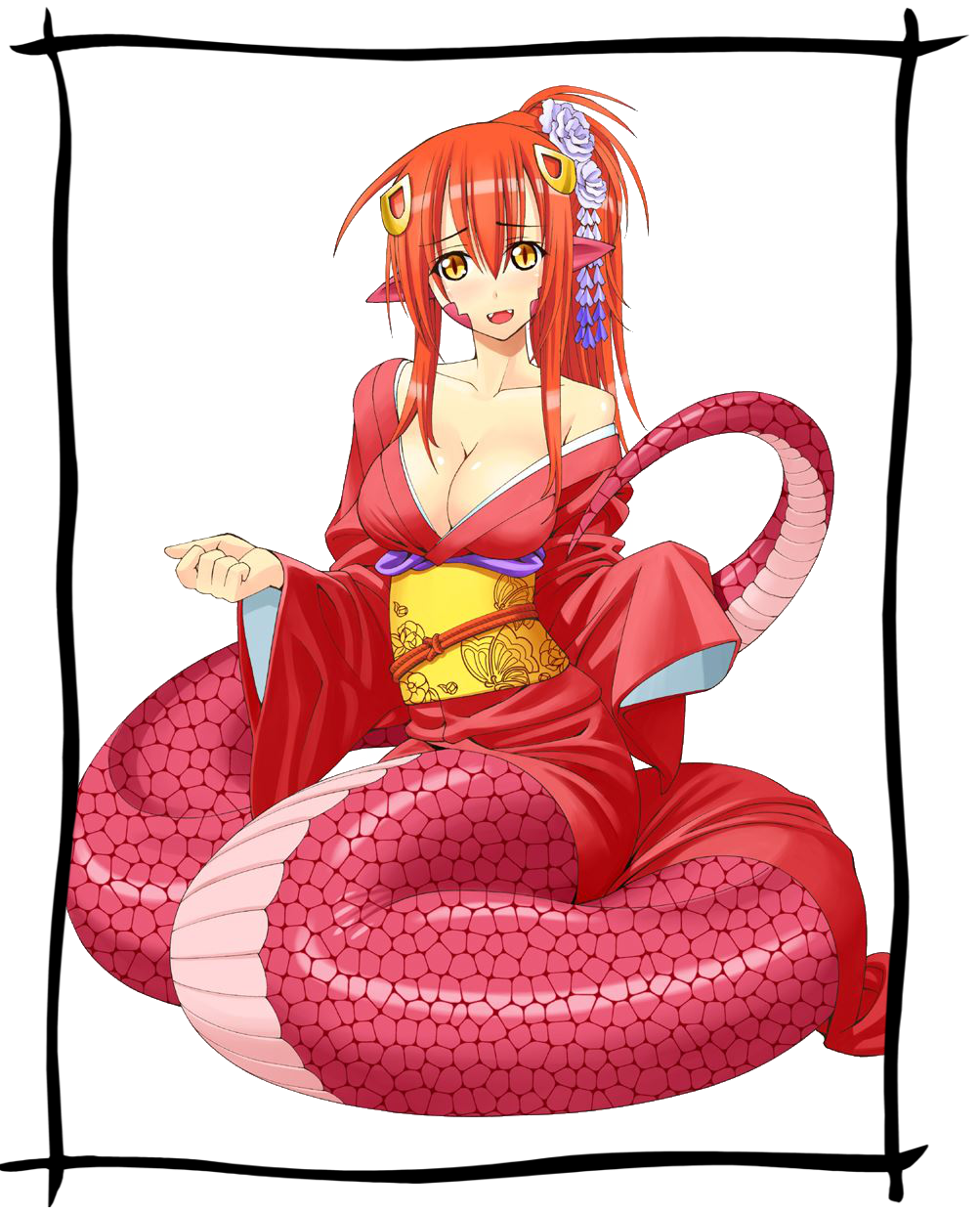
Medusa
Medusa traits
- Ability Score Adjustment: Your Charisma increases by 1.
- **Paralyzing Gaze: ** You may spend an action to channel your gaze against any creature within 30 feet of you that can see your eyes, forcing it to make a Constitution saving throw. The DC for this save is equal to 8 + your Constitution modifier + your proficiency bonus. The target becomes paralyzed on a failed save. At the start of the target's next turn, it regains mobility, but only moves at half speed. The target regains full mobility on the turn after that. After you use your paralyzing gaze, you can't use it again until you complete a long or short rest. Your paralyzing gaze has no effect on huge or larger creatures.
- Monstrous Appearance: You are proficient with the Intimidation skill.
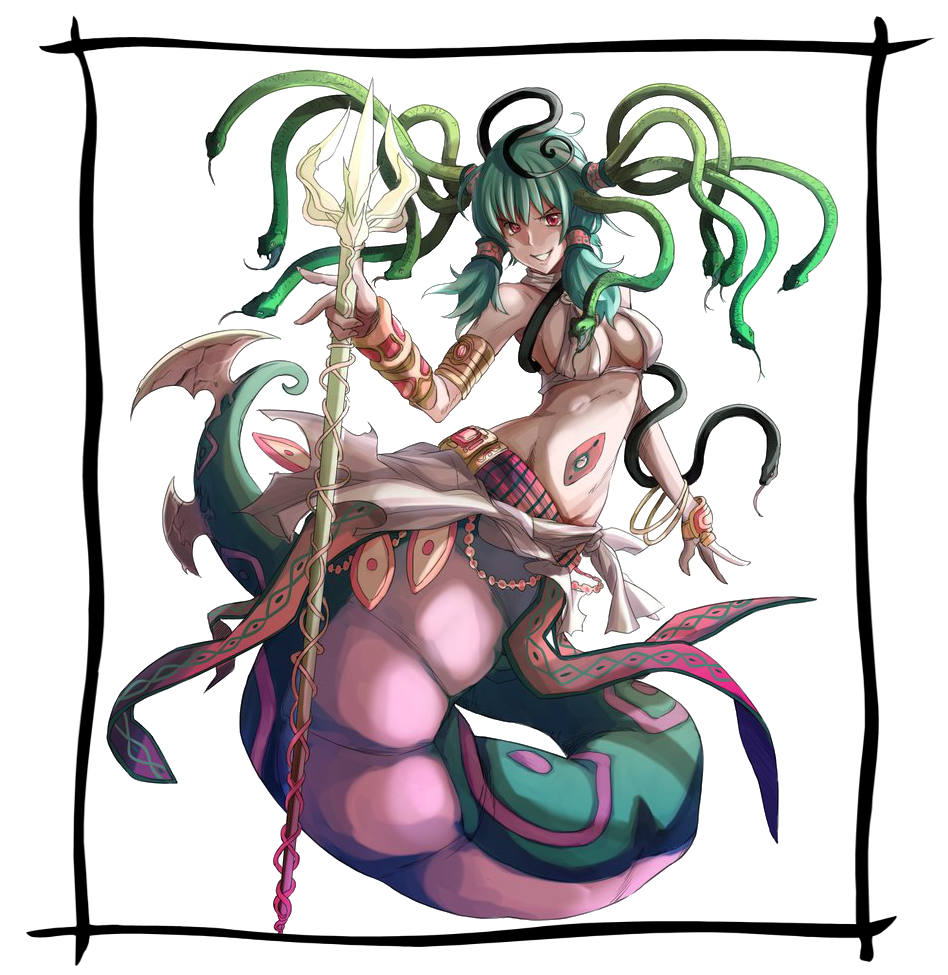
Melusines
Melusine traits
- Ability Score Adjustment: Your Intelligence increases by 1.
- Sea Creature (replaces Cold-Blooded): You have a swim speed of 45 feet, and you are no longer vulnerable to cold damage. You also no longer take cold damage from swimming in deep water.
- Bracing Wings: The support from your vestigial wings give you the advantage on Strength and Dexterity saving throws made against effects that would knock you prone.
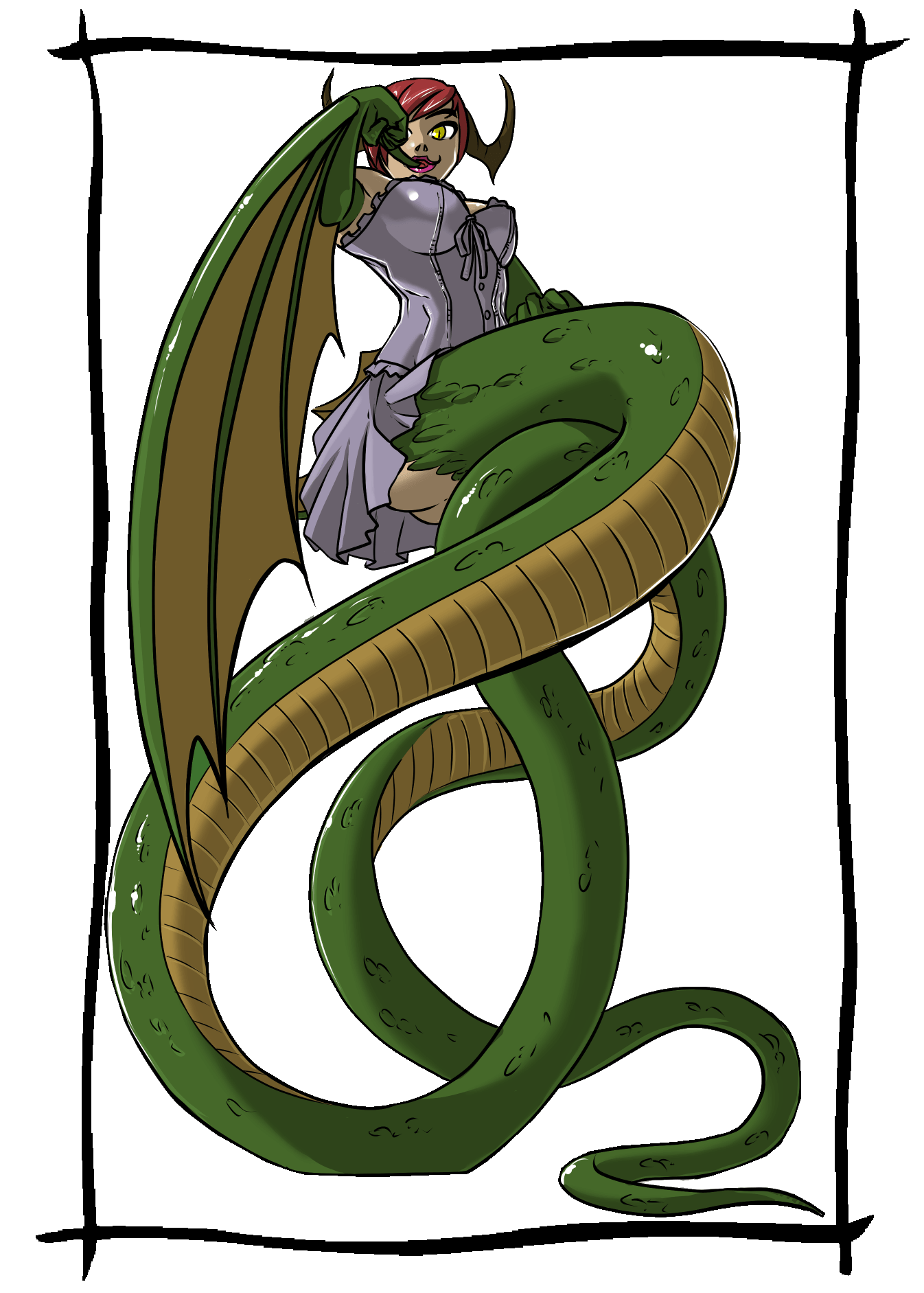
Vipers
Viper traits
- Ability Score Adjustment: Your Dexterity increases by 1.
- Hunter's Tongue: You can use this ability to increase your reach by 10ft when interacting with objects or making grapple attempts. IF you use this ability to do a grapple you can't use it again after one short or long rest. The maximum weight of your objective is 110 pounds (or 50 KG). Using this ability take all of your turn.
- Venomous Bite: You can use your action to make the following attack:
- Venomous Bite: Melee Weapon Attack: Your Dexterity modifier + your proficiency modifier to hit, reach 5 ft., one target. On a hit, it deals 1d4 + your Dexterity modifier piercing damage and the target must make a Constitution save. The DC for this save is equal to 8 + your Constitution modifier + your proficiency bonus. The target takes an extra 1d6 poison damage on a failed save, and half as much on a successful save. This poison damage increases to 2d6 at 5th level, and increases again to 3d6 at 11th level. After you use your venomous bite, you can't use it again until you complete a long or short rest.
- Monstrous Appearance: You are proficient with the Intimidation skill. Also, you have disadvantage on Charisma checks that don't involve intimidation, unless the check is made involving other lamias, dragonborn or other NPCs with the "Monstrous Appearance" trait.
- Claws: Your unarmed strikes deal 1d4 slashing damage
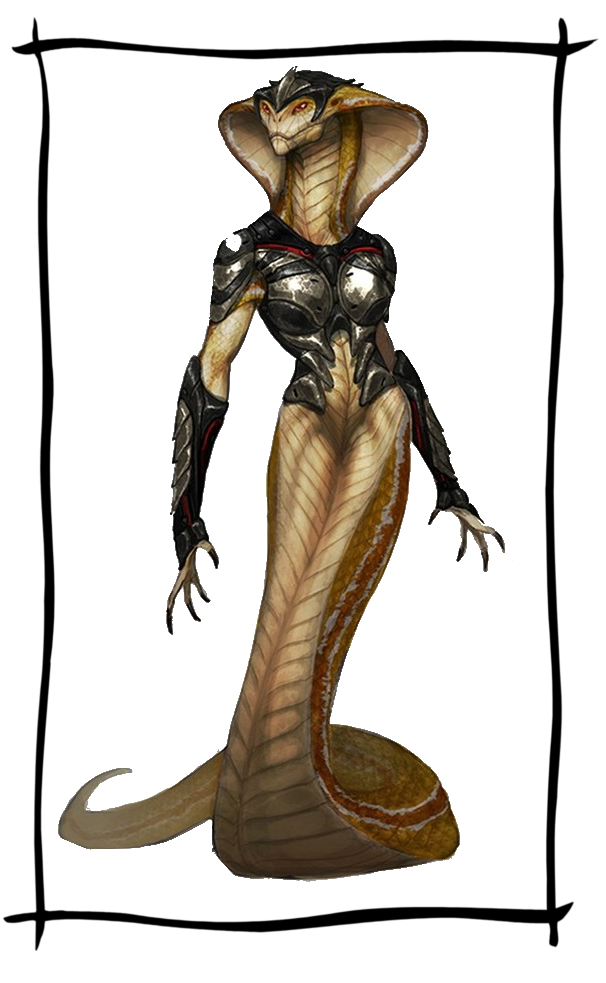
Harpy
Harpy Traits
- Ability Score Increase. Your Dexterity increases by 2.
- Age. Harpies reach full maturity at 16, but live to be up to 200 years old.
- Monogendered. All harpies are female.
- Alignment. Many are chaotic, some neutral, some both. All harpies keep some form of their wild self, be it in their neutrality, or their chaotic nature.
- Size. Your size is medium. See the three subspecies below for specific average heights.
- Speed. Your bird legs are only so-so for walking. Your base walking speed is 20 feet.
- Harpy Talons. You have proficiency with unarmed strikes, which deal 1d4 slashing damage.
- Harpy Wings. All harpies' upper limbs consist of bird wings of differing sizes and shapes. See the three subspecies below to determine what kind of wings you have.
- Grasping Talons. You have advantage on grapple checks while flying. On a successful grapple and on each of your turns that you maintain the grapple, the target takes 1d4 piercing damage from your talons. If you or your target end the grapple while airborne, the target falls.
- Pinching Talons. You have a tendency to relieve individuals of the burdens of excess possessions. You have proficiency in the Slight of Hand skill.
- Languages. Common
- Subspecies. There are three known harpy subspecies, from which you must choose one.
Skysinger Harpy
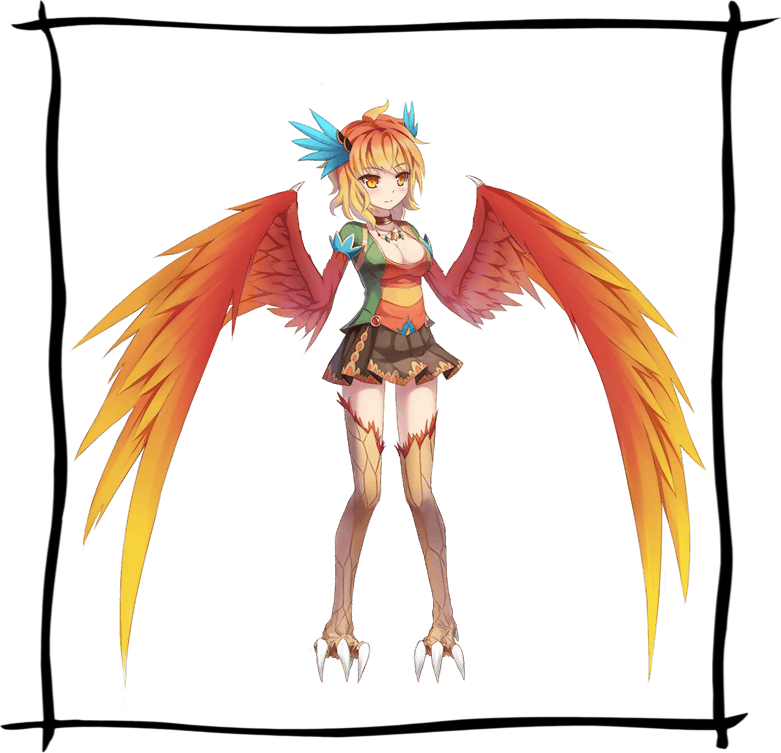
Skysinger Harpy Traits
- Ability Score Adjustment. Your Charisma increases by 1.
- Size. Skysinger harpies tend to reach between 4-5 feet in height, due to their smaller bodies.
- Skysinger Wings. You have a flying speed of 30 feet. You cannot fly if you are wearing armor heavier then light. Your fly speed is reduced to 15 feet if you are carrying a medium load, and you can't fly if you have a heavy load. You also cannot fly while holding a weapon with the claws on your wings. Although you can wield most weapons with the talons and claws on your wings, you have disadvantage on attack rolls with heavy weapons, as their size and bulk make them too large for harpies to use effectively.
- Luring Song. You can use your action to sing. Any humanoid or giant of your choice within 30 feet of you that can hear your song must make a Wisdom saving throw. The DC is 8 + your Charisma modifier + your proficiency bonus. On a failed save, the creature is charmed as long as the harpy uses its bonus action on each turn to continue the song. While charmed by a harpy, a target is incapacitated and ignores the songs of other harpies. If the charmed target is more than 5 feet away from you, the target can take the Dash action to move towards you by the most direct safe route available. The target will avoid attacks or difficult terrain, and will stop and stare at the harpy if it cannot get any closer. If the target is attacked by anyone other than the harpy, the effect immediately ends. A creature can also repeat the saving throw at the end of each of its turns. If a creature's saving throw is successful, the effect ends on it. You cannot use this feature again until after your next long rest.
Land Animal Harpy
Land Animal Harpy Traits
- Ability Score Adjustment. Your Constitution increases by 1.
- Size. Landrunners can be up to 7-8 feet tall.
- Speed. Your base walking speed increases to 40 feet.
- Land Animal Wings. Your wings are not capable of flight. However, they are more dextrous as a result, allowing you to wield heavy weapons with no attack roll penalties.
- Land Animal Legs (replaces Grasping Talons). Due to your powerful legs, whenever you make a long jump, the total distance you travel is doubled.
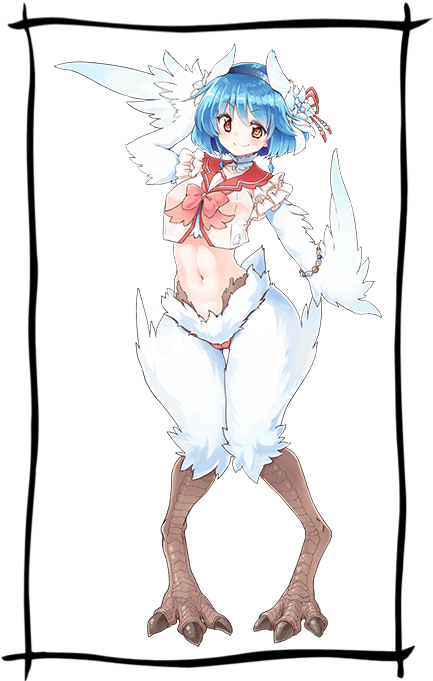
Raptor Harpy
Raptor Harpy Traits
- Ability Score Adjustment. Your Intelligence increases by 1.
- Size. Raptor harpies grow to be about the same size of your average human female adult, unlike their more common kin.
- Speed. Your base walking speed increases to 30 feet.
- Raptor Talons (replaces Harpy Talons). Unarmed strikes with your talons now deal 1d6 slashing damage. This also applies to your Grasping Talons trait, and the DC required to lift a target into the air is reduced by 2.
- Raptor Wings. In addition to your flying speed of 40 feet, your more powerful wings allow you to fly at half speed if you are wearing medium armor. Your fly speed is reduced to 15 feet if you are carrying a medium load while wearing medium armor, and you can't fly if you have a heavy load. Unfortunately, your even longer wing pinions make it even more difficult to wield most weapons effectively. You have disadvantage on attack rolls with any simple or martial weapon that does not have the light property.
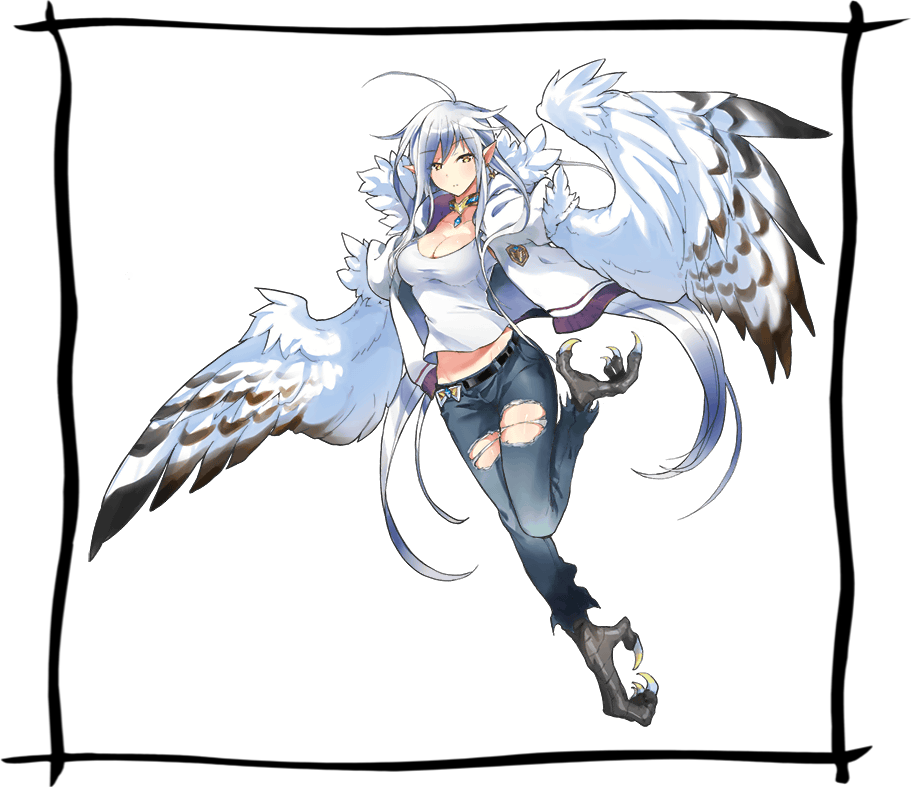
Centaur
Centaur traits
- Ability Score Increase: Your Strength score increases by 2.
- Age: Centaurs experience rapid maturity, reaching physical maturity at age 3, so they are unlikely to live past 60-70 years.
- Alignment: Prone to maintaining ancient patterns and traditions while simultaneously defying formal societal order, centaurs tend toward neutrality in all regards.
- Size: Most centaurs stand between 6 and 7 feet tall. Your size is medium.
- Speed: Your base walking speed is 40 feet.
- Hungry: You must eat four times as much, or four times as frequently, as a human. You must also drink twice as much or twice as frequently as a human. Failure to do so incurs starvation or dehydration.
- Hunter's Arms: From your life of hunting and surviving in the wilds, you have proficiency with the Longbow and the Longsword. You also have proficiency in one skill: Athletics, Perception, Nature, or Survival.
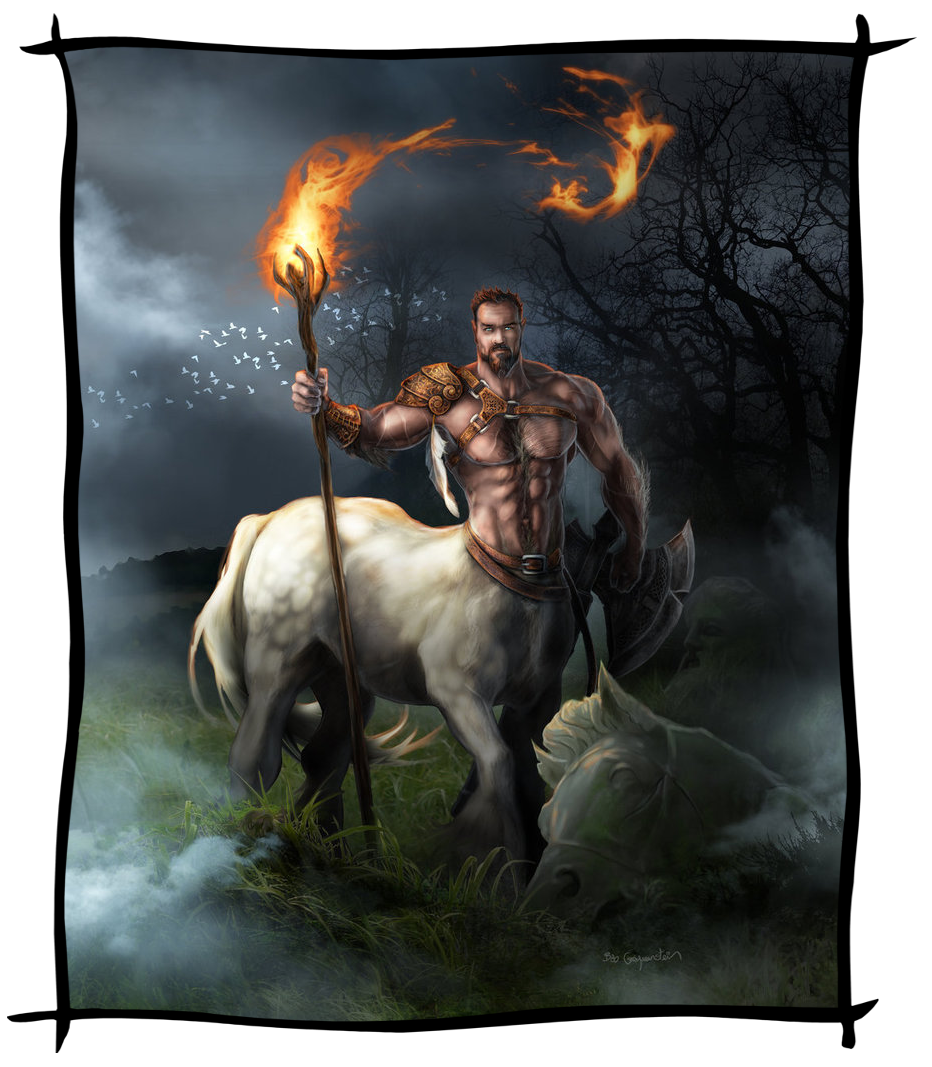
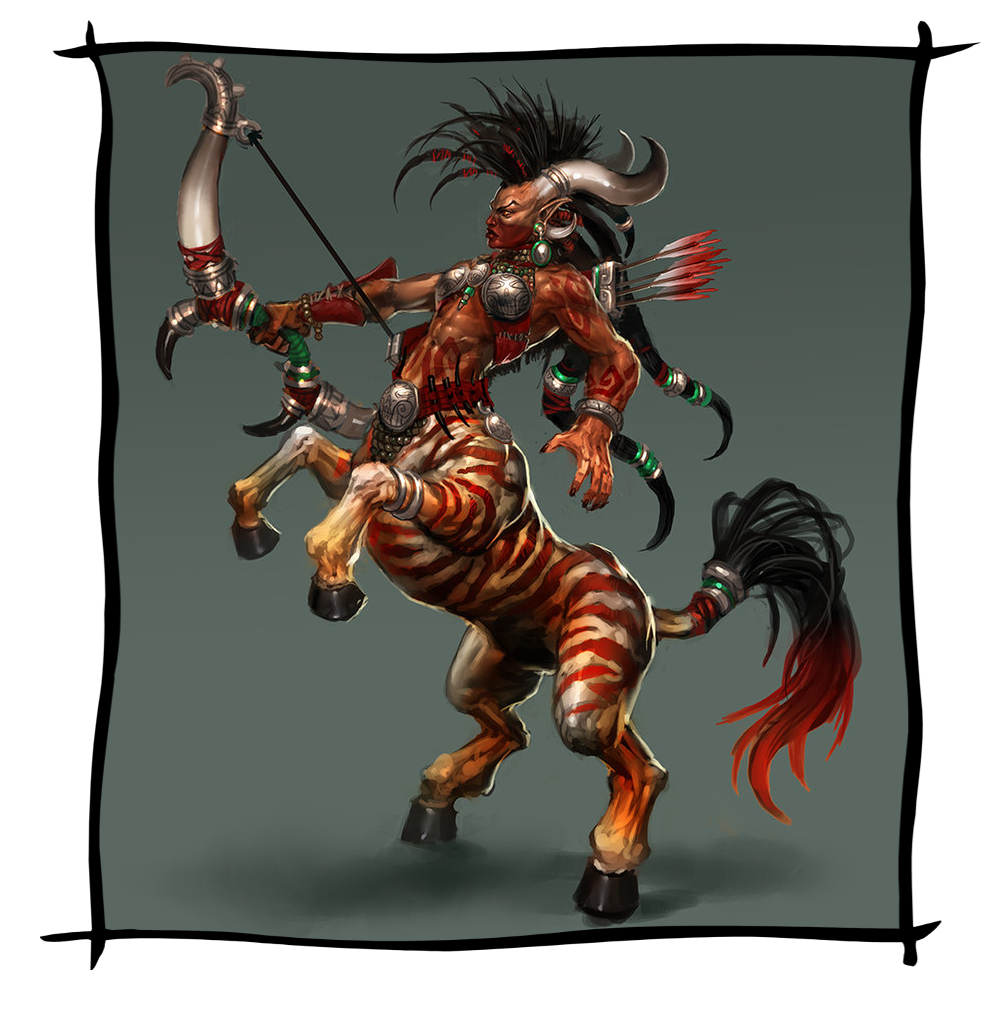
- Trampling Charge. If you move at least 20 ft. straight toward a creature and then hit it with a melee attack on the same turn, that target must succeed on a Strength saving throw with a DC of 8 + your proficiency bonus + your Strength modifier or be knocked prone. If the target is prone, you may make a hooves attack against that creature as a bonus action, dealing an additional 3 (1d6) damage on top of the ordinary damage of the attack.
- Hooves: You are never unarmed and are proficient in your hooves, which are a melee weapon with a 5ft range that deals 1d6 damage.
- Ungainly. Because of your body structure, you cannot easily ride another animal as a steed. Rather, you are considered to be mounted without the ability to dismount. You may only mount a steed that is at least two sizes larger than you and can support you while you are standing or kneeling.
- Unlikely Clothing. Normal articles don't fit you, and your people do not typically clothe or armor themselves in the wild. Any garments you wish to wear must be custom-made with a material cost equal to the base item plus 50%. This does not include any service fee a craftsman may charge you.
- Languages. You can speak, read, and write in Common, Elven and Sylvan.
- Subspecies. There are three centaur subspecies, from which you must choose one.
Destrider Centaur
Destrider Centaur traits
- Ability Score Increase. Your Wisdom increases by 1.
- Wilderness Warriors. Conflicts between centaur herds in the past have resulted in unique warfare strategies, using pikes as cavalry and anti-cavalry weapons all at once. You are proficient with the pike.
- Nature Wanderer. Choose one environment (Swamp, Forest, Desert, Hill, Mountain and etc.). You have advantage in Perception and Investigation rolls related to that environment, plus you always know your way through that area and gain 10 feet speed while there.
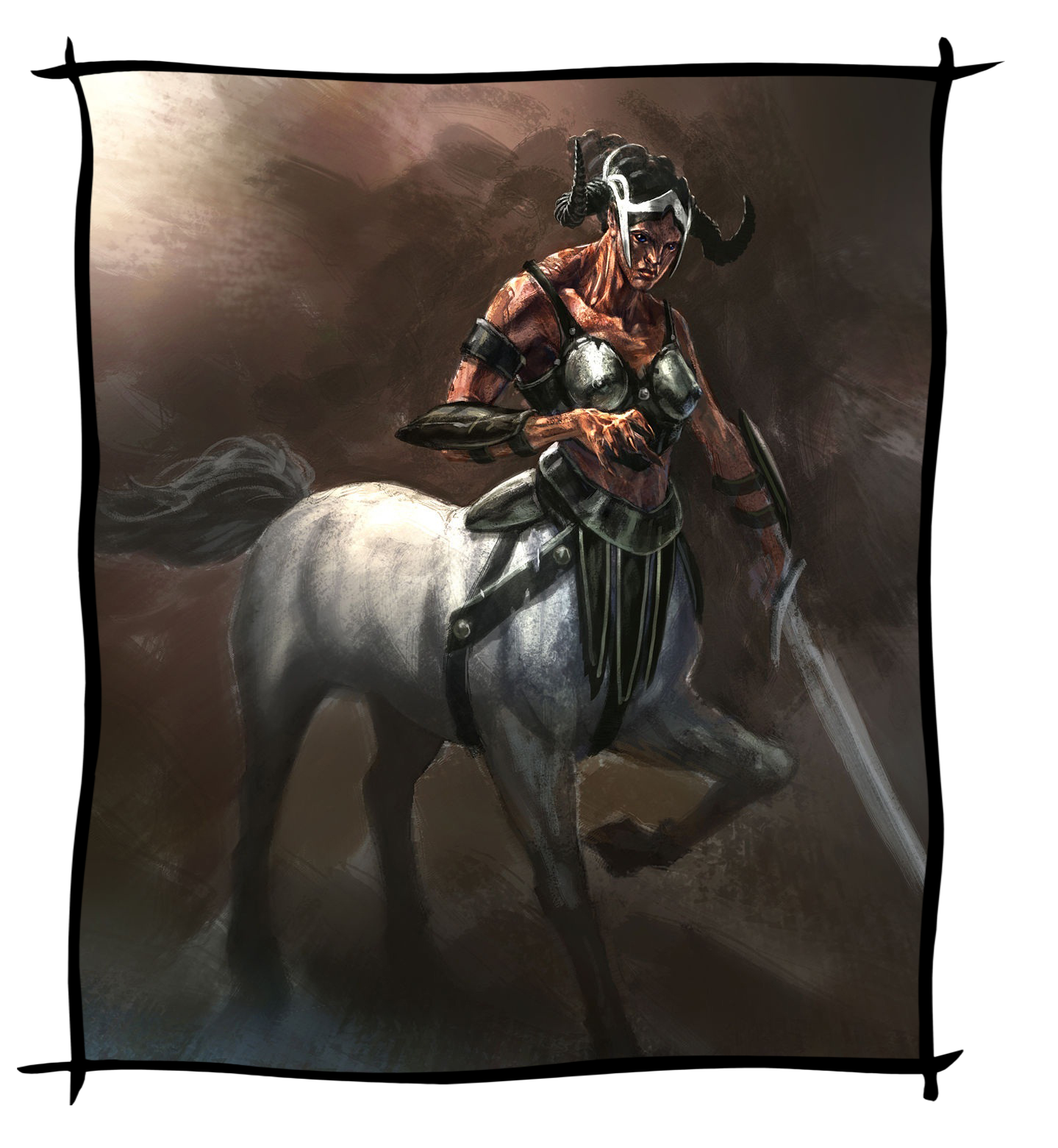
Courser Centaur
Courser centaur traits
- Ability Score Increase. Your Dexterity score increases by 1.
- Normalized. Your eating habits resemble those of a human.
- Nimble Frame. Whenever you take the Dodge action during combat, your AC increases by 2 until the start of your next turn.
- Health Knowledge. You have proficiency in the Medicine skill.
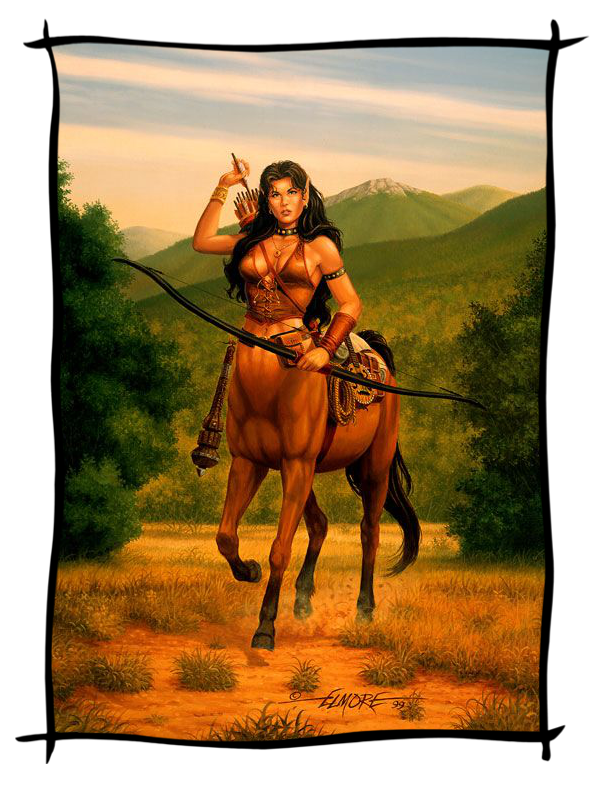
War breed Centaur
War breed Centaur Traits
-
Ability Score Increase. Your Constitution score increases by 1.
-
Heavyweight Frame. Strength requirements for you to wear heavy armour are reduced by 2. Encumbrance brought about by any armour or equipment you are wearing or carrying is reduced by half.
-
Bulky. You are a Large size character, Giving you an extra 1d6 to your Hooves of Fury ability damage.
-
Heavy Hitter. You have proficiency with heavy weapons.
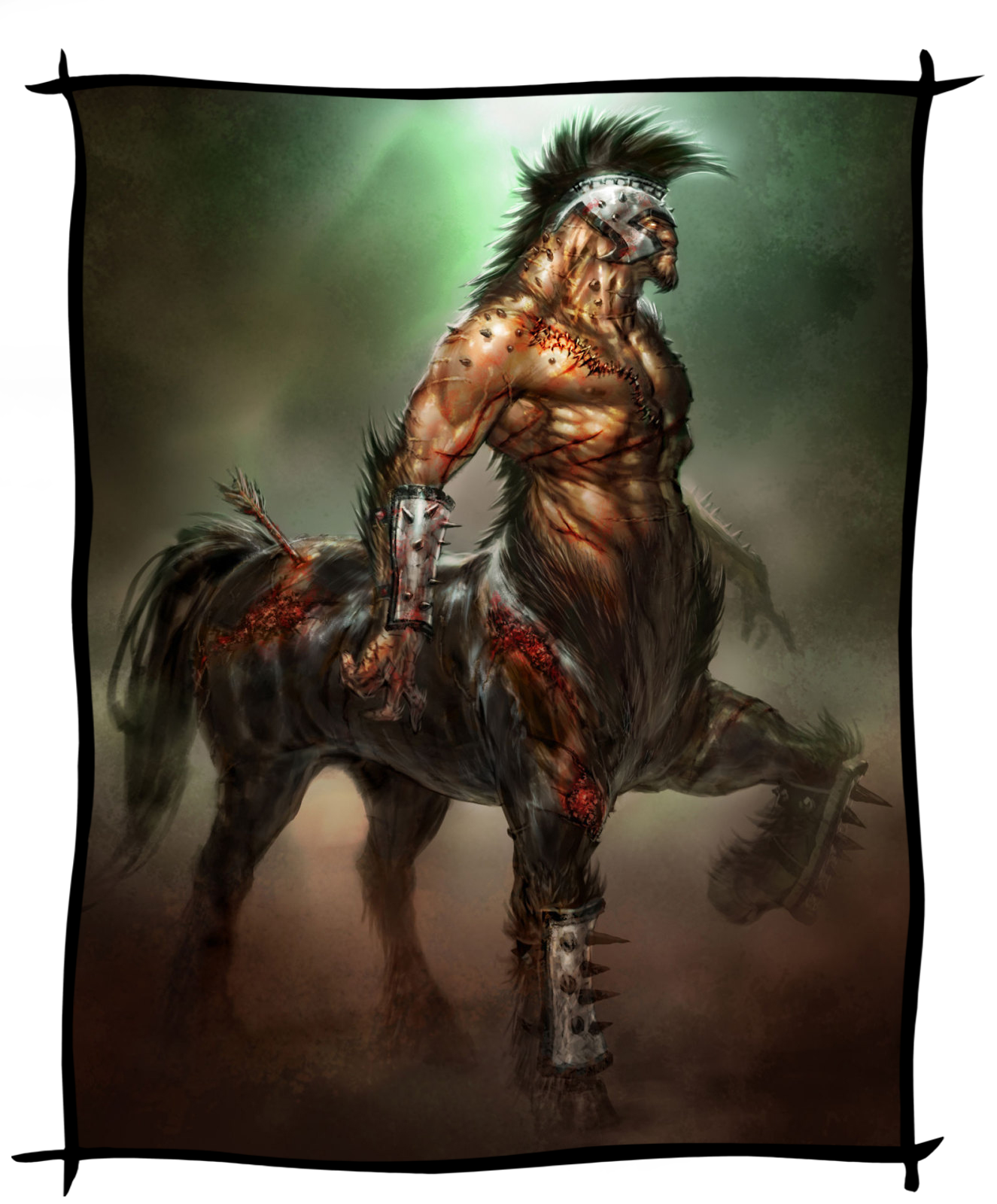
Slimean
Slime Traits
- Ability Score Increase. Your Dexterity increases by 1.
- Age. Due to their physiology, slimes are effectively immortal provided they are supplied with efficient resources to regenerate and keep their body mass adequate.
- Genderless: Slimes can simply look as either male or female of any race, but do their biology, they lack any gender, reproducing via mitosis.
- Alignment. Slimean most often lean towards chaotic or neutral.
- Size. Slimean are about the same size as regular humans on average, though their height and proportions tend to vary based on their subspecies or what they're trying to imitate, and based on how much water they've absorbed into their bodies at a given time. Due to this depending on their recent living conditions they could shrink to be a small creature, and then after acquiring adequate resources expand back to Medium size. This species of slime has trouble keeping their bodies formed properly any bigger than medium so they cannot be a Large creature or Larger.
- Speed. Your base walking speed is 25 feet.
- Ooze Body. You are considered to be an ooze-type creature, and you have resistance to bludgeoning damage. You also have the ability to shapeshift into an oozing amorphous form, although you will drop all equipment you are carrying or wearing by doing so. While you are in this ooze form, you cannot be restrained, and you can move through spaces as narrow as 1 inch wide without squeezing. Changing form requires one full action.
- Water Dilution. While you are in deep water, you take 1d8 damage for every 5 feet of swimming movement.
- Bad Fliers, Good Landers. Slimean cannot keep their forms nearly as effectively falling through the air as other races. If a Slimean is falling for their entire turn they lose one size if they are medium, or take 1d10 damage if they're currently small, unless their speed is unhindered by some form of magic such as Feather Fall.
- Languages. Common
- Subspecies. Slime come in multiple different colors and all hues, representing different species of Slimean. You must choose one of the following Slimean subspecies:
 The closest thing to a "true form" that slimes have.
The closest thing to a "true form" that slimes have.
 Instance of a Slimean doing their best to take the form of another creature, not quite getting it right.
Instance of a Slimean doing their best to take the form of another creature, not quite getting it right.
Blue Slimean
Blue Slimean traits
- Ability Score Increase. Your Constitution increases by 2.
- Insulator. You have resistance to cold damage.
- Size Matters. Another factor in your resiliency is your ability to purposely expel body mass rather than lose it naturally. Using a bonus action, you can reduce your size on your turn from medium to small, though like with the Ooze Body feature you will drop any equipment you have on your person. You must finish a long rest in comfortable conditions with plenty of water to regain your lost mass and return to Medium size. This of course is optional if you wish to stay this size.
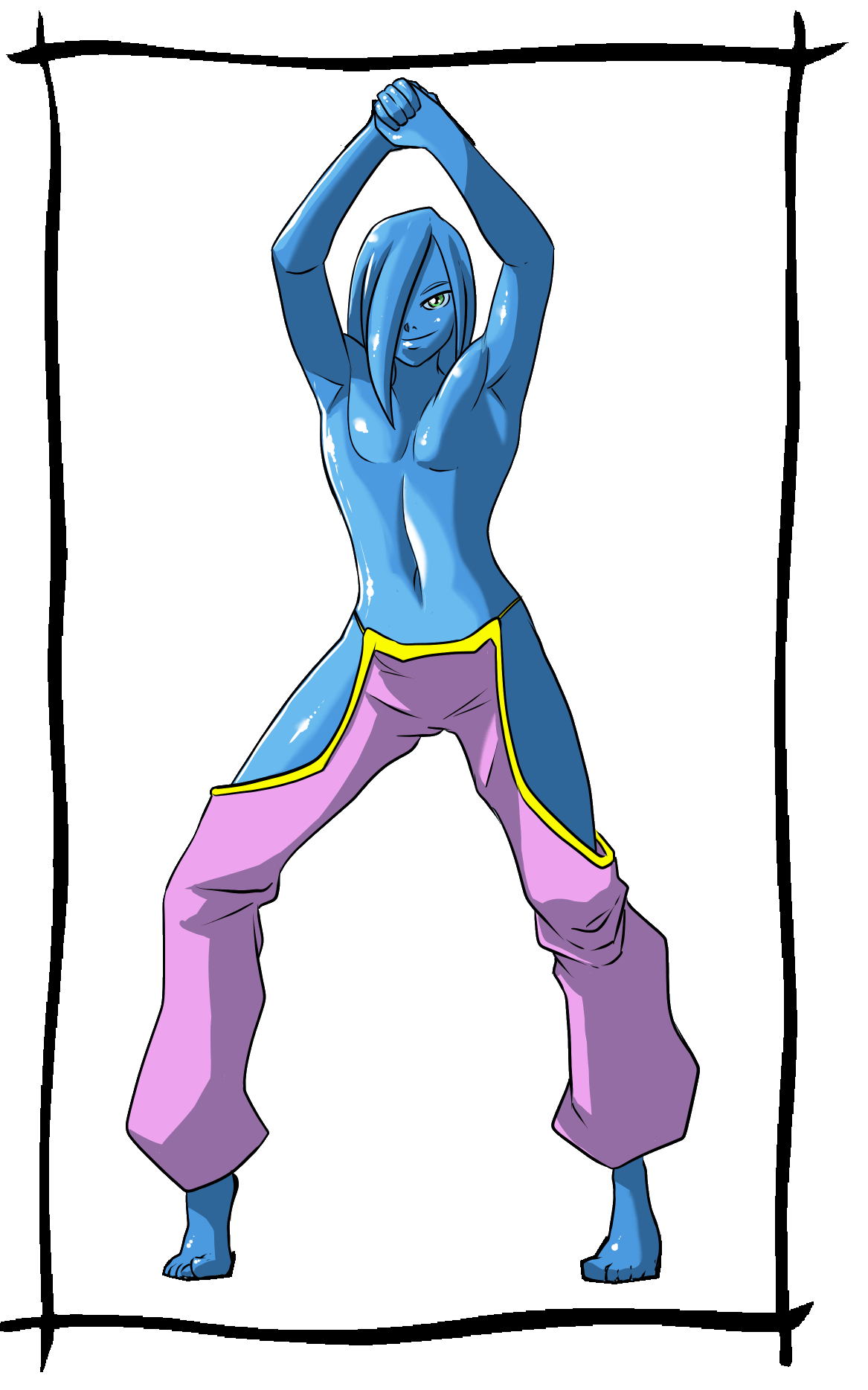
Red Slimean
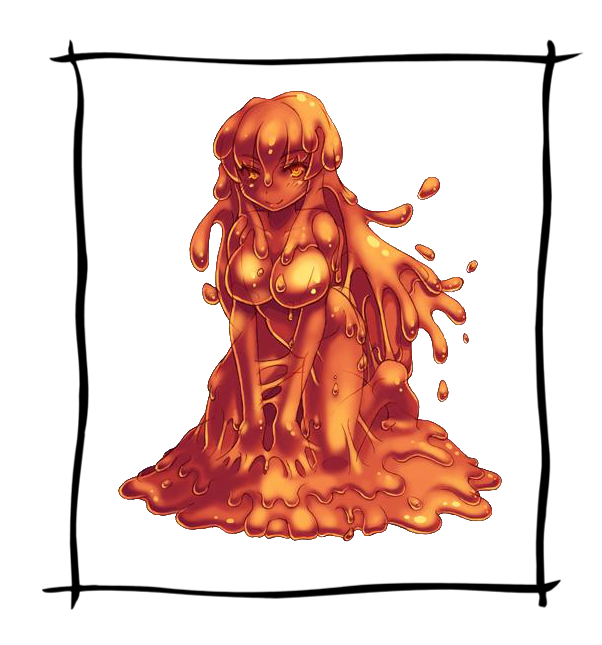
Green Slimean
Green Slimean traits
- Ability Score Increase. Your Wisdom increases by 2.
- Poisonous Ooze. You have resistance to poison damage, and when grappling an opponent, at the beginning of their turn if they are still grappled by you they take 1d6 poison damage.
- Projectile Slime. Due to their usually unconscious creation of toxic bubbles, they can sometimes use it as natural ranged attack. You can expend your action to create a poisonous bubble that can las up to 3 minutes and can be launched up to 30 feet. Poisonous bubbles deal 1d4 poison damage. Once per short rest you can roll 1d6 to determine how many bubbles you have generated to a maximum of 10.
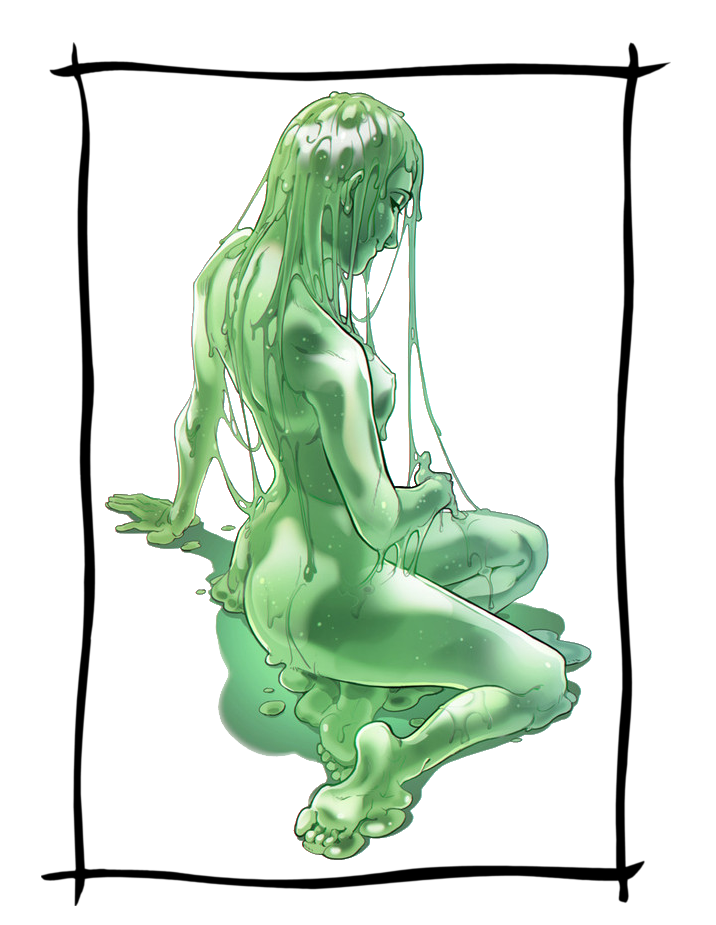
Pink Slimean
Pink Slimean traits
- Ability Score Increase. Your Constitution increases by 2.
- Galvanized Ooze. You have resistance to lightning damage.
- Sweet Scent Due to their naturally sweet and relaxing scent, Pink Slimeans gain advantage on attempts to charm their targets.
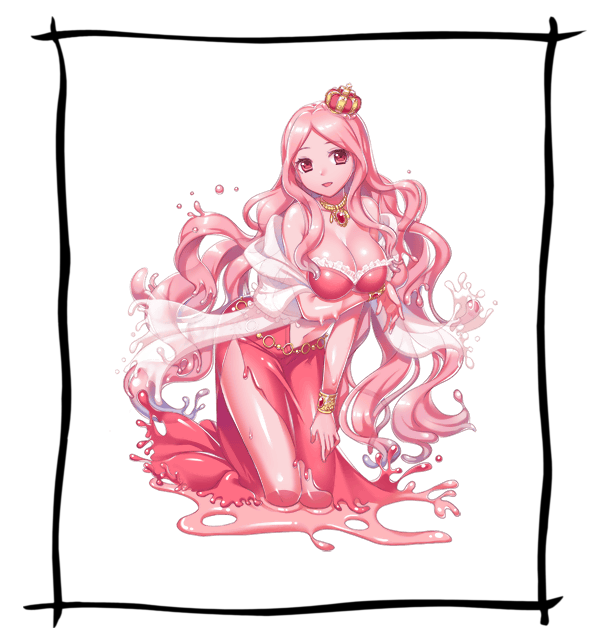
Dark Slimean
Dark Slimean traits
- Ability Score Increase. Your Intelligence increases by 2.
- Acidic Ooze. You have resistance to acid damage, and when grappling an opponent, at the beginning of their turn if they are still grappled by you they take 1d6 Acid damage.
- Civil Tongue. Due to their higher than average intelligence, the Dark Slimean strove for more understanding of those around themselves, to do this they spent their time learning more languages to expand their knowledge. You gain one additional language of your choice and you have an advantage in INT checks.
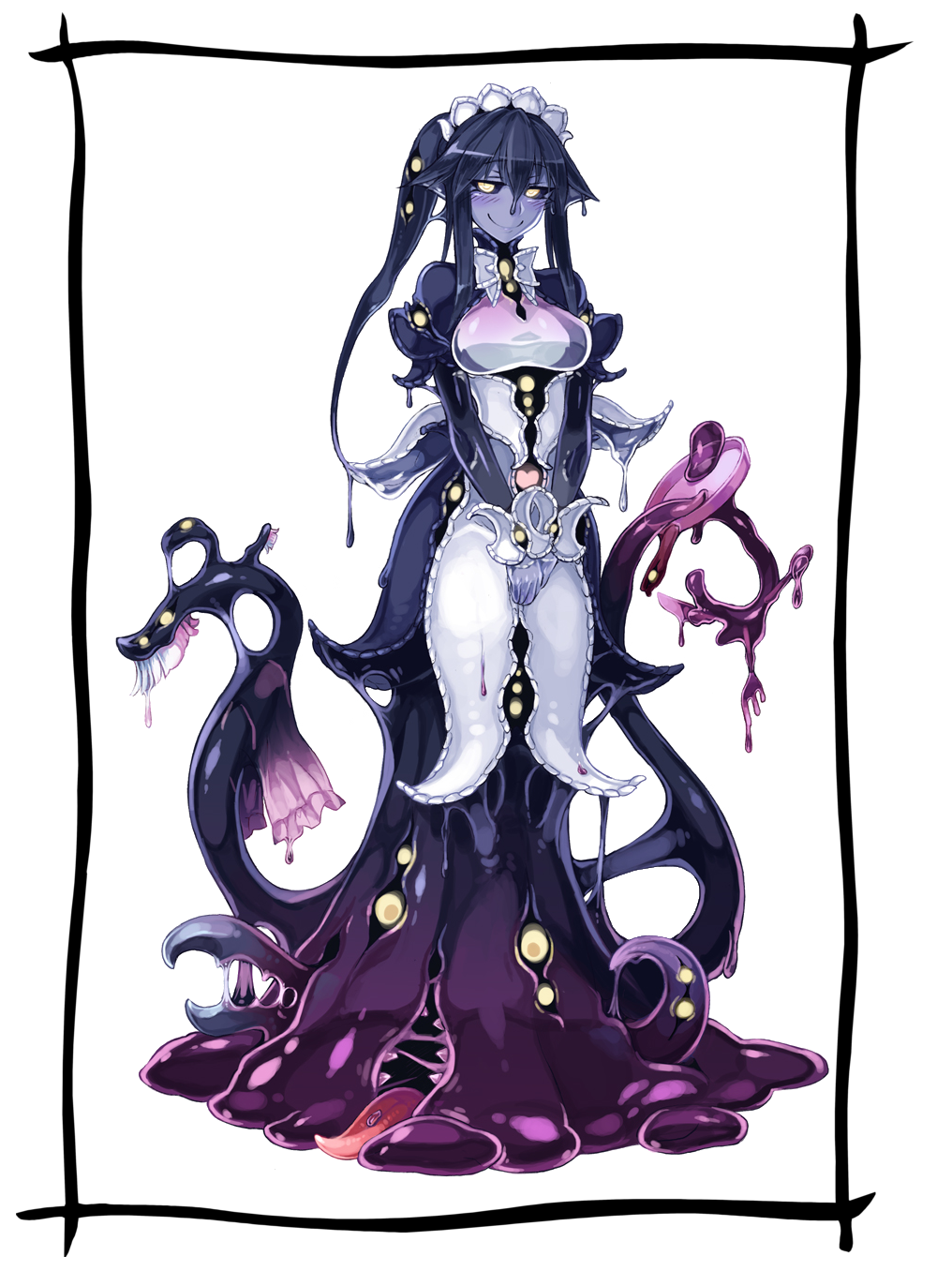
A black slime dressed like a maid.
Arachne
Arachne Traits
- Ability Score Increase. Your Constitution increases by 2.
- Age. Roughly the same lifespan as elves.
- Alignment. Primarily neutral, as they try to keep to themselves a lot.
- Size. Arachne have varying heights and leg spans, depending on their subspecies. Unless you are a small breed, your size is Large.
- Speed. Your base walking speed is 30 feet. You also ignore movement restraints presented by webbing.
- Keen Senses. You are proficient in Perception.
- Sharp Claws. Your unarmed strikes deal 1d4 slashing damage.
- Spider Climb. You have advantage in climbing checks and you can walk on walls and ceilings, but doing that requires your hands too, so you can't use them for attacking or spellcasting. For every 5 turns on a wall or ceiling you have to do an Athletics check, which difficult is determined by the material of the walls or ceiling.
- Spider Half. You cannot use objects that natural humanoids can below the waist (such as boots, pants, or anything like that, with the exception of custom made armor). You also cannot use mounts.
- Natural Armor. When not wearing armor, your AC is 11 + your Dexterity modifier.
- Languages. Common, Undercommon
- Subspecies. You belong to one of the following subspecies of Arachne:
Webweaving Breed
Webweaving breed traits
- Ability Score Adjustment. Your Wisdom increases by 1.
- Size. Webweavers can be up to 6-7 feet tall and almost as wide.
- Spider Webbing. You can either spend 1 hour to coat an entire room in webs, or you can use your action to make the following attack:
- Shoot Webbing. Ranged Weapon Attack: Your Dexterity modifier + your proficiency modifier to hit, range 30 ft., one target. Hit: You successfully restrain the target with your webbing. The webs have AC 10+ your proficiency bonus, HP 10. Alternatively, you can use your Spider Webbing to spend half the normal time required to craft a mundane article of cloth clothing. After you use your spider webbing through any of the above methods, you can't use it again until you complete a long or short rest. Any fire damage will burn the webbing and free the creature unharmed.
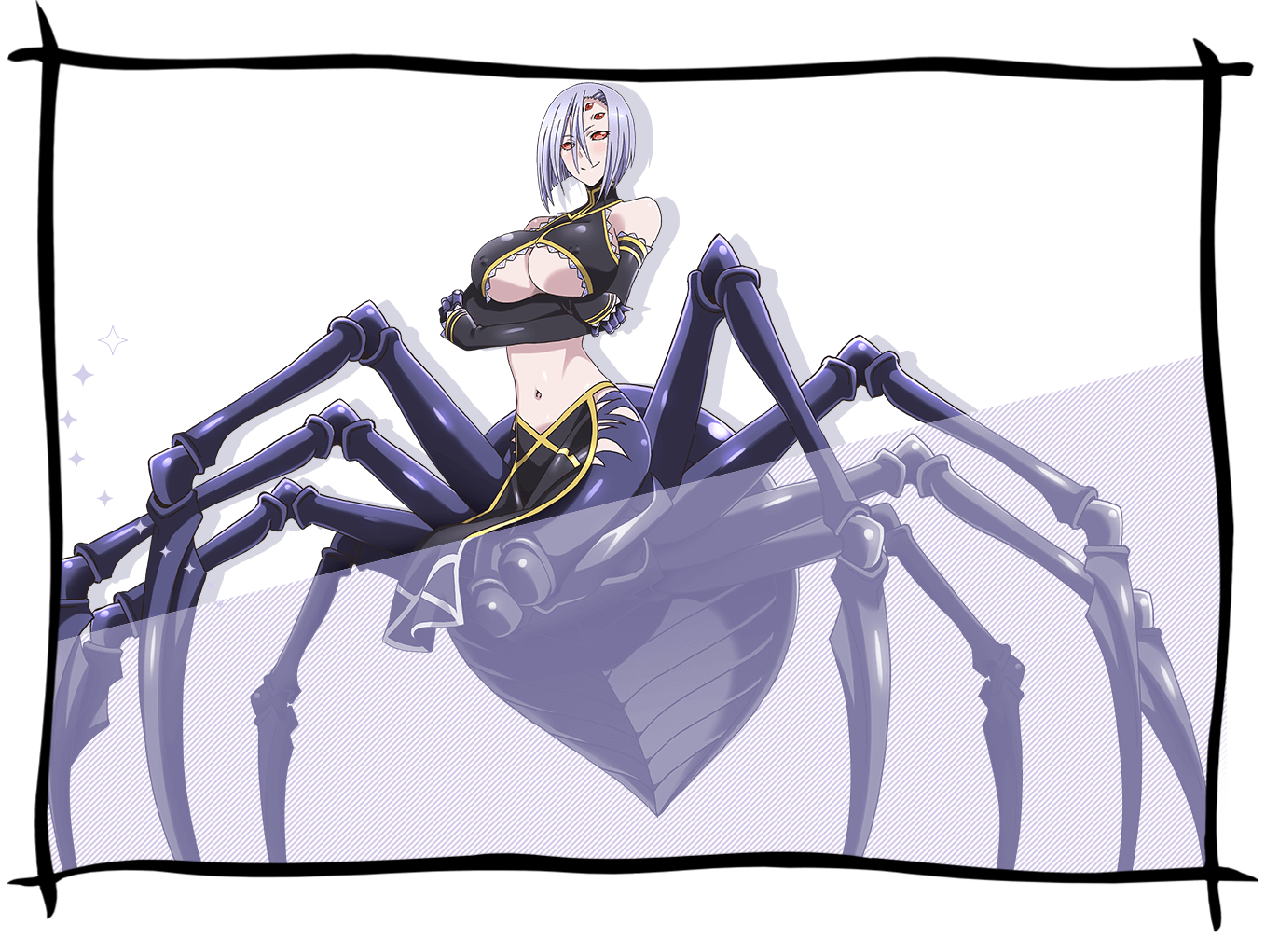
Long-legged Breed
Long-legged Breed
- Ability Score Adjustment. Your Dexterity increases by 1.
- Size. Long-legged breed Arachne can be up to 7-8 feet tall, and just as wide, if not slightly more so.
- Long Legged Hunter. You have the advantage on Strength and Dexterity saving throws made against effects that would knock you prone. You also have advantage on any Survival checks made to track other creatures.
- Capture Tactics. You have advantage on checks made to grapple other creatures, and you may use either your Strength or Dexterity to do so.
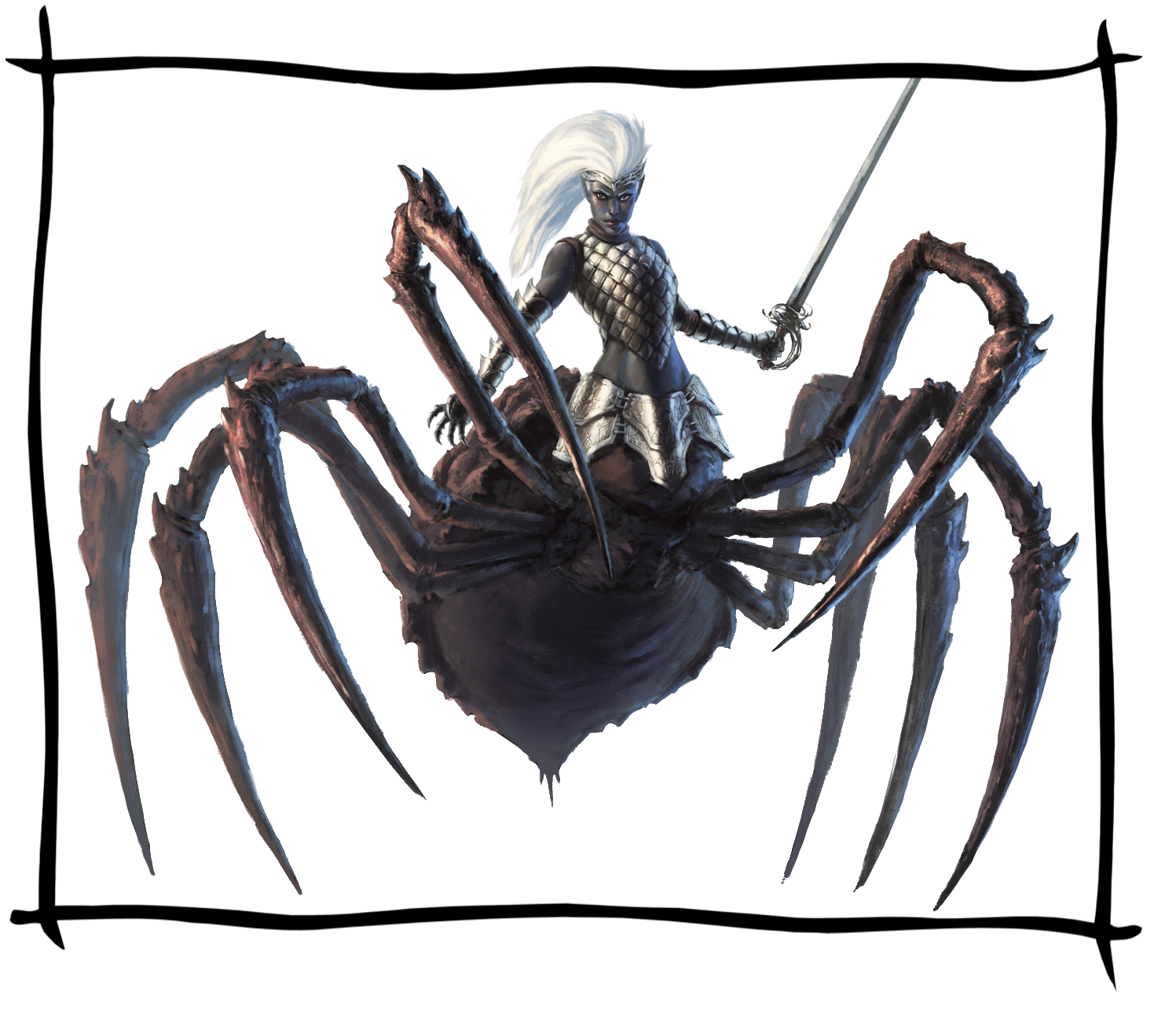
Large Breed
Large Breed Traits
- Ability Score Adjustment. Your Strength increases by 1.
- Size. Large breed Arachne can be up to 8-9 feet tall, and almost as wide.
- Large Claws (replaces Sharp Claws). You have proficiency in your unarmed strikes, which now deal 1d6 slashing damage. However, your hands are now too cumbersome to properly wield light or finesse weapons.
- Venomous Bite. You can use your action to make the following attack:
- Venomous Bite. Melee Weapon Attack: Your Dexterity modifier + your proficiency modifier to hit, reach 5 ft., one target. Hit: 1d4 + your Dexterity modifier piercing damage and the target must make a Constitution save. The DC for this save is equal to 8 + your Constitution modifier + your proficiency bonus. The target takes an extra 1d8 poison damage on a failed save, and half as much on a successful save. This poison damage increases to 2d8 at 11th level. After you use your venomous bite, you can't use it again until you complete a long or short rest.
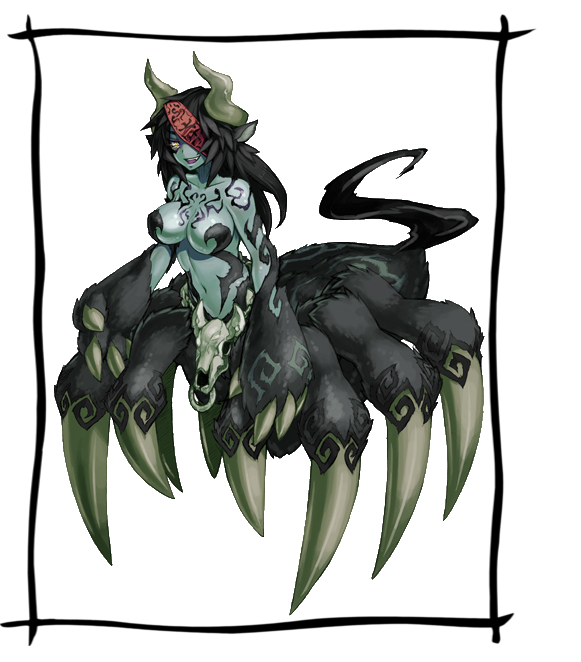
Small Breed
Small breed traits
- Ability Score Adjustment. Your Intelligence increases by 1.
- Size. Small breed Arachne are roughly 3feet tall, and almost as wide. Your size is Medium.
- Speed. Your base walking speed increases to 35 feet.
- Jumping Spider. Whenever you make a long or high jump, the total distance you travel is doubled. If you are falling, you can make a dexterity check, that will be determined with the fall distance, to catch yourself by using your smaller spider threads. On a success, you stop falling, and can use your movement to climb up or down your thread on your next turn.
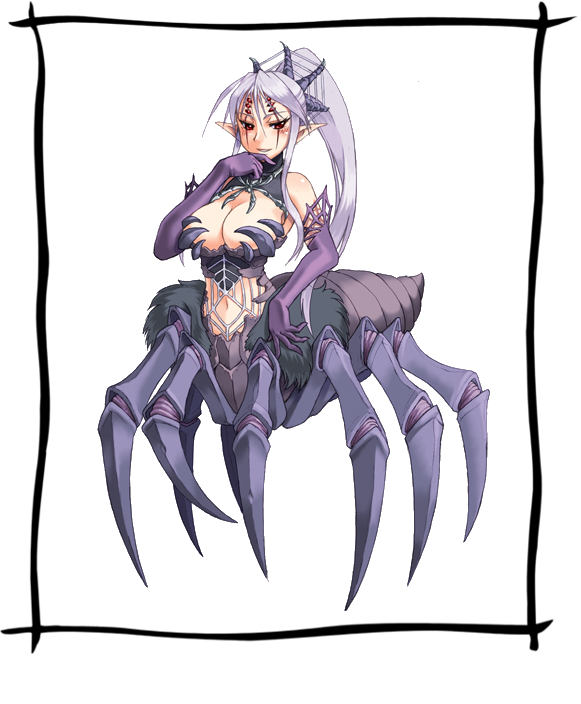
Scylla
Physical Description
Scylla possess the upper bodies of humans, with the lower bodies and tentacles of octopi, though their skin pigmentation sometimes has a drastically wilder variety of colors compared to ordinary humans. Female Scylla are known for sometimes having two extra tentacles similar to the squid ones. Unlike other creatures, Scylla eyes have fat horizontal pupils, not unlike actual octopus eyes. To keep itself from drying out on land, a Scylla’s rubbery skin is covered in a layer of slime that is more viscous than that of their mermaid cousins.
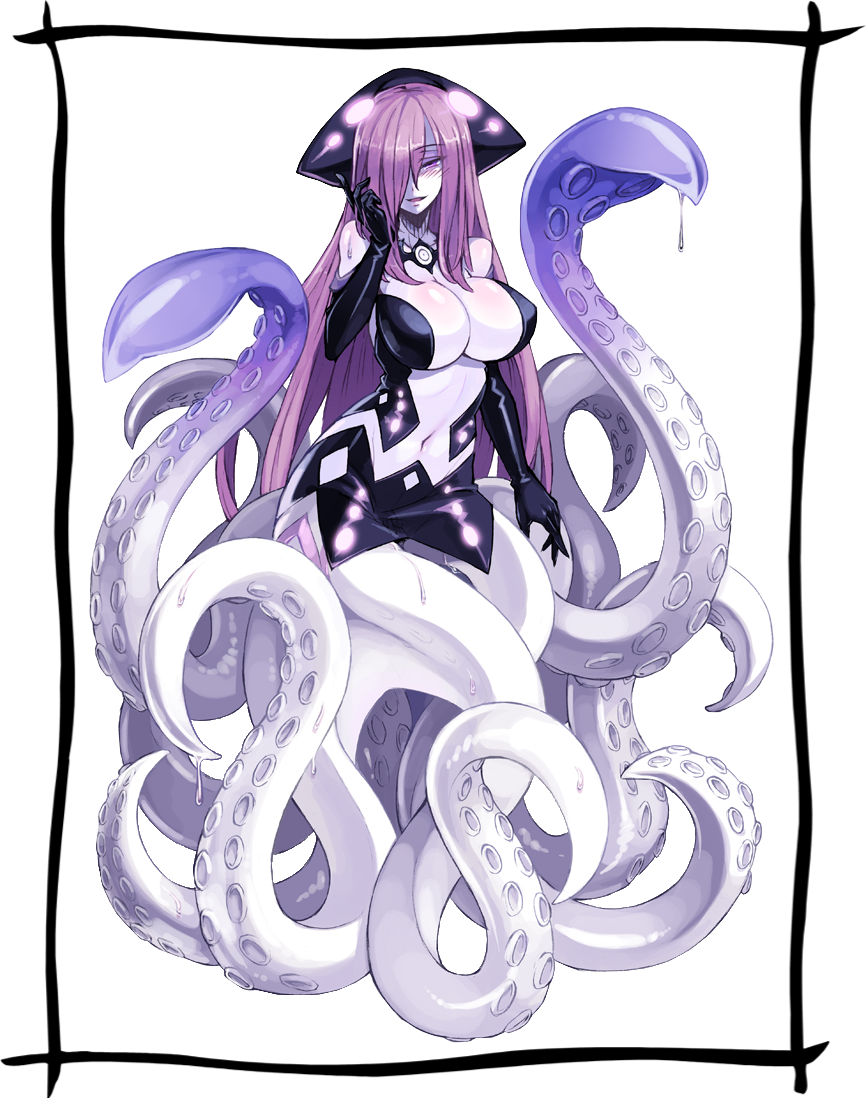
Scylla Traits
- Ability Score Increase. Your Dexterity increases by 2, and one other ability score increases by 1.
- Age. Roughly the same lifespan as elves.
- Alignment. Scylla tend to range from neutral to chaotic.
- Size. Scylla range from 7-8 feet in actual height, although they can appear much taller due to the fact that their tentacles are so stretchable. Your size is medium.
- Speed. You have a base walking speed of 20 feet, and a base swimming speed of 30 feet.
- Amphibious. You can breathe both air and water.
- Tentacle half: You lower half body is composed of 8 tentacles, each one with 10 feet of length, that you can use for doing several actions. You need at least 6 tentacles to maintain balance without problem, but you can move with four, but at 15 feet. If you are using only 4 tentacles to balance, you have a disadvantage in rolls that would knock your prone. If your only have 2 or less free tentacles you can’t move on your own.
- Your tentacles are too slippy to use a weapon or manipulate a focus, but you can hold up objects. Each tentacle can hold up to 50 pounds.
- You can use your tentacles to attack any creature up to 10 feet away. You have proficiency in this attack. Each tentacle that you use deals 1d2 bludgeoning damage, that is upgraded to 1d4 at level 6, 1d6, at level 10 and 1d8 at level 15 and 1d10 at level 19.
- Finally, your tentacles give you an advantage on ability checks made to grapple creatures that are your size or smaller. Grappling a creature requires 2 tentacles.
- Slippery. The layer of slime covering your rubbery skin makes you naturally slippery for 1d4 hours, to be slippery again you have to be completely submerged in water during 2 minutes or drink at least 4 gallons of water. You have advantage on Dexterity checks made to escape being grappled. After you have exhausted this 1d4 hours, you have to roll 1d8. The result is the number of days you can expend out of water. Once those days have passed, every morning you have to pass a Constitution check. If you fail, your attributes will decrease by one. This penalization lasts until you get slippery again, moment in which you roll for the hours for slipperiness.
- Ink Jet. You may use your action to spew a jet of black ink at a creature within 30 feet of you. You are proficient in this ranged attack, which uses Dexterity for your attack roll. On a successful hit, the target is blinded for 1 minute. A creature affected by this can expend one action to remove the ink. If you are underwater, using this ability will instead create a 20- foot-radius cloud of ink extends all around the octopus if it is underwater. The area is heavily obscured for 1 minute, although a significant current can disperse the ink. This has no effect on creatures with truesight, blindsight, or tremorsense. Using your ink jet consumes your internal supply for the day, you cannot use this feature again until you complete a long rest.
- Languages. Common, Aquan
Monoeye
Monoeye Traits
- Ability Score Increase. Two different ability scores of your choice increase by 1.
- Age. Monoeyes have approximately the same overall lifespan as regular humans.
- Alignment. Similar to humans, Monoeyes tend toward no particular alignment.
- Size. Your standard height range varies depending on your subspecies. Your size is medium.
- Speed. Your base walking speed is 30 feet.
- Cyclopean Vision. Your eye grants you the ability to see objects up to 2 kilometres away without any magical assistance, and you have advantage on perception checks made to view details from any distance that is greater than 60 feet away. The downside is that your depth perception is sorely lacking. As a result, you have disadvantage on all perception and investigation checks made to visually observe your immediate surroundings. You also have disadvantage on attack rolls with ranged weapons.
- Sensitive Eye. Whenever you suffer the blinded condition, the effect lasts for twice as long.
- Languages. Common, Giant
- Subspecies. You must choose one of the following subspecies:
Half-Human
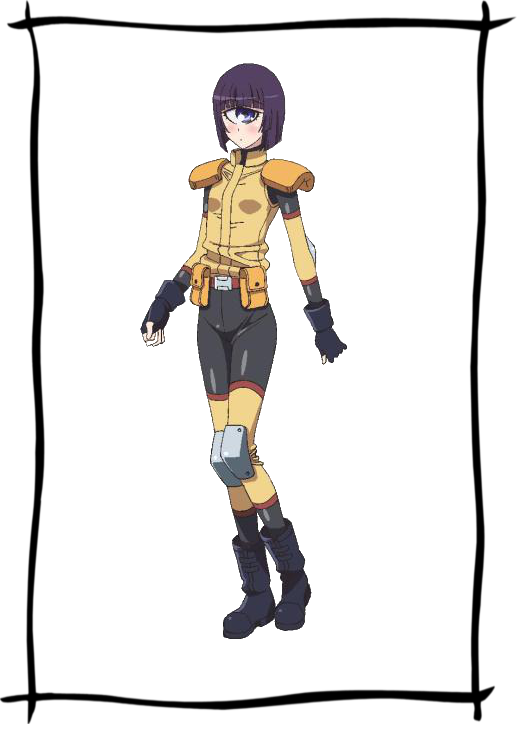
Half-Cyclops
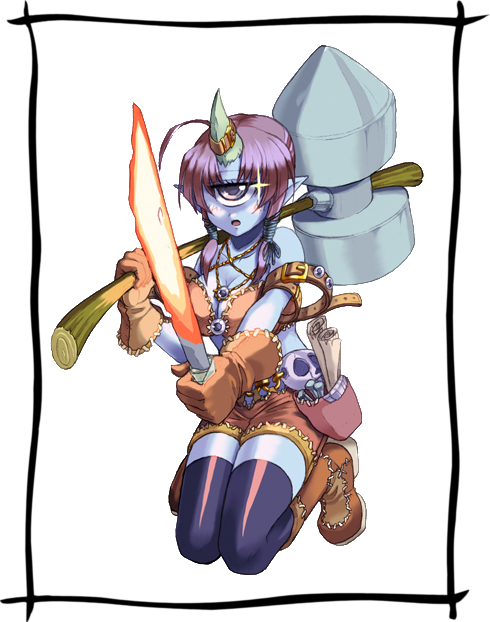
Half cyclops traits
- Ability Score Adjustment. Your Strength increases by 1.
- Size. While not quite as large as a pure-blooded cyclops, this subspecies can reach up to 7-8 feet in height.
- Strong Stature. You have advantage on Strength-based checks made to push, drag, or lift objects.
- Smithing Expertise. Your racial talent for smithing enables you to craft weapons and heavy armor in only half the time.
Backbeard

Backbeard traits
- Ability Score Adjustment. Your Charisma increases by 1.
- Size. Backbeards tend to reach somewhere between 3-5 feet in height, and weight about as much as the average juvenile human.
- Magic Eye Power. Your eye contains great magical power. Once per day, you may target a creature within 30 feet of you that you can see, and channel your inner power in one of the three following methods. You cannot channel your magic eye power again until after the next dawn.
Hypnotizing Eye. You force the target to make a Wisdom saving throw. The DC is 8 + your Charisma modifier + your proficiency bonus. On a failed save, the target is charmed for 1 hour. The charmed target obeys your verbal commands. If the target suffers any harm or receives a suicidal command, it can repeat the saving throw, ending the effect on a success.
Blinding Eye. You force the target to make a Wisdom saving throw. The DC is 8 + your Wisdom modifier + your proficiency bonus. On a failed save, the creature is blinded for 1 minute. This eye power has no effect on creatures with blindsight or tremorsense.
Ocular Blast. You channel your inner power into a blast of pure energy that originates from out of your eye. This ocular blast is a ranged spell attack that uses Wisdom for your attack roll. On a successful hit, the target takes 1d10 (5) force damage and is pushed 10 feet away from you. Channelling your inner power through any of the above methods puts great strain on your eye.
The Herensuge
Herensuge naming
Herensuges usually have shared territory with Dragonborns, and they have adapted part of their culture onto their own culture, and is not strange to find herensuges with dragonborn names. They also use human names, but that is a bit rarer.
Crazy, aggressive, impetuous
Herensuges are aggressive and impetuous because of their ancestry. The Herensuges (monster) are listed as very aggressive beasts, trait that their more human looking counterpart share, but in a smaller degree. They won't try to kill you for any lesser mistake, but it's relatively easy to make them lose control. They also face danger without fear, a feeling that they can't feel very well, a thing that has made some herensuges to fight with a monster too powerful for them. As always, any individual has their own personality, and exceptions exist, but the herensuges listed here are the most normal ones.
Monster ancestry
Herensuges descend of the monster with the same name, a type of hydra that only has 2 legs in the front and countless, giant, snake tails in the rear. The original herensuges featured different types of scales, that allow to tell what were their element, a trait that the herensuges (humanoid race) have. Here you have listed the colour of the scales and the elemental affinity that they have.
Draconic Ancestry
| Dragon | Elemental Affinity |
|---|---|
| Black | Acid |
| Blue | Lightning |
| Brass | Fire |
| Bronze | Lightning |
| Copper | Acid |
| Gold | Fire |
| Green | Poison |
| Red | Fire |
| Silver | Cold |
| White | Cold |
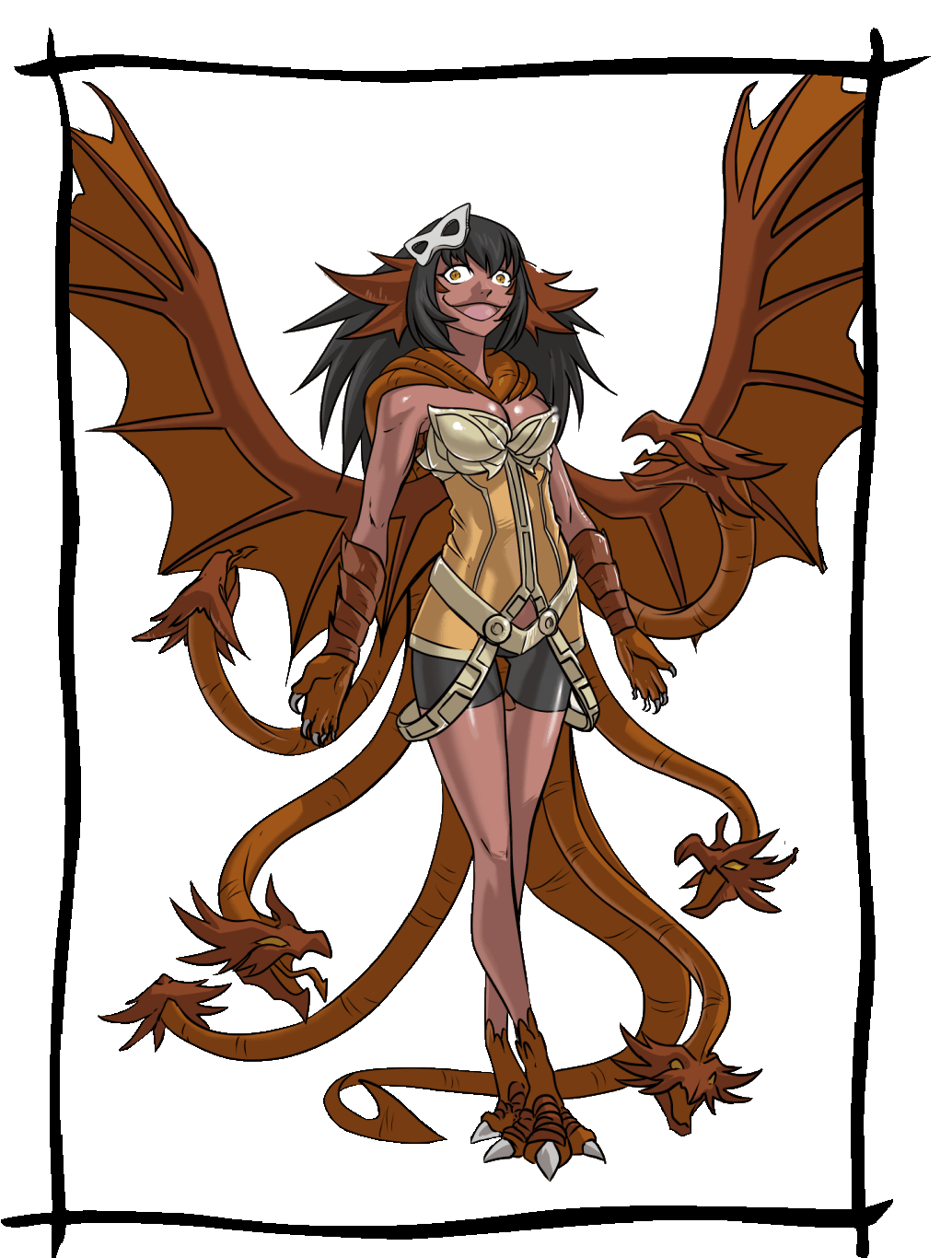
Herensuge Traits
- Ability score increase: Your strength increase by 1 and your constitution by 2.
- Age: Herensuges can live up to 200 years, and they reach maturity at 20.
- Alignment: Herensuges tend to be one the chaotic spectrum, but exceptions exist.
- Size: You have the same size as a human.
- Speed: Your walking speed is 35 feet, your gliding speed is 40 feet
- Wings: You can use your wings to fly, and you can spend a reaction to take no damage when you fall, if you have flied less than 40 ft. You can't attack or do spells when flying, but you can still use your Elemental Barrage. You can't gain altitude and each turn you drop 10ft. You can't also turn more than 90º each turn.
- Elemental barrage: Using your snake-tentacles you can shoot an elemental projectile that does 1D6 of elemental damage (determined by your Draconic Ancestry). This projectile can go up to 30 feet, at levels 6, 11, 16 and 20, you shot 1 extra projectile. To use this ability again, you have to take a short or long rest. This ability automatically hits.
- ** Draconic Ancestry:** You have to choose one draconic ancestry from the table. This determines the element of your "Elemental Barrage" and gives you resistance to that element.
- Languages: Common, Draconic
Dragonoids
Dragon Traits
- Age: Dragons reach maturity at 25, and can live up to 1000 years.
- Alignment: Dragonoids tend to be in the neutral spectrum
- Size: You are about 8-9 feet tall. Your size is medium.
- Speed: Your base walking speed is 30 feet.
- Languages: Common, draconic.
- Subspecies: You belong to one of the three subspecies listed below, of which you must choose one.
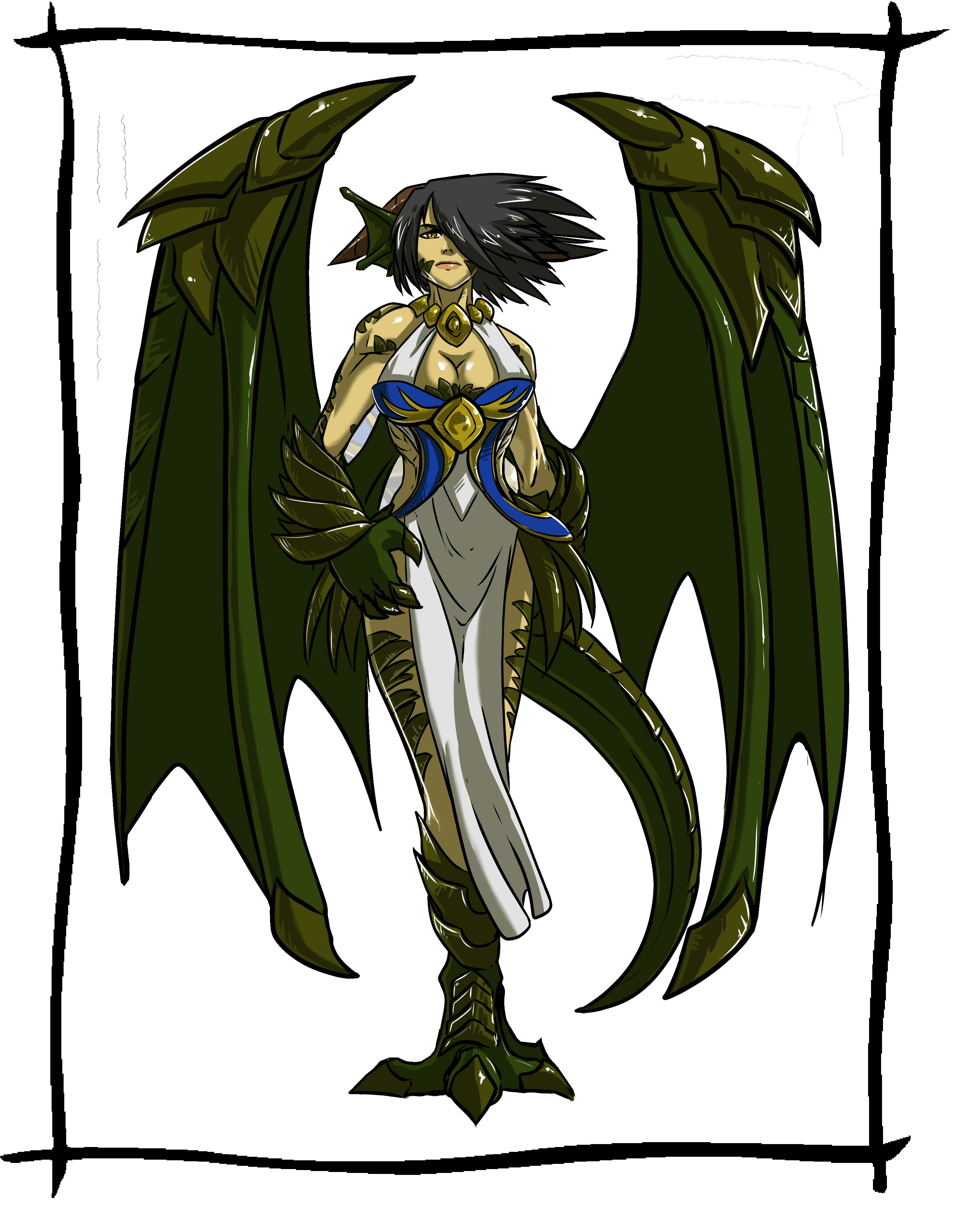
Humanbred
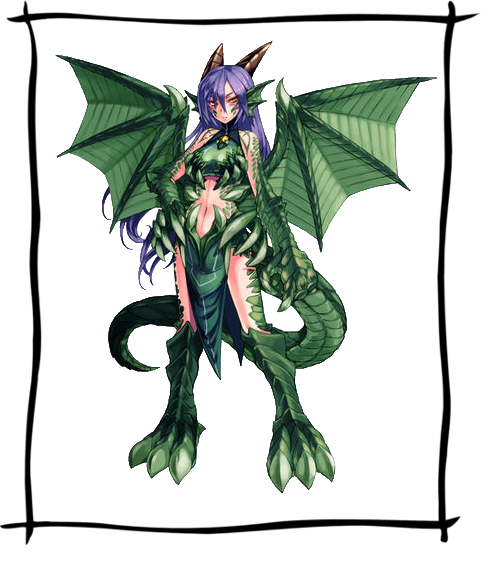
Humanbred traits
- Ability Score Adjustment. Your Constitution increases by 2 and your strength increments by 1.
- Climbing efficiency: You have advantage on ability checks made to climb vertical surfaces.
- Dragon claws & talons: Your unarmed attacks deal 1d4 slashing damage.
- Natural armor: Your scales are thick granting you an unarmored AC of 11 + dexterity modifier.
- **Strong wings:**The support from your wings give you the advantage on Strength and Dexterity throws made against effects that would knock you prone.
Wyvern
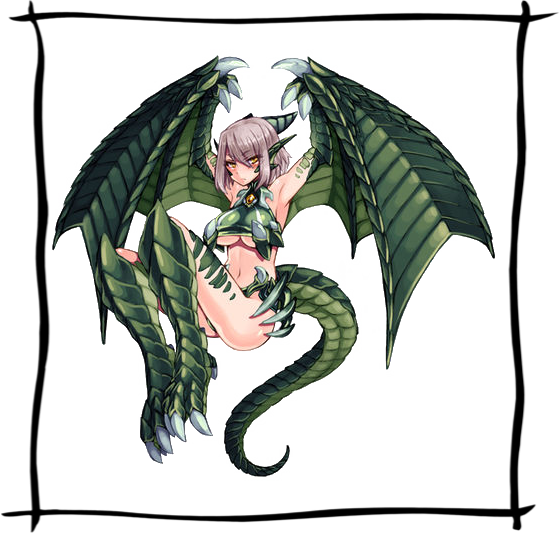
Wyvern traits
- Ability Score Adjustment. Your Constitution increases by 2 and your Dexterity increases by 2.
- Wyvern wings: You can use your wings to fly, and you can spend a reaction to take no damage when you fall, if you have flied less than 40 ft. You can't attack or do spells when flying. You can't gain altitude and each turn you drop 10ft. You can't also turn more than 90º each turn. Your flying speed is 40 feet. You can't fly while holding your weapon.
- Wyvern talons: You can attack with your talons for 1d4 slashing damage.
Jabberwock
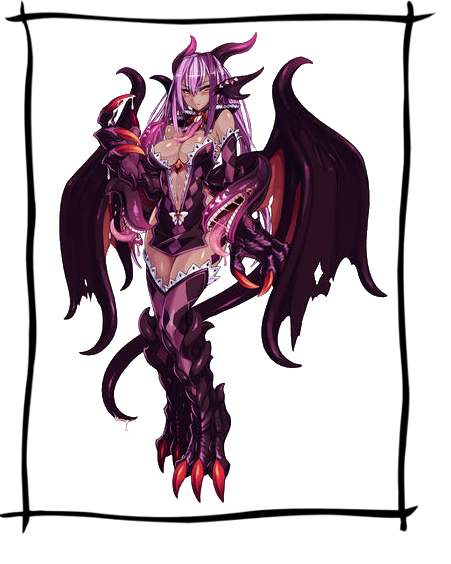
Jabberwock traits
- Ability score adjustment: Your Constitution increases by 2 and your charisma increases by 1
- **Strong wings:**The support from your wings give you the advantage on Strength and Dexterity saving throws made against effects that would knock you prone.
- Extra appendages: You can use your two tentacles to eat, drink or talk, like if they're two extra mouths. Each appendix can hold up to 5 Lb. You can also pick up things that are up to 15 feet away and. Your appendixes are too weak to attack, but you can use items with them.
- Dragon claws & talons: You can attack using your claws and talons, dealing 1d6 slashing damage.
Undines
Undine traits
- Ability Score Increase. Your intelligence increases by 2.
- Age: Determined by subrace.
- Alignment: Undines can have any alignment.
- Size: You have the same size as a human.
- Speed: Your base walking speed is 30 feet. Your swimming speed is 60 feet
- Water breathing: You can stay unlimited time underwater. You can expend one action to give air to any nearby creature, if you are underwater.
- Languages: Common, Elvish
- Subspecies. You belong to one of the three subspecies listed below, of which you must choose one.
High sea undines
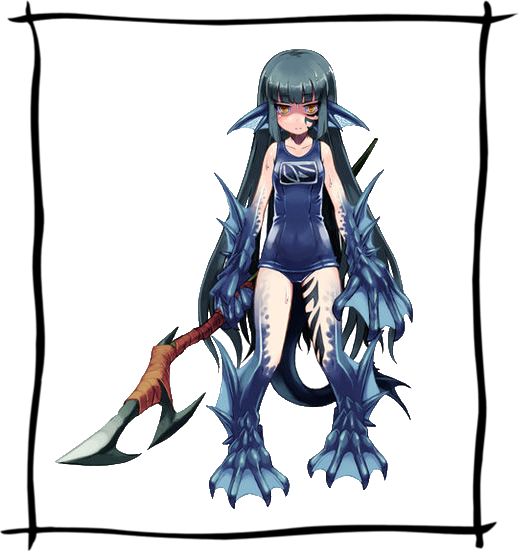
High sea traits
- Ability Score Adjustment. Your dexterity increases in 1
- Age: The same as humans
- Alignment: High sea undines tend to be more on the lawful spectrum.
- Light scales You can swim up to a deep of 1000 Meters. You also have a natural AC of 11
- Armored claws & talons: You can expend your action attacking with your claws and talons, dealing 1d4 of slashing damage. This 1d4 gets upgraded to 1d6 at level 10.
Deep sea undines
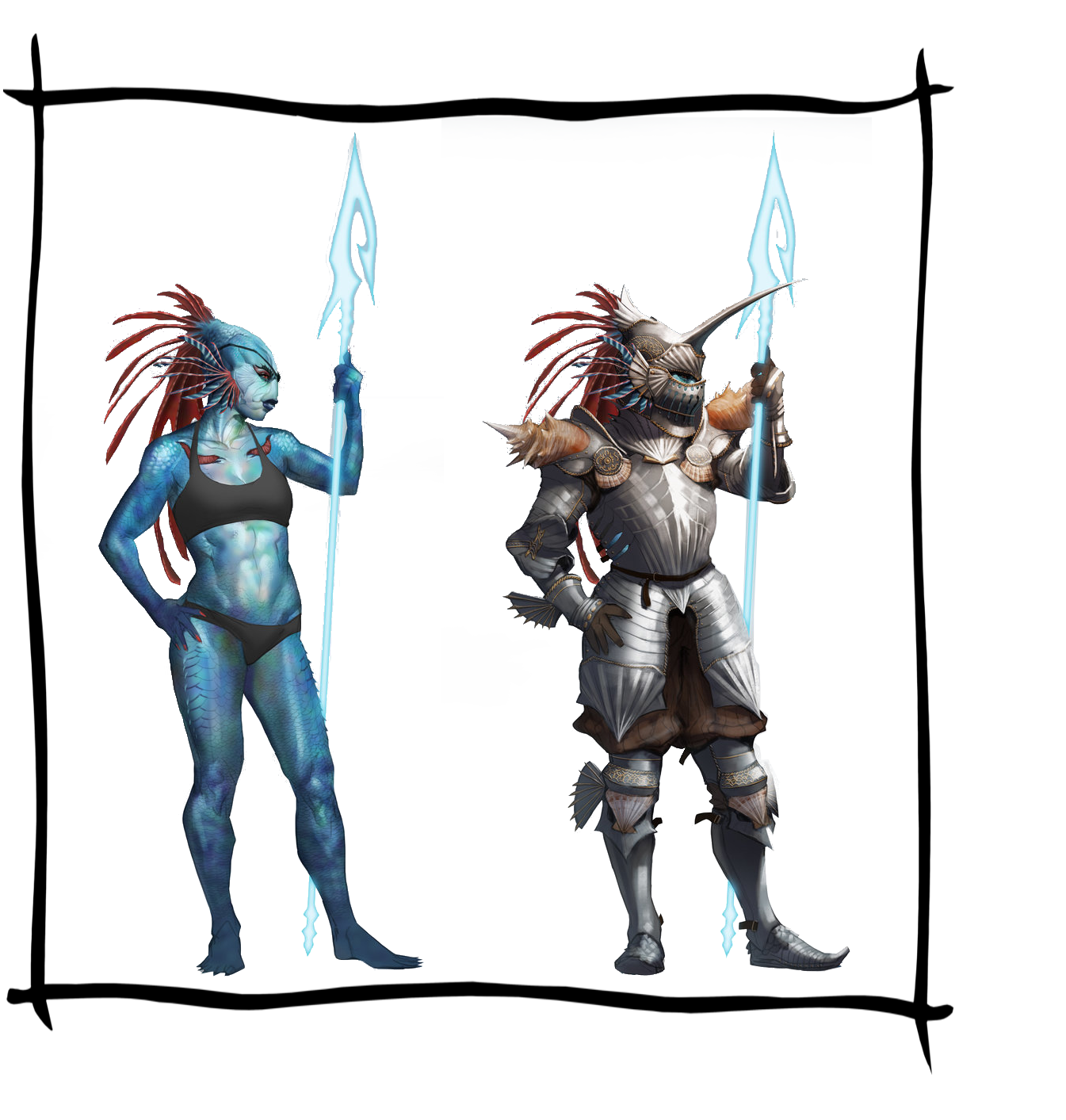
- Age: Deep sea undines reach maturity at 20 years and can live up to 200 years.
- Alignment: Deep sea undines tend to be in the chaotic and lawful part of the spectrum.
- Ability Score Adjustment. Your endurance increases by 1.
- Thick scales Your scales allow you to swim up to a deep of 7.000 M. You have a natural AC of 11 + DEX modifier
- **Fangs:**You can attack with your fangs, that deal 1d4 of piercing damage. at level 10 it deals 1d6 of damage.
- Water Skin: Your body needs constant water, so every time you leave water you roll 1d8. The result indicates the total number of hours that you can expend without water. To recharge your internal reserves of water, you have to be completely submerged in water or drink at least 4 gallons of water. If those hours end and you haven't recharged your water reserves, your Strength and Constitution decrease by 1 and you roll 1d2. The result indicates the days you can expend without water. If you don't re-hydrate in those 1d2 days, you will die.
Pure Undines
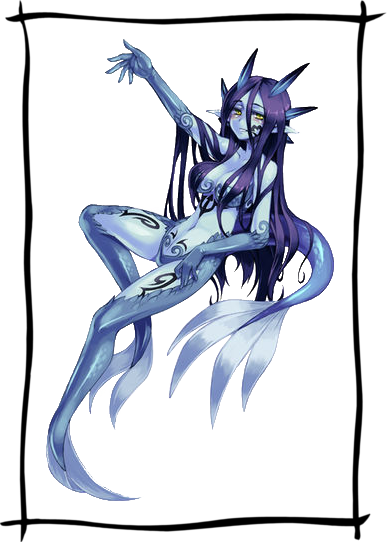
Pure undine traits
- Ability score adjustment: Your charisma increases by 1
- Age: Pure undines reach maturity at 30 years and can live up to 500 years.
- Alignment: Pure undines tend to be in the neutral alignment
- Water affinity: You can swim up to an unlimited depth. Your underwater movement is 70 feet.
- Earth walking magic: If you leave water your leg's fins transform into human feet instantaneously.
- Breathing sphere: When you are underwater, you automatically cast a magical sphere around you of 2 meters of diameter. Any creature inside this sphere can breathe underwater.
- **Magic affinity:**You are proficient with the arcana skill.
Serket
Serket Traits
- Ability Score Increase. Your Constitution increases by 2, and your Dexterity increases by 1.
- Age. Serkets live longer than humans, though not by much compared to other long-lived races. They claim adulthood at about the same age, but can live for up to almost 200 years at most.
- Alignment. Serkets are almost never lawful. Most of them gravitate toward chaotic neutral, but rare exceptions do exist.
- Size. Many Serkets reach a total height of 7 to 8 feet, and nearly the same in width. Your size is Large.
- Speed. Your base walking speed is 40 feet.
- Low Light Vision. You have permanent darkvision.
- Scorpid Physiology. You are immune to any poison damage inflicted by other Serkets, and cannot be poisoned by Serket venom. You have the advantage on Strength and Dexterity saving throws made against effects that would knock you prone, thanks to your 8 scorpion legs. Your size is Medium. You cannot use objects that natural humanoids can below the waist (such as boots, pants, or anything like that, with the exception of custom made armor). You also cannot use mounts.
- Natural Armor. When wearing light or no armor, your AC equals 11 + your Dexterity score.
- Serket Stinger. You may use your action to make the following attack with your stinger.
- **Stinger.**Melee Unarmed Attack: Your Dexterity modifier + your proficiency modifier to hit, range 5 ft., one target. Hit: You deal 1d4 piercing damage, and the target must make a saving throw. The DC for this saving throw equals 8 + your Constitution modifier + your proficiency bonus. A creature takes an additional 1d6 poison damage on a failed save, and half as much on a successful one. The extra poison damage increases to 2d6 at 6th level, 3d6 at 11th level, and 4d6 at 16th level. After you have used your stinger, you must finish a long or short rest before you can use it again.
- Languages. Common
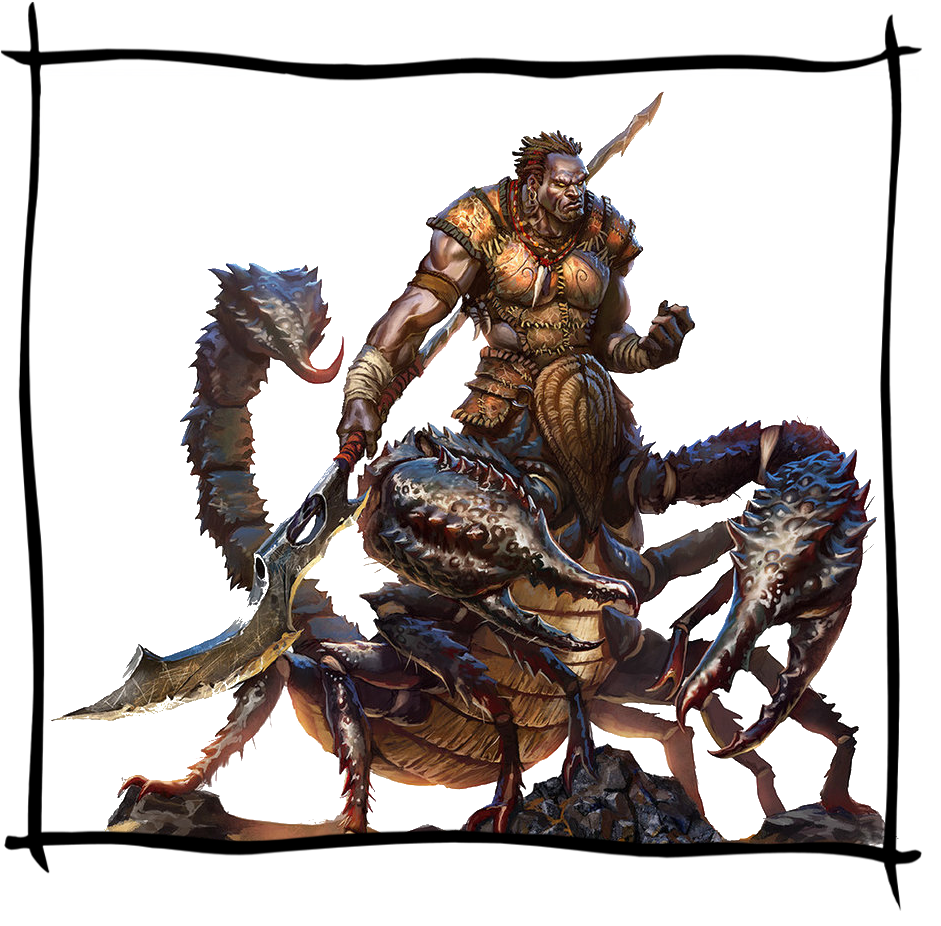
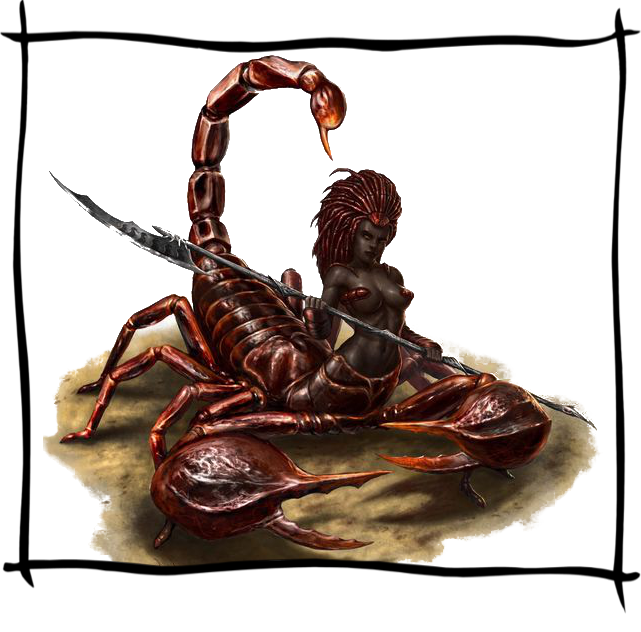
Dullahan
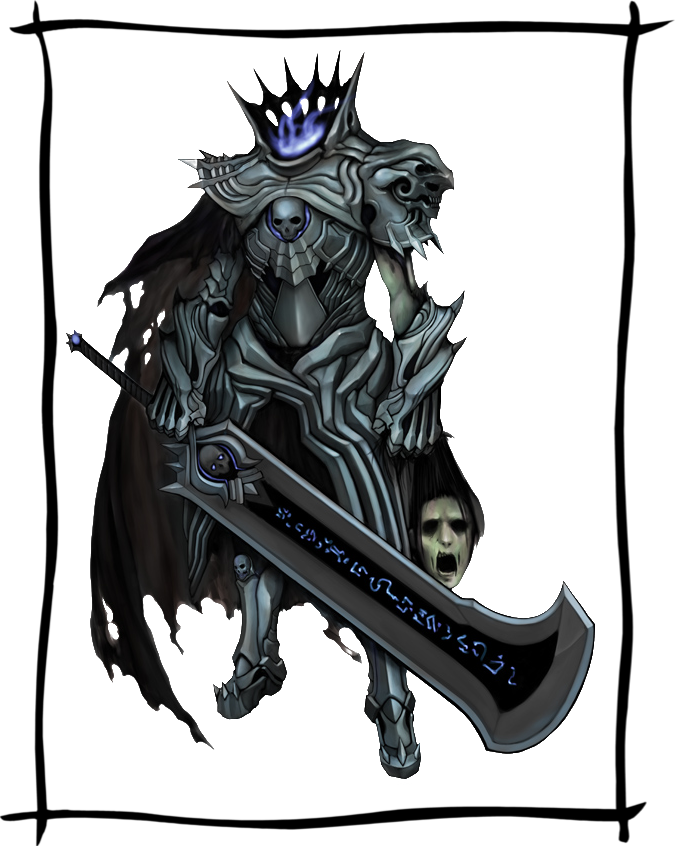
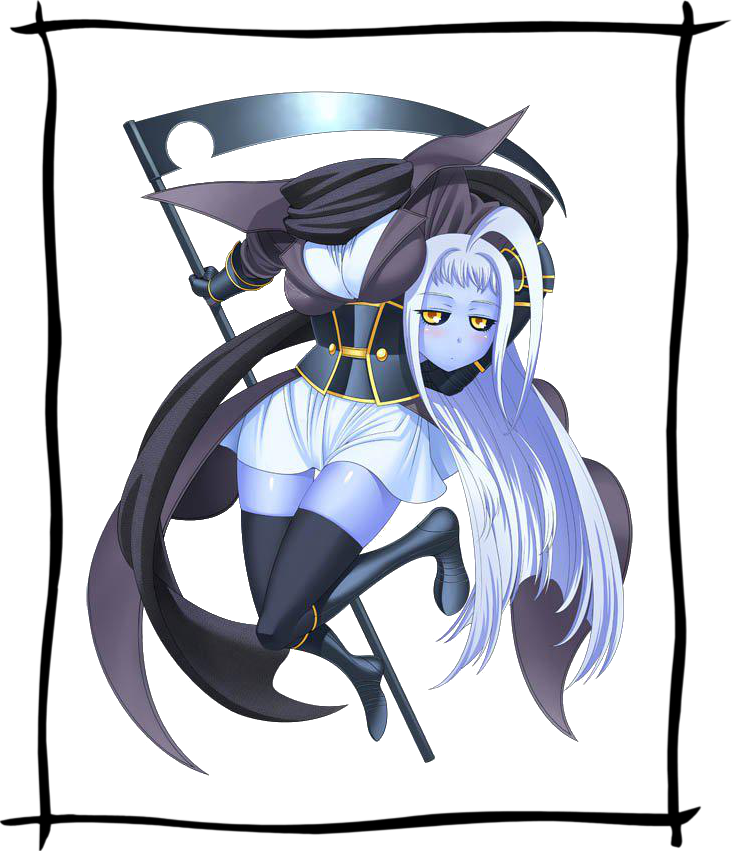 A female Dullahan wearing a very unpractical armor.
A female Dullahan wearing a very unpractical armor.
Dullahan Traits
- Ability Score Increase. Your Constitution increases by 2; your Dexterity increases by 1.
- Age. Dullahan don't have ages. They are simple born with the apparent age they will have for the rest of their "immortal" lives, since they can't die from old age.
- Alignment. Dullahan are primarily neutral as agents of death.
- Size. Your size is medium.
- Speed. Your base walking speed is 30 feet.
- Darkvision. Your head has darkvision with a range of 60 feet, even when detached.
- Fear of Gold. Dullahan fear gold in any form. You cannot carry gold and any form, and you grow nervous when in close proximity of gold. The preferred method of payment for most Dullahan is with gemstones or magical items.
- Headless. You can remove your head without harm, and your head can still speak even when detached. Without your head, your body has blindsight with a range of 20 feet. If you take damage from a critical hit, your head is literally knocked off of your shoulders, and lands somewhere on the ground 5 feet away from your body. During your turn, whenever you move to the same space as your head, you may spend your bonus action to retrieve it.
- Horseman. Every Dullahan has a "familiar" in the form of a jet-black horse, which has a striking familiarity with a Nightmare with black smoke instead of flames. You can summon your steed with a bonus action. The steed has the same stats of a Nightmare, with the exceptions of the "Confer Fire Resistance", "Illumination" and "Ethereal Stride" feats, and it also doesn't have a flight speed. At level 10 the stead has the ability to take the Dullahan to the Fey Wild once every week. You also gain proficiency with the "Animal Handling" skill.
- Fey Ancestry. You have advantage on saves against charming effects, and magic can't put you to sleep. The secret origin of all Dullahans is that they are a type of fairy from the Fey Wild.
- Languages. Common, Abyssal
Feat: Salvager's Scythe
requires Dullahan race
- With a bonus action you can create a smoke scythe which you are proficient with. The scythe has a reach of 10ft, is versatile and causes 1d8 one handed and 2d4 two handed (magical slashing damage). The scythe stays until dismissed with another bonus action. When you kill undead with your scythe, you can use a bonus action to give your head the souls of these creatures. When you do this, you regain hit points equal to half your total hit dice, without actually spending them. The head must finish eating a soul before eating another, this takes 1 minute and your head must remain within 5ft of the corpse. This feat can be used a number of times equal to your wisdom modifier after a short or long rest. At 10th level, you may use one of these usages on any humanoid creature.
Yuki-onna
(Not) accurate myths and legends
There are legends and myths about yuki-onnas summoning eternal winters, freezing empires and starting ice ages. All of those myths are false, any wizard with enough resources and power can do that, but popular culture believed that they were responsible of some of those calamities. Although their ice magic shouldn't be underestimated. Their myths are mostly false, but they are still powerful foes.
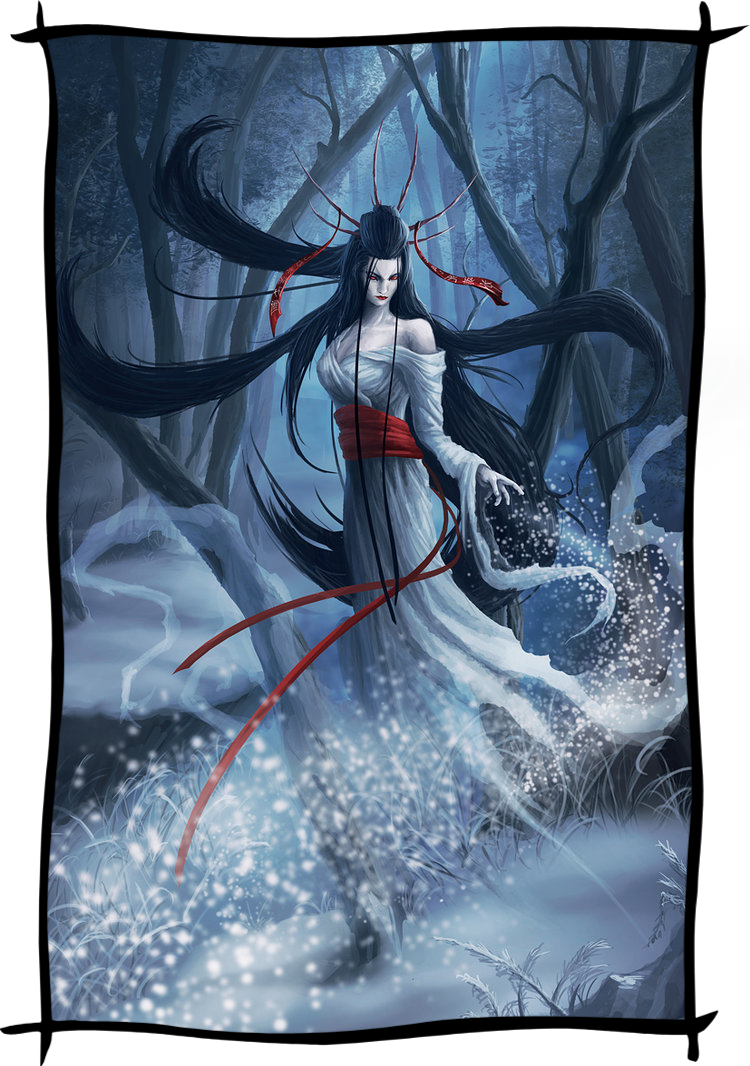
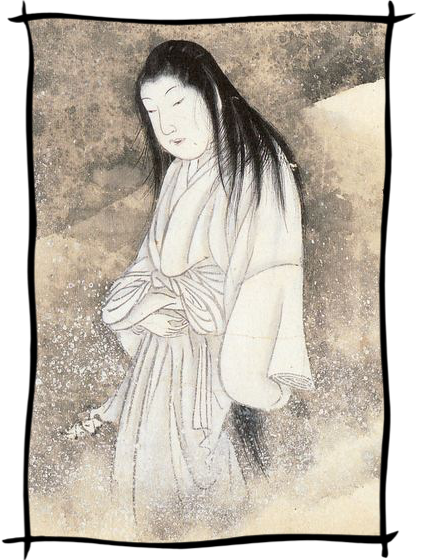
Yuki-onna Traits
- Ability Score Increase: Your Charisma increases by 2; your Intelligence increases by 1.
- Age: Yuki-onna reach maturity at about the same rate as humans, although they actually live for hundreds of years longer.
- Alignment: Yuki-onna are usually Neutral in alignment. However, a single Yuki-onna may be any alignment they wish.
- Size: Yuki-onna are about the same size of regular humans. Your size is medium.
- Speed: Your base walking speed is 30 feet.
- Cold Absorption: You are immune to cold damage. Whenever you are subjected to cold damage, you take no damage and gain a number of temporary hit points equal to the cold damage dealt.
- Heat Vulnerability: You have permanent vulnerability to fire damage. You also have disadvantage on all attack rolls and ability checks whenever you are adventuring in environments of extreme heat, like deserts or near pools of lava.
- Yuki-onna Magic: You know the Ray of Frost cantrip. When you reach 3rd level, you can cast the Ice Knife spell once per day. When you reach 7th level, you can also cast the Ice Storm spell once per day. Intelligence is your spellcasting ability for these spells. You use Charisma when casting this spells. You can't heal yourself using this yuki-onna magic, even if it's from another Yuki-onna.
Ogre
Ogre Traits
- Ability Score Increase. Your Strength increases by 2.
- Age. Lifespan will vary based on subspecies
- ** Alignment.** Most often neutral or chaotic neutral, though exceptions do exist.
- Size. Size varies depending on your subspecies
- ** Speed.** Your base walking speed is 30 feet.
- Darkvision. You have superior vision in the dark and dim conditions. You can see in dim light within 60 feet of you as if it were bright light, and in darkness as if it were dim light. You can't discern color in darkness, only shades of grey.
- ** Ogre Strength.** You have advantage on Strength checks and Strength saving throws. Encumbrance brought about by any armour or equipment you are wearing or carrying is reduced by half.
- Languages. Common, Giant
- Subspecies. You must choose one of the following subspecies:
Half-human
Half-human traits
- Ability Score Adjustment. Your Wisdom increases by 1.
- Size. Half-human ogres are typically between 7 and 8 feet tall. Your size is Medium.
- Human Training. You know one additional language of your choice, and you also have proficiency in one additional weapon type of your choice. You have proficiency in 2 skills of your choice and 1 tool proficiency.
Oni
Oni Traits
- Ability Score Adjustment. Your Dexterity increases by 1.
- Size. Oni are shorter than other ogres, and typically stand only two meters tall on average. Your size is medium.
- Fearsome Presence. you gain proficiency in the intimidation or insight skill, and you cannot be charmed.
- Second Wind. When you are reduced to 0 hit points but not outright killed and regain consciousness, you gain temporary 1d6 hit points, and an additional 1d6 at levels 10 and 20. You can’t use this feature again until you finish a long rest.
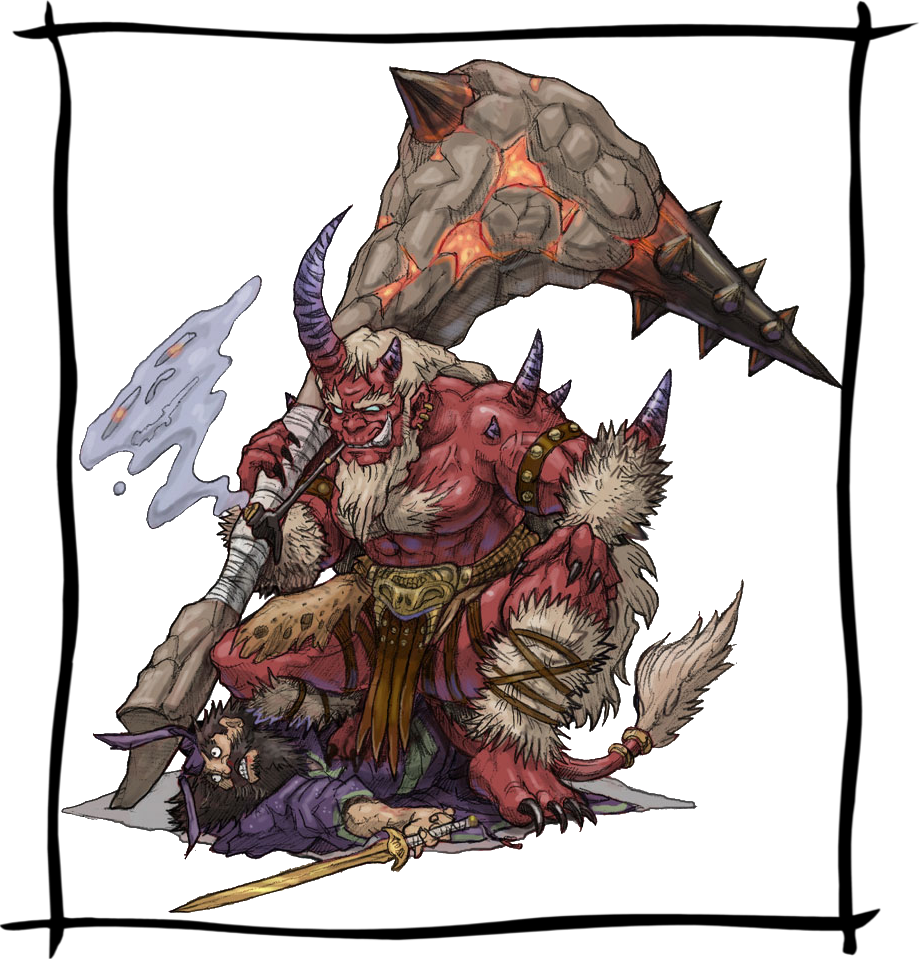
Troll
Troll traits.
- Ability Score Adjustment. Your Constitution increases by 1.
- Size. Trolls often stand over three meters tall. Your size is large.
- Troll Regeneration. You may spend a bonus action during your turn to immediately regain hit points equal to 1d4 (1d6 when you reach level 10) plus your character level. Alternatively, if you are unconscious, you may use this ability instead of making a death saving throw to immediately stabilize. This ability will not function while you have a level of exhaustion. To use this ability again you have to take a short or long rest.
- Troll Fortitude. You have advantage on Constitution saving throws made for ingesting poisonous or distasteful substances or from inhaling unpleasant smells, such as a monster's Stench ability or the stinking cloud spell. You also have advantage on saving throws against mundane diseases. Magical diseases, such as mummy rot, affect you normally.
Swamp ogres
Swamp ogres traits
- Ability score increase You strength increase by 1
- Size: Swamp ogres are usually between 7 and 8 feet tall. Your size is medium.
- Ogres have layers: You have +1 AC when you aren't using armor.
- Wrestling champion: Swamp Ogres prefer using their own pair of hands to cause some damage and get a +1 to hit and damage bonus when using unarmed attacks.
- Poison resistance: You have resistance to poison attacks.
- Fire vulnerability: You are vulnerable to fire damage
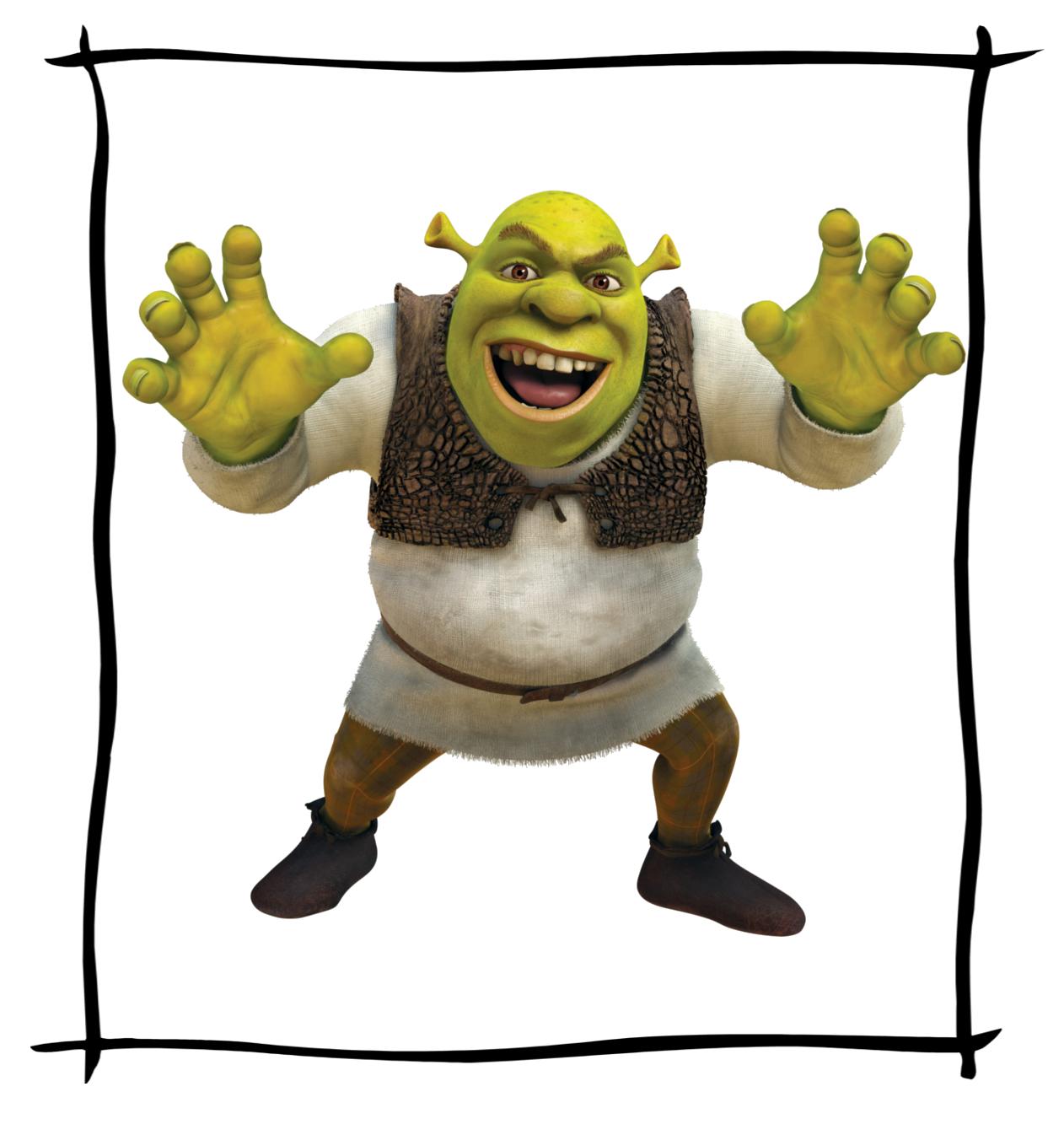 What are you doing in my swamp!?
What are you doing in my swamp!?Succubus
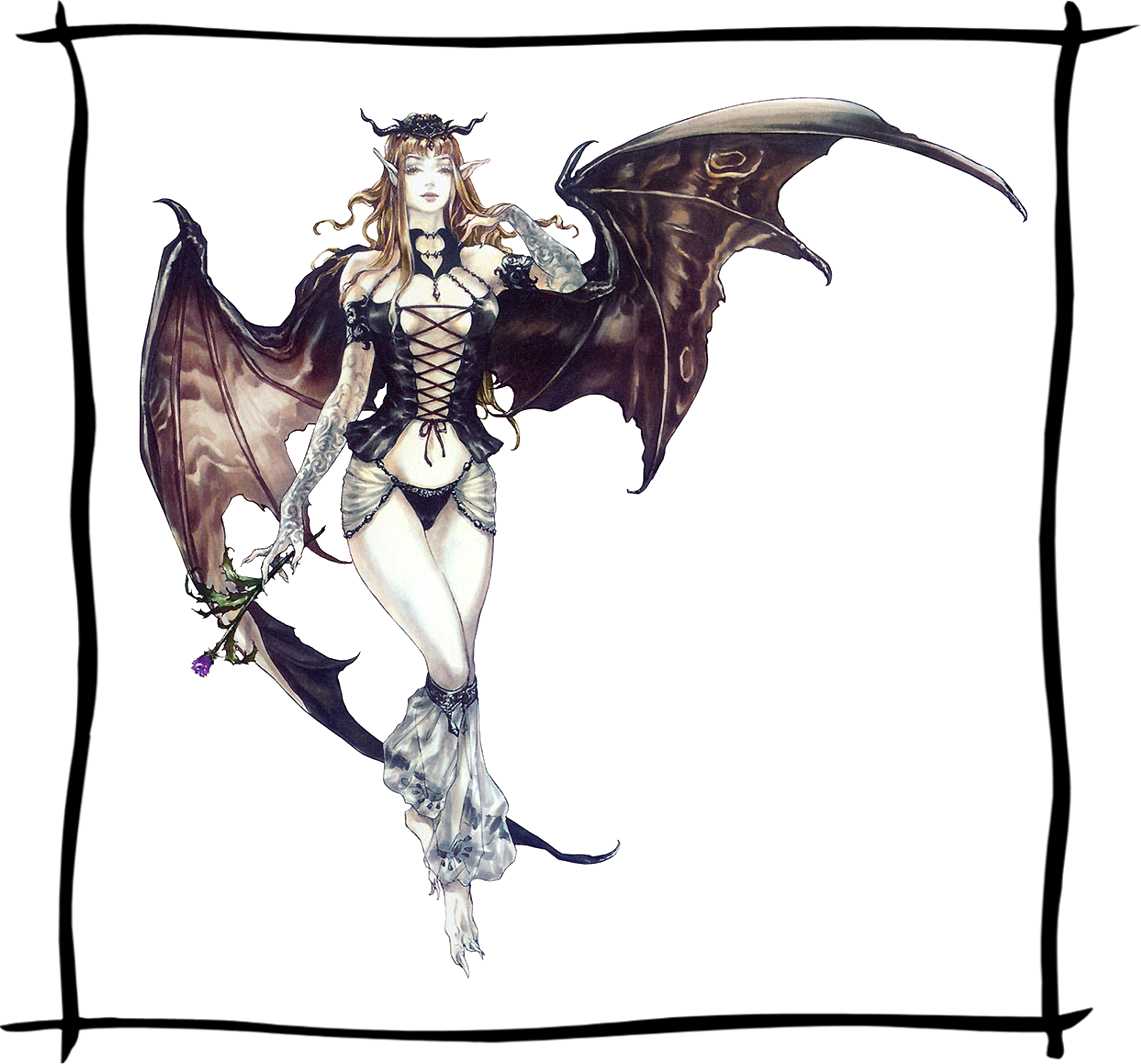
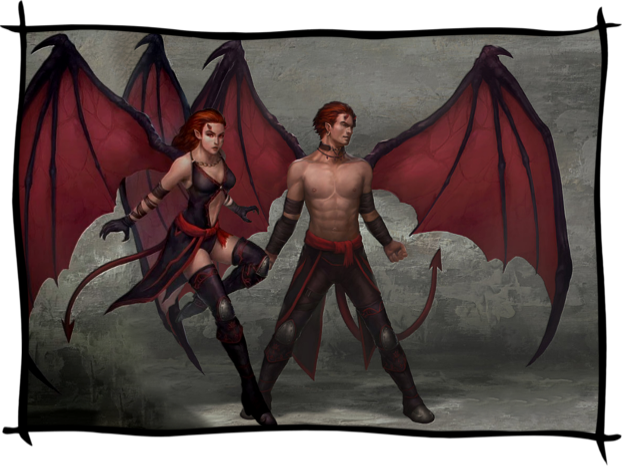
Succubi traits.
- Ability score increase: Your charisma increase by 2
- Age: Succubi reach maturity at the same age as humans, and they can live for hundreds of years.
- Alignment: Succubi are usually chaotic, but isn't strange for succubi to be neutral or lawful.
- Size: Your size is around 7-8 feet.
- Speed: Your walking speed is 30 feet
- Change appearance: You can cast the disguise self spell once with this trait, and you regain the ability to cast it this way when you finish a long rest. Charisma is your spellcasting ability for this spell.
- Charming nature: You can use the spell "Charm person" but the duration is reduced to 30 minutes. To use it again you have to take a long rest.
- Subspecies. You belong to one of the following subspecies:
Human-breed
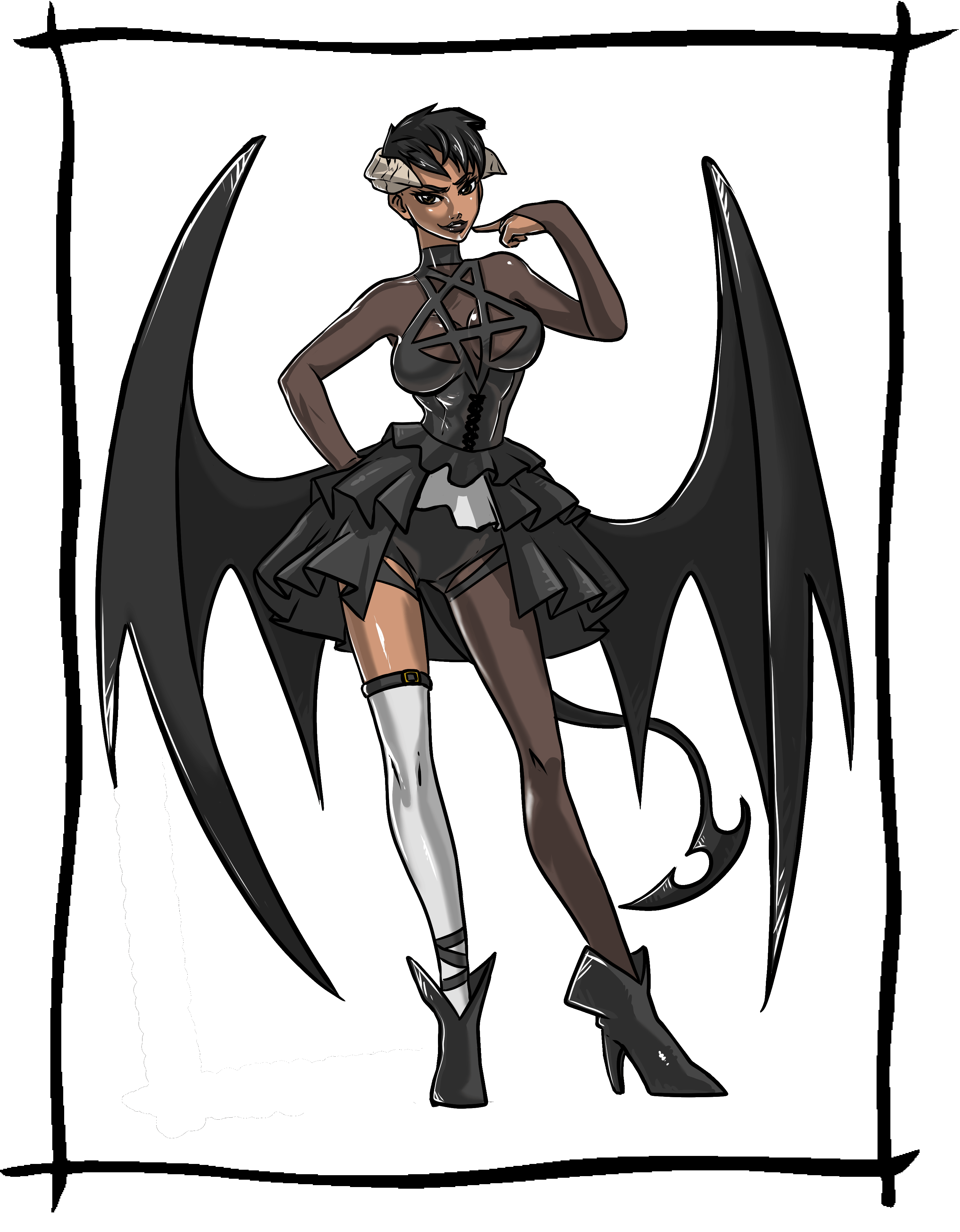
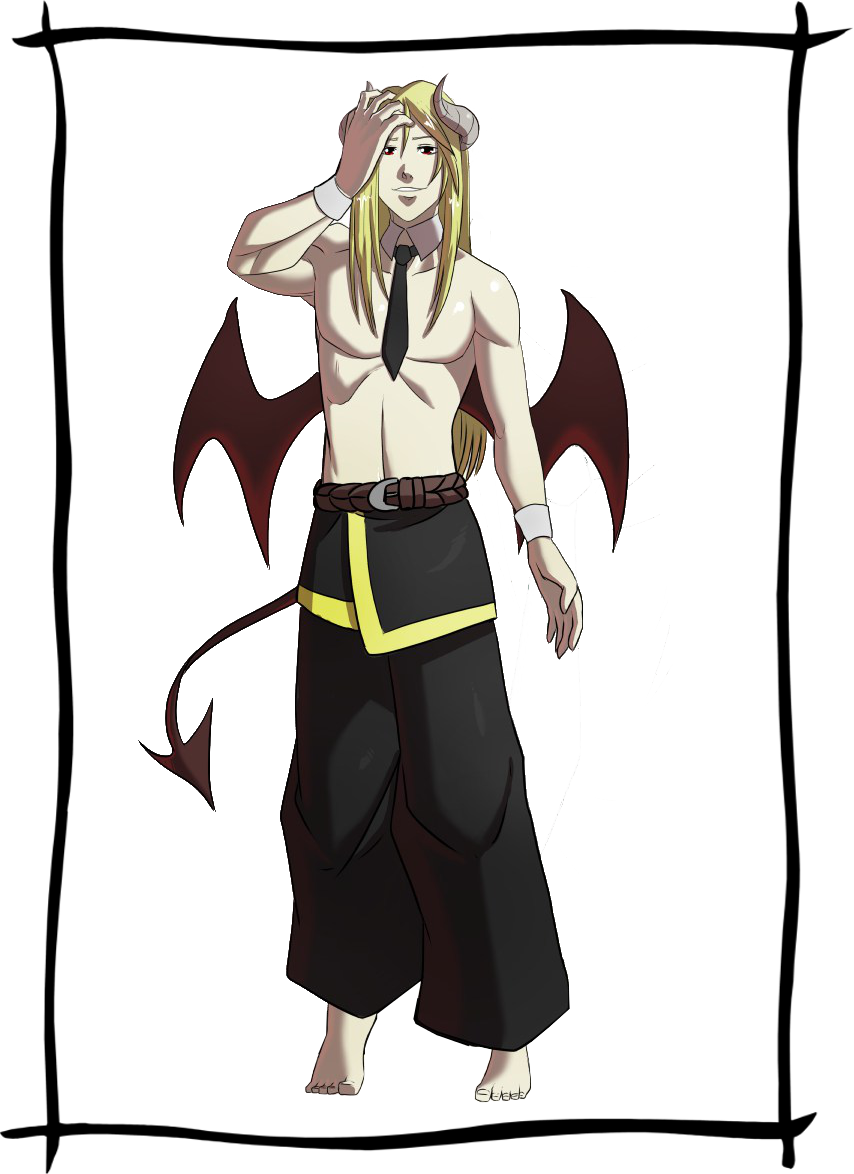
Human-breed traits
- Ability Score Adjustment. Your Dexterity increases by 1.
- Human Empathy. You have proficiency in the Persuasion skill.
- Human Training. You are proficient with one additional weapon type of your choice.
Demonic succubi
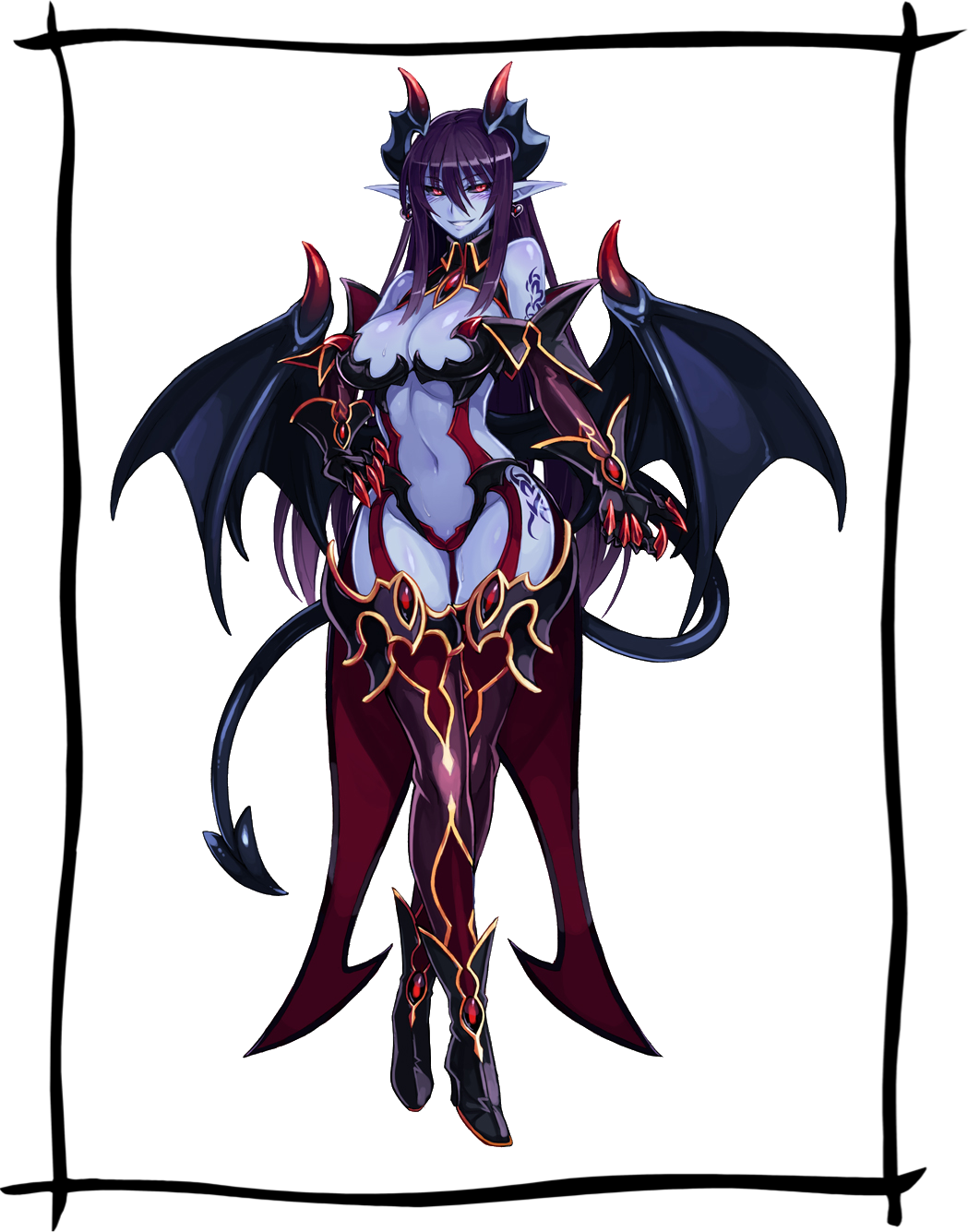
Demonic succubi traits
- Ability Score Adjustment. Your strength increases by 1.
- Changing appearance limitation: You can't change your blue skin tone with any spell, but Wish will still work.
- Hellish nature: You know the thaumaturgy cantrip. Once you reach 3rd level, you can cast the hellish rebuke spell once per day as a 2nd-level spell. Once you reach 5th level, you can also cast the darkness spell once per day. Charisma is your spellcasting ability for these spells.
Lilim
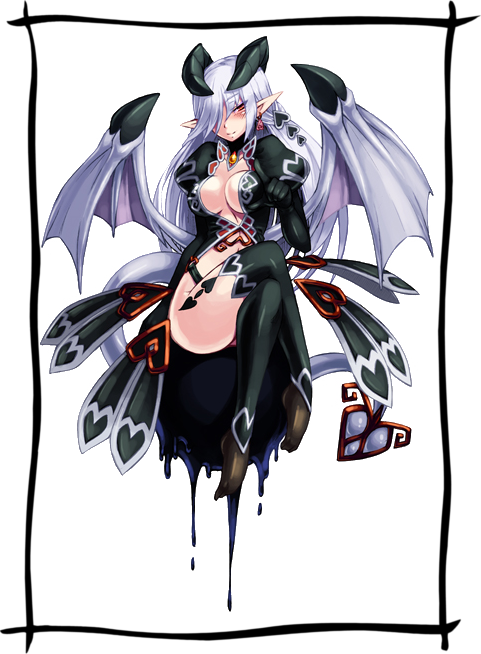
Lilim traits
- Ability Score Adjustment. Your intelligence increases by 1.
- Changing appearance limitation: You can't change your eye colour and your hair color (but can still dye them). The only way to change them is with the spell Wish.
- Magic affinity: You are proficient with spellcasting. Also, you can use Identify and Detect Magic once a day for free, but to use it again you have to take a Long rest.
Demi-mindflayer
Demi-mindflayer traits
- Ability Score Adjustment. Your Intelligence increases by 2 and your Wisdom increases by 1.
- Age: Demi-mindflayers reach maturity at the same age as humans, and can live up to 200 years.
- Alignment: Demi-mindflayers tend to be in the neutral spectrum
- Size: You have the same size as a human
- Speed: Your base walking speed is 25 feet.
- Languages: Common, deep speech.
- Tentacles You have 6 tentacles around your waist. Each tentacle can hold up to 5 pounds and reach up to 10 feet. Your tentacles are to slippy to swing a weapon or manipulate a focus.
- Psychic resistance: You have the advantage when doing a save throw against the spell Charm or similar ones. The ability Mind Blast only does 2d8 psychic damage and you won't get stunned.
- Psychic blast: You use your psychic power to overload with psychic energy one creature in 30 feet to deal 1d6 psychic damage. At level 10 you deal 1d8 damage, and at level 20 2d8 psychic damage. To use this ability again you have to take a long rest.
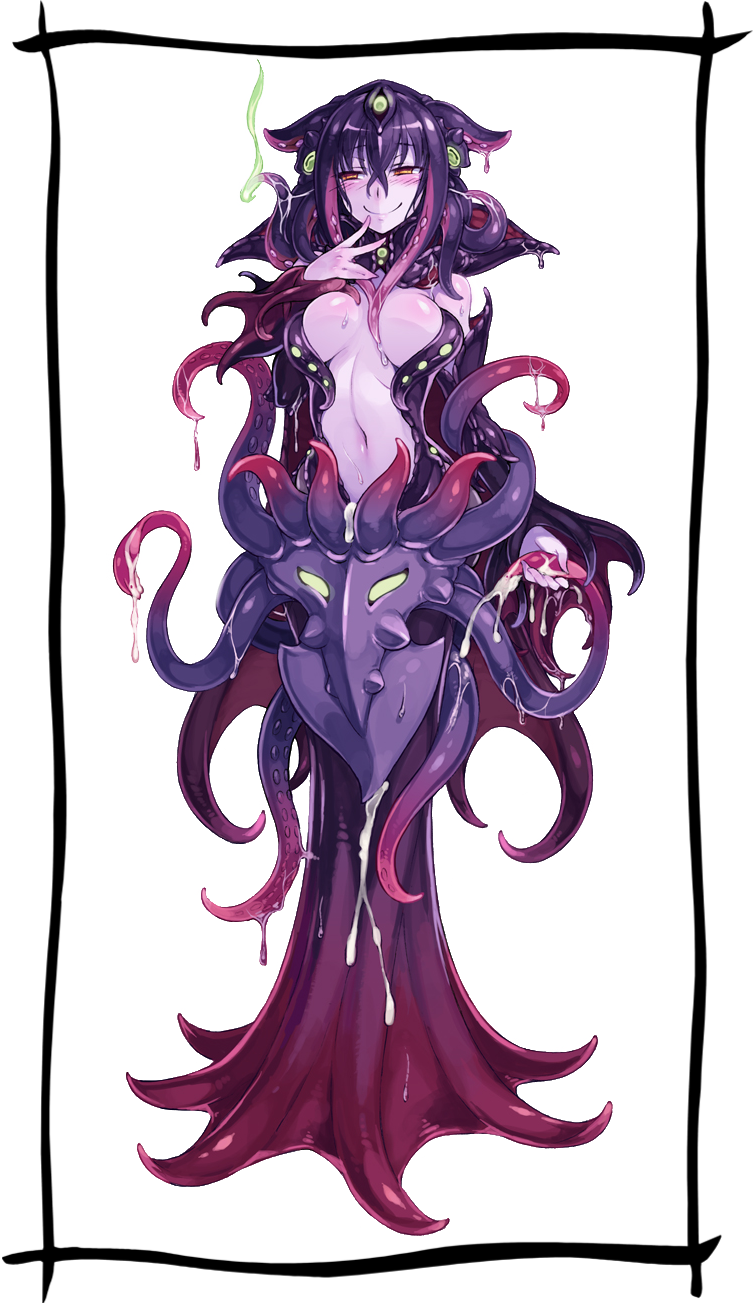
Demi-Hellhound
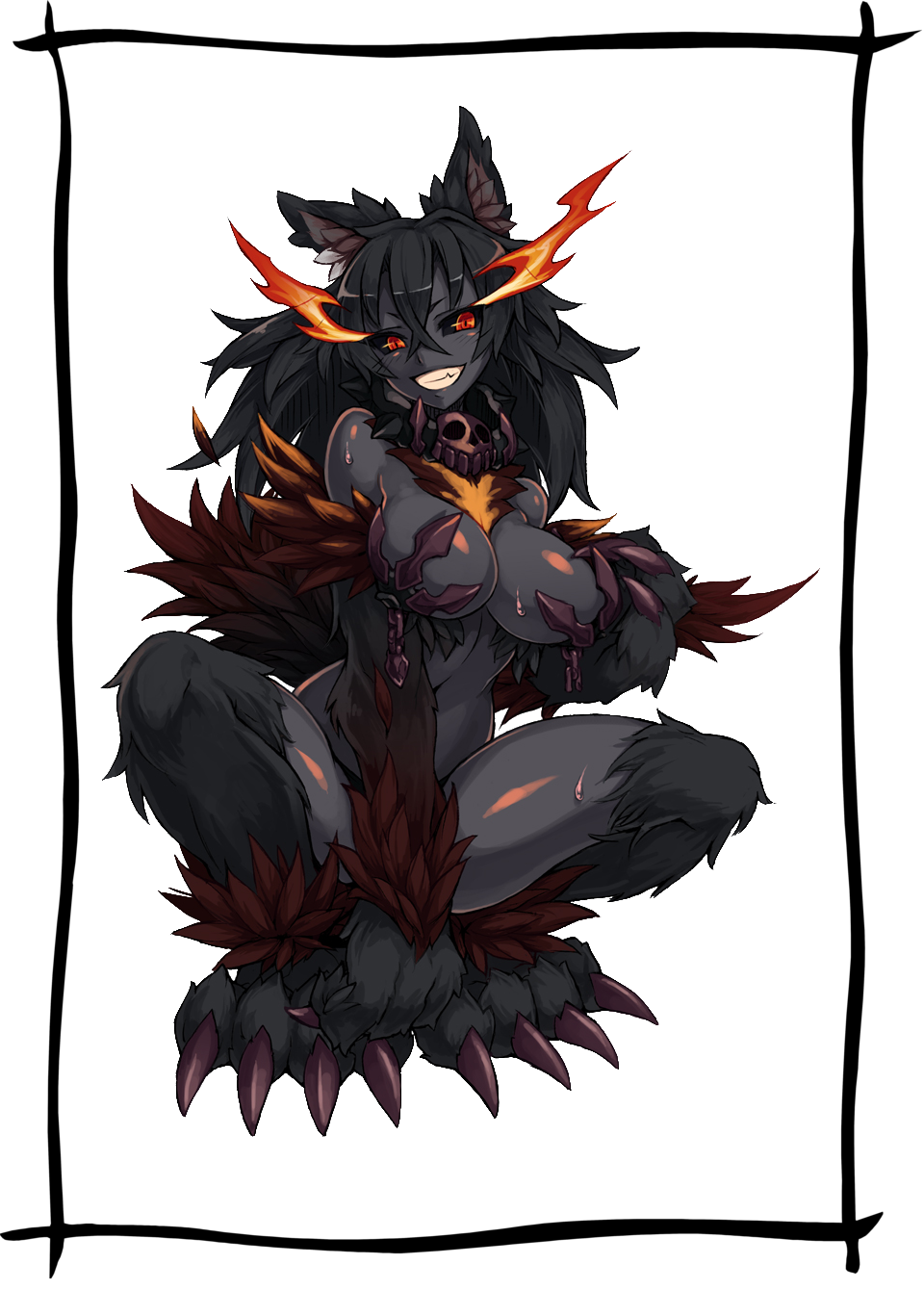
Demi-hellhound traits.
- Ability Score Increase: Your strength increase by 2, your constitution by 1.
- Age: Demi-hellhounds reach maturity at the same age as humans, and can live up to 150 years.
- Alignment: Demi-hellhounds are usually chaotic beings. Do to this, most hellhounds have a chaotic alignment.
- Size: Demi-hellhounds usually are 7-8 feet tall. Your size is medium. Adult hellhounds weight around 220 lbs.
- Speed: Your movement speed is 35 feet.
- Keen Hearing and Smell. Demi-hellhounds have advantage on Wisdom (Perception) checks that rely on hearing or smell.
- Pack Tactics: You have advantage on attack rolls against a creature if you have an ally within 5 feet and that ally isn't incapacitated.
- Bite. You can use your bonus action to bite one creature, dealing 1d4 damage. At level 5 you the damage is upgraded to 1d6 + 1d4 fire damage.
- Fire breath You can use your action to exhale destructive fire energy in 15ft cone. All creature on the attack radius must take a Dexterity save. The DC for this saving throw equals 8 + your Constitution modifier + your proficiency bonus. A creature takes 2d6 damage on a failed save, and half as much damage on a successful one. The damage increases to 3d6 at 6th level, 4d6 at 11th level, and 5d6 at 16th level. To use this ability again you have to take one long rest.
- Hellish resistance: You have resistance to fire damage
- Ice vulnerability: You are vulnerable to cold damage.
- Languages: Demi-hellhounds can speak and read Common and Infernal.
Werecats
Werecat Traits.
- Ability Score Increase. Your Dexterity increases by 2.
- Age. Werecats have the same lifespan as humans.
- Gender. Male and female
- Alignment. Werecats can have any alignment.
- Size. Your size is medium. See the three subspecies below for specific average heights.
- Speed. 35 feet
- Animal Paws: You have proficiency with unarmed attack, that deal 1d4 of damage, but you have disadvantage in weapon rolls, unless your weapon has been modified for your proper wielding.
- Animal ears: A werecat can hear things that regular humans can, thanks to its advanced ears. A werecat gains advantage on passive Perception checks to identify unseen attackers, and creatures sneaking within 15ft of a werecat have disadvantage on sneak rolls.
- Climbing efficiency: You have advantage in climbing rolls.
- Languages. Common
- Subspecies. You must choose one of the following subspecies
Nekomata
Nekomata Traits
- Ability Score Adjustment. Your dexterity increases by 1.
- Size. Nekomatas are 6 feet tall, helping them to sneak around and do acrobatics.
- Small & light body: Thanks to their bodies, nekomatas have advantage in rolls with acrobatics involved, also, you are harder to detect, so you have the advantage in sneak rolls. But if an enemy with more strength than you hits you, you have to pass a strength check to avoid flying away. If you fall this roll, you will be launched in a straight line in a distance equal to the strength difference between you and the enemy (In meters).
Gyoubu Danuki
Gyoubu Danuki Traits
- Ability Score Adjustment. Your charisma increases by 1.
- Size. Danukis have the same size as humans.
- Gold Compass: You can use this ability to detect all gold in a 500ft sphere around you. This ability can only be activated once, and it requires a rest (short or long) to be used again. It detects anything made of gold, not only coins.
- Human extremities: You don't have the Animal Paws and Climbing efficiency traits. Your speed is 30 feet.
- Natural merchant: Your buying price is a 10% better. Your selling price is a 15% better.
Jinko
Jinko Traits
- Ability Score Adjustment. Your strength increases by 1.
- Size. Jinkos are 8 feet tall.
- Strong legs: Your jumping distance is double, but if you have a crippled leg or a crippled arm your jump distance is the normal one.
- Tiger Claws: Your unarmed attacks do 1d6 of damage instead of a 1d4
Anubis
Anubis Traits
- Ability Score Adjustment. Your intelligence increases by 1.
- Size. Anubis have the same size as a human
- Tactical Genius: If you are ambushed or someone tries to sneak attack you, you can roll for intelligence. If you succeed, you block the attack and, for the next turn, you have the initiative. If you fail, you receive 1d6 extra of damage (levels 1-10) or a 1d10 of extra damage (levels 11-20) and, for the next turn, you have the lowest initiative. You can choose if you want to use this ability or not.
- Desert Wanderer. You have advantage in Perception and Investigation rolls related to deserts, plus you always know your way through that area and gain 10 feet speed while there.
- Anubis curse: You can cast this spell without needing to do a roll. The spell has a range of 32 feet and need one turn to be charged. If the spell hits the objective, it will be paralyzed for 1 turn (level 3-9) 2 turns (level 10-15) or 3 turns (level 16-20)-. Once used, you need to rest to use this ability again.
Undead
Undead Traits
- Ability Score Increase. Your Constitution increases by 2.
- Age. Indefinite
- Gender. Male/Female
- Alignment. Any alignment.
- Size. Your size is medium.
- Speed. Your base walking speed is 30 feet.
- Darkvision. Your undead nature grants superior vision in the dark and dim conditions. You can see in dim light within 60 feet of you as if it were bright light, and in darkness as if it were dim light. You can't discern color in darkness, only shades of grey.
- Undead Nature. You are immune to poison damage and cannot be poisoned. You also no longer require food or drink, though you can if you wish. You count as an undead creature for all spells and abilities that affect the undead. You are immune to disease and reat exhaustion as if it was one level less. Instead of sleeping, you enter an inactive state for 4 hours each day. You cannot dream in this state; you are fully aware of your surroundings and notice approaching enemies and other events as normal.
- Languages. Common, and one additional language of your choice.
- Subspecies. You must choose one of the following types of undead:
Zombie
The most common form of undead, Zombies are vulnerable to the same manner of decay a normal corpse would exhibit, and unless prosthetic intervention is taken, their bodies will presumably rot past the point of functioning. Said prosthetic intervention can be in the form of being doused in preservative chemicals or receiving artificial organs.
- Ability Score Increase. Your Strength increases by 1.
- Zombie Fortitude. If you suffer damage that reduces you to 0 hit points, you can make a Constitution saving throw with a DC of 5 + the damage taken, unless the damage is radiant or from a critical hit. On a success, you drop to 1 hit point instead.
Mummy
Mummies are an undead subspecies from dry desert areas. Their arid environment keeps them safe from decay, and even without preservative measures, their bodies remain intact. However, their arid environment has also robbed their skin of its moisture, requiring them to take long baths to replenish their fluids. They also supplement this by sucking the life force out of young men to preserve their beauty, but this tragically functions only as a placebo. Since many Mummies were ancient royalty or nobility in life, they often have difficult personalities.
- Ability Score Adjustment. Your Int increases by 1.
- Life Drain. You may spend your action to make a melee weapon attack (Str or Dex modifier + Prof) against a creature of your choice. On a successful hit, the target suffers 3 (1d6) necrotic damage, and must make a Constitution saving throw, equal to 8 + your Constitution modifier + your proficiency bonus. On a failed save, the target's hit point maximum is reduced by an amount equal to the damage taken. At the same time, you also regain hit points equal to the damage taken. This reduction lasts until the target finishes a long rest, and the target dies if this effect reduces its hit point maximum to 0. The necrotic damage increases to 2d6 at 6th level, 3d6 at 11th level, and 4d6 at 16th level. You can’t use this feature again until you finish a long rest.
Jiang Shi
Jiang Shi are an undead subspecies found primarily in Asian countries, such as China and Taiwan. Unlike standard zombies, hopping vampires are severely affected by the symptoms of rigor mortis, making their joints, especially their elbows and knees, particularly stiff. Because of this, they must practice tai chi every morning to stretch. However, their joints always stiffen to some degree while they sleep, forcing them to hop around with their elbows and knees locked straight out.
- Ability Score Adjustment. Your Dexterity increases by 1.
- Rigor Mortis. Due to the regular onset of stiffening joints, you must spend 15 minutes to regain your former mobility at the end of every long rest. Until you do so, your movement speed is reduced by half, you have disadvantage on all attack rolls and skill checks that require physical activity, and you cannot cast any spells that require somatic components.
- Vampiric Bite. Whenever you grapple, incapacitate, or restrain a creature, you gain the ability to bite that creature dealing 1d6 piercing damage. Furthermore, you can spend your turn drinking the blood of that creature, dealing 1d6 necrotic damage and healing as much. The creature's hit point maximum is reduced by an amount equal to the necrotic damage taken, and you regains hit points equal to that amount. The reduction lasts until the creature finishes a long rest, it dies if this effect reduces its hit point maximum to 0. It also gives you an AC equal to 10 + Strength or Constitution + Dexterity.
Ghost
Lingering souls of the dead and departed, ghosts are raised as servants by potent necromancers or hold onto the world themselves when there is unfinished business they have yet to accomplish. Adventurous ghosts either escape the masters that raised them, or have something unresolved from their days amongst the living that requires they journey far and wide. If a ghost is charged with unfinished business, it can take many forms, from protecting a loved one, to keeping a particular item safe, to simple revenge. Ghosts are spectral and luminous, but solid to the toch, and can interact with objects as mortals do. All ghosts carry obvious and sometimes twisted marks of what caused their death, which are often quite disturbing to all but the most jaded mortals.
- Ability Score Adjustment. Your Charisma or Wisdom score increases by 1.
- Spectral Flight. You gain a fly speed equal to half your land speed, rounded up to the nearest 5 feet.
- Withering Touch. Your unarmed strike deals necrotic damage, as well as additional damage equal to your Constitution modifier.
- Incorporeal Stride. You can move through other creatures and objects other than physical barriers (such as walls or ceilings) as if they were difficult terrain. Once per short rest, you may pass through up to 10 feet of physical barriers (treating them as difficult terrain) as a part of your movement. You take 1d10 force damage if you end your turn inside an object or barrier, and are immediately ejected to the closest available space if within a barrier.
Optional Feat
If your DM allows the use of feats, your ghost character has access to the following special feat.
Ghostly Magic
Prerequisite: Undead (ghost) Your soul is especially powerful, and you may channel its power into a semblance of mortal magic. Each day, you may cast up to three of the following spells: blink, catapult (Elemental Evil Player's Companion, page 15), charm person, fear, and invisibility (self only). You regain the ability to cast these spells when you finish a long rest.
Setting
Then, a war broke out, and the warring of the races brought an end to this era. Those who didn't partake in the war, those seeking a resolution to this conflict, those who thought the world would be devoured by the Shadows of Lolth, fled to the last bastion of hope, the City of Luminarium...
Luminarium was on the continent of Levae, and was blessed with peace, by those that sought it. After the remnant of the races settled into the city, the Council of Luminarium closed the gates to the world, and had its most powerful Magi separate the city and some of the surrounding landmass and raise it into the sky.
After 200 years of magical and techinical (***"magitech"***) study, airships were constructed underground, around the perimeter of the City. These were the first of the airships built to connect the City to the World Below.
When they were completed, there was an accident. A group of explorers brought a disease that caused some of the populace to go mad. This was countered via the quick work of the Medical Corp., who diagnosed the disease as Travellers' Sickness. Travellers' Sickness has not been seen for nearly 2,000 years, so it has become obscured by history.
Via modern airships, Explorers now delve to the world below to gather lost history, from the continents below. The party hears of rumours that a 'mother lode' of ancient wonders has been found recently, but is guarded by fierce creatures and such. Some adventurers have been mauled and injured, and some haven't come back.
Lunar Cycles
The Blood Moon has one cycle per year, whereas the Platinum Moon has twelve, one for each month. On the fifth Blood Moon, the New Council is elected. The Platinum Moon is so aptly named, because it is said the first Dragon is to reside in it, as a way of guarding the creatures of the world.
City / Continent Name
Continent of Levae Capital: Luminarium
Major Races
All races from PHB 1
Minor Races
All other races
Major City Facilities
Population of City and Description of Systems
The population at last count (every ten years) was around 50,000 on the surface of Luminarium, with a further 200,000 in the lower levels of habitation. There are currently four underground floors, with plans to build two more.
The Surface has more open areas, whereas the Underground is built more compacted to the sides, to allow for waste management and for water reclamation and recirculation. Most foodstuffs are grown in Underground nurseries, with some in the Surface Outer City.
The waste management systems in Luminarium is housed in the central underground, with workers commuting there to oversee its operation, which is for treating waste for reclamation and recirculation to both the people and nurseries. As there is no rainfall in Luminarium, the gardens are fed by recirculation piping, to allow them to continue to benefit.
All of this had somewhat been in place before the rise of the landmass, so after the raising, the Council decided that more needed to be added, and had construction started. Finishing the first four Underground levels within record time, taking two hundred years, there have been plans to add two more layers when needed. As it has not been needed until a few years ago, work was recently started clearing the lower levels ready for construction.
The Explorers' Guild
Where groups of brave adventurers go to accept quest from the City, gather stipends, info and supplies, and to communicate with other like-minded people. Explorers must register with the Explorers' Guild so as to receive necessary equipment.
All PCs receive
Commset, Short-range
This handheld device allows for communication between two commset users. A commset carries audio and visual signals, and includes a built-in camera that can record all communications being broadcast.
Communication between two commsets requires both users to tune their individual devices to the same frequency. A commset has a range of 30 miles; beyond this range, communication is impossible without enhancing the signal strength with a signal booster. The price and cost listed for this item are for a single short-range commset.
Reference Points:
| City Point | Facilities |
|---|---|
| 1: | Council Chambers / Explorer's Guild / City Guard Central / High Court / Low Court |
| 2: | Training Grounds (For City Guard/Explorers) |
| 3: | Infirmaries / Luminarium Grand Museum / Library |
| 4: | Market West |
| 5: | Market East |
| 6: | Guard Accommodation |
| 7: | Housing Upper |
| 8: | Churches |
| 9: | Housing Lower |
| *: | Traveller's Gate |
| G: | City Gates |
| Outer City: | Outer City |
Luminarium, and the Continent of Levae
The floating island landmass of Levae is around 15 miles wide. The main, above ground city of Luminarium is around 1 mile in diameter, and is situated in roughly the center. The rural area surrounding Luminarium is used for agriculture, fisheries and other production.
The lower wards (the below ground sections) are each 70ft. high, with 70ft of bedrock between each level. There are currently 4 lower wards, with another 2 being built. They are on the morning-sun side of Levae, and have open sides, with each ward having expanded to 2 miles inward.
On the evening-side of Levae, are the airship hangers. They also house the Gnomish Tinkerworks, where most gnomes are employed. There are two hangers, each level 250 ft. high, and separated by 150ft of bedrock per level. The hangers and Tinkerworks also expand 2 miles inwards, and with further expansion plans to go a further 3 miles inwards.
More Detail
Council Chambers
Where the Elected Ruling Council is housed. Elections are held on the fifth Blood Moon, by ballot by the commoners. Three representatives from each major race are secretly chosen one month before the Blood Moon by the previous Council, based on contribution to the state, background and popularity. The Church of Bahamut has spies track them, and any undesirable acts are noted and reported to the Council. If of a serious nature, the Council will reconsider its choice, and elects someone else in the offending persons place.
Explorer's Guild
Houses the Explorer's Guild Registrar. Does registrations of Guilds and their members, for purposes of group explorations and payments to guilds for their continued work. Gives stipends to aspiring new guilds.
Anything found in the World Below, is evaluated and then a percentage of the artefact is paid to the finding guild. Anything of significant value is placed into the Luminarium Grand Museum, for the viewing pleasure of all (who can afford the prices of entry). Trinkets or items of little value are given to explorers as part-payment for their endeavours, so as to have continued support for the guild.
City Guard Central
Houses the Central Command for the City Defences. Occasionally hires guilds to do defence tours, or general monster clean-up. The prisoner lock-ups and detaining cells are located here.
High Court
Houses the High Court of Luminarium. Used for serious offences, such as those against the country, murder, and grand theft. The jury consists of 13 members, selected from the list which is registered with the city. Registration is conducted by the Explorer's Guild. When someone registers with the Explorer's Guild, they are also registering for jury duty. If someone from a guild is charged with misconduct while in the city, they will have their name revoked from both the Explorer's Registrar and the List of Jurors. People who do not wish to be an explorer, but still wish to be on the List, can still do so, they just fill out a different application form.
Low Court
Houses the Low Court of Luminarium. Used for minor misconducts and offences, such as assault, minor stolen goods, and disputes over trade goods. This jury also consists of 13 members, also selected from the same list as the High Court. Both juries get paid 15gp a day, and can only be asked to sit on one at a time, as it is a 15-hour shift for the jury.
Training Grounds:
The Training Grounds are used for the City Guard to train, as well as for Explorers. There is an open plain with some forest, and is used to train in combat, magic and such.
Infirmaries:
Houses the Medical Wards and Medical Corps. Has a top-notch (for its day and age) facility, with a staff of roughly 25 Healers of 12th level or higher, and roughly 50 trainees of 3rd level or higher. One such Healer is Grand Healer Jaynee Van Burace, a female Radiant Soul of Pelor, who devotes her time to the healing arts.
Luminarium Grand Museum
The Luminarium Grand Museum is home to the many strange and wonderful artefacts that past explorers have found. It is one of the three tallest buildings in Luminarium, the others being the Library and the central spire. Entrance fee is 20gp, and it goes to maintaining the Museum.
Travellers Gates
The Traveller's Gates are used to enable travel between Luminarium and the World Below. Has guards posted at the Dividing gates, to assist in eliminating monsters that manage to sneak through the Portals.
City Gates
Divides the Inner and Outer Cities for use in goods and transit inspection.
Luminarium Library
The Luminarium Library is home to thousands upon thousands of books, scrolls, tomes and ledgers, and is where you would find those of the spellcasting variety studying. You may borrow an item, as long as it does not leave the building. There is a supply of writing instruments that can be used, for a nominal fee of 15sp, which covers replenishing the stocks of said items. You may also find the odd Councillor talking to the populace members when they are not in session.
Market East/West
The Markets of Luminarium house all sorts of characters, goods and services. Beware of con artists, beggars, and the odd pickpocket. Do try Lucile's Bakehouse, in Market East, and Siegfried's Tavern, in Market West.
Guard Accommodation
The Guard Accommodation is a housing quarters for all the guards that are not on duty, training, or seeing their families, so as to stop them from cramping up the Housing blocks for the common folk. If they have a family in either of the Housing blocks, then they may stay with them, yet must leave their armaments in their locker here. Has beautiful gardens, yet is not open to the public. Family members of the guards may visit during daylight hours, but only an emergency allows visitation after dark.
Housing Upper
The Housing Upper is the housing blocks for the wealthy, the noble, and the Council members and their families. There are more guards stationed here than anywhere else, apart from the Travellers Portal Gates, to stop assassination attempts on those living here. In the last 15 years, there have only been 3 murders here, the most recent being 2 years back. The representative of the Elves, who was killed by a poison tipped dagger to his heart while he slept, never had his killer found. Reports from the time say that the assassin was of either Human or Elven descent, wore a black outfit, with a hooded cloak bearing the insignia of Avandra. There is still a warrant out for the assassin's arrest. Any information about the case is to be reported to City Guard Central.
Housing Lower
The Housing Lower is the housing blocks for the poor, adventurous or out-of-towns people. There are approximately 50 guards that patrol here, to quell any arguments and disputes. In the past 7 months, there has been talk of a Thieves Guild setting up here. Maybe someone in the know could shed some light on this?
Outer City:
Divided into native forests in the west, and farming lands in the east. Produce from the farming lands is the secondary sustenance of the population, with poultry and cattle. Occasionally hunters go into the forests, and catch wild game, such as pheasant, fish, and deer. In the north is a great lake, named the Lake of Tranquillity, where most of the fish are caught. This lake has a magical barrier around the edge of the Outer City wall, which enables the lake to be kept on the continent and for the water to be recycled, by having a forced undercurrent that is pushed through filtration rocks.
New Gear
Extra Weapons and Gear
Extra Weapons (Exotic Melee)
| Type | Name | Cost | Damage | Weight | Properties |
|---|---|---|---|---|---|
| 1H | Tabaxi Battle Claw | 50 gp | 1d8 slashing | 1 lb. | Light, Finesse, Special |
| 1H | Elven Curve Blade | 30 gp | 1d10 slashing | 3 lb. | Finesse, Versatile (2d6), Special |
| 2H | Buster Sword | 50 gp | 3d6 slashing | 25 lb. | Oversized, Two-Handed |
| 2H | Giant Axe | 60 gp | 2d8 slashing | 14 lb. | Oversized, Two-Handed |
| 2H | Giant Spear | 75 gp | 1d8 piercing | 8 lb. | Oversized (1d10), thrown (range 20/60), two-handed |
| 2H | Great Maul | 150 gp | 3d6 bludgeoning | 14 lb. | Oversized, Two-Handed |
Extra Weapons (Exotic Ranged)
| Name | Cost | Damage | Weight | Properties |
|---|---|---|---|---|
| Crossbow, Light repeating | 50 gp | 1d8 piercing | 6 lb. | Ammunition (range 80/320), special, two-handed |
| Crossbow, Heavy repeating | 100 gp | 1d10 piercing | 15 lb. | Ammunition (range 100/400), special, Heavy two-handed |
| Greatbow | 65 gp | 1d10 piercing | 10 lb. | Ammunition (range 200/800), heavy, special, two-handed |
Extra Gear
| Name | Cost | Weight |
|---|---|---|
| Commset, short-range | 25 gp | 1/4 lb. |
| Commset, long-range | 200 gp | 2 1/2 lb. |
| Emergency Shelter | 600 gp | 15 lb. |
| Rations, Wandermeal | 1 cp (per serving) | 1/2 lb. |
Weapon Descriptions
Tabaxi Battle Claw:
Tabaxi battle claws are a single gauntlet with retractible blades that act as an extension of the Tabaxi/Aarakocra/Razorclaw Shifter's claws, or just as a concealed slashing weapon for other races. Races other than Tabaxi can only gain proficiency through the Weapon Master Feat. You would still have to pay for them, as they're not part of any starting equipment. Elven Curve Blade:
Created by the elves, this blade is a slightly longer, but perfectly balanced longsword. Due to its expert craftsmanship, elves treat it as a racial weapon, whereas other races can only gain proficiency through the Weapon Master Feat.
Monks are proficient with Elven Curve Blades, and may use it in a similar manner as a shortsword. Buster Sword:
An oversized greatsword, commonly used by larger humanoids. Giant (Weapon):
An oversized weapon, commonly used by larger humanoids. Great Maul:
An oversized weapon, commonly used by larger humanoids. Greatbow:
When using this weapon to attack a target within 10 feet, you have disadvantage on the attack roll. Repeating Crossbow:
A repeating crossbow has a hopper attached to its top which holds multiple bolts, as well as a lever action to assist in rapid reloading. Unlike a standard crossbow, the repeating crossbow does not have the loading property. You can use a bonus action on your turn to make an additional attack using this weapon.
Gear Descriptions
Commset, Short-range:
This handheld device allows for communication between two commset users. A commset carries audio and visual signals, and includes a built-in camera that can record all communications being broadcast. Communication between two commsets requires both users to tune their individual devices to the same frequency. A commset has a range of 30 miles; beyond this range, communication is impossible without enhancing the signal strength with a signal booster. The price and cost listed for this item are for a single short-range commset. Commset, Long-range:
This handheld device allows for communication between two commset users. A commset carries audio and visual signals, and includes a built-in camera that can record all communications being broadcast. Communication between two commsets requires both users to tune their individual devices to the same frequency. A commset has a range of 120 miles; beyond this range, communication is impossible without enhancing the signal strength with a signal booster. The price and cost listed for this item are for a single long-range commset. Emergency Shelter:
An emergency shelter is a small, 2-foot-long egg-shaped device that can be activated with the touch of a button (a standard action). Once activated, the shelter rapidly unfolds and inflates into a 10-foot-radius hut capable of providing shelter for up to six Medium creatures. This process takes 1 minute to complete. The shelter includes pneumatic spike anchors that can attach it to any solid ground cover, from hard-packed dirt, to stone, but not sand or bedrock.
Several windows allow those inside to see outside. The interior contains several fluorescent lights. The shelter can withstand winds of up to 120 mph, and provides excellent insulation for those inside, maintaining a temperature between SO and 80 degrees Fahrenheit. A small combination heater/air scrubber set on the floor near the entrance to the shelter controls the temperature and purifies any noxious external air into breathable air.
The hut has fire resistance, cold resistance, and acid resistance. The dense plastic walls have AC 15 and 30 hit points. The hut cannot float on water. The door is self-sealing, allowing anyone inside an emergency shelter to live in inhospitable conditions with ease for as long as the power holds out. As long as no foreign objects or creatures remain inside an emergency shelter, it can be commanded at the touch of a button to compact back down into its portable shape over the course of 1 minute. After this point, the device consumes 1 charge over the course of 8 hours resetting its internal structure, limiting its deployment to 3 times a day at most.
It has 60 charges, and once used, the emergency shelter is useless. Rations, Wandermeal:
This tough, dried cake is a Halfling invention made from flour, water, and spices. Wandermeal keeps for months without spoiling, travels well, and fills the belly. However, eating it for over a week without other nutrients requires the eater to make a daily Constitution saving throw (DC 15 + 1 for each additional day) or suffer a level of exhaustion. The effect ends 1 day after more nutritious food is eaten.
Special Properties
Oversized: A weapon with the oversized property is larger than even the largest conventional arms. Only individuals with exceptional strength can hope to wield one efficiently.
An oversized weapon counts as a heavy weapon (PHB p. 147) with the following changes: Both Small and Medium creatures have disadvantage on attack rolls with oversized weapons. A Medium creature does not have disadvantage if either its Strength score is 20 or greater, or if it has the Powerful Build trait. If a damage value in parenthesis appears with the oversized property, a Large creature may wield the weapon in one or two hands. The oversized damage value is used if the creature wields the weapon in two hands. Exotic: You may only gain proficiency with weapons on the Exotic Weapons table through the Weapon Master Feat.
Appendix A: Character Sheet in Use
Appendix B: Class Changes
Classes with Fighting Styles
Classes that have access to choosing a fighting style, may use any from the list of published sources.
The Paladin, Healthier
Paladins now have d12 for Hit Dice. At first level, they begin with 12 + Constitution modifier hit points, and gain 1d12 (or 7) + Constitution modifier hit points per paladin level after 1st.
The Ranger, Revised
Rangers now have 2d6 for Hit Dice. At first level, they begin with 12 + Constitution modifier hit points, and gain 2d6 (or 7) + Constitution modifier hit points per Ranger level after 1st. At level 11, the Hunter Conclave grants access to both Whirlwind Attack and Volley, but may only use them when wielding the appropriate weapon type.
The Rogue, Enhanced
The Roguish archetype, Thief, is now a core part of the class. If you choose to play as a Rogue, you gain all the thief abilities at the same level as normal, except the 17th level ability Thief's Reflexes. You now gain this ability at 20th level. This allows for players to choose an archetype, and be a more versatile Rogue.
Appendix C: DMG Rules
Healing surges:
This optional rule allows characters to heal up in the thick of combat and works well for parties that feature few or no characters with healing magic, or for campaigns in which magical healing is rare.
As a bonus action, a character can use a healing surge and spend up to half his or her Hit Dice. For each Hit Die spent in this way, the player rolls the die and adds the character's Constitution modifier. The character regains hit points equal to the total. The player can decide to spend an additional Hit Die after each roll.
A character who uses a healing surge can't do so again until he or she finishes a short or long rest. Under this optional rule, a character regains all spent Hit Dice at the end of a long rest. With a short rest, a character regains Hit Dice equal to his or her level divided by four (minimum of one die).
Resting:
This variant uses a short rest of 5 minutes and a long rest of 1 hour. This change makes combat more routine, since characters can easily recover from every battle. You might want to make combat encounters more difficult to compensate.
Spellcasters using this system can afford to burn through spell slots quickly, especially at higher levels. Spellcasters may restore expended spell slots equal to only half their maximum spell slots (rounded down) at the end of a long rest, and are limited to spell slots restored to 5th level or lower. Only a full 8-hour rest will allow a spellcaster to restore all spell slots and to regain spell slots of 6th level or higher.
Renown
Renown is an optional rule you can use to track an adventurer's standing within a particular faction or organization. Renown is a numerical value that starts at 0, then increases as a character earns favour and reputation within a particular organization. You can tie benefits to a character's renown, including ranks and titles within the organization and access to resources. A player tracks renown separately for each organization his or her character is a member of. For example, an adventurer might have 5 renown within one faction and 20 renown within another, based on the character's interaction with each organization over the course of the campaign.
Gaining Renown
A character earns renown by completing missions or quests that serve an organization's interests or involve the organization directly. You award renown at your discretion as characters complete these missions or quests, typically at the same time you award experience points.
Advancing an organization's interests increases a character's renown within that organization by 1. Completing a mission specifically assigned by that organization, or which directly benefits the organization, increases the character's renown by 2 instead.
For example, characters with connections to the noble Order of the Gauntlet complete a mission in which they free a town from the tyranny of a blue dragon. Because the order likes to punish evildoers, you might increase each character's renown within the order by 1. Conversely, if killing the dragon was a mission given to the adventurers by a senior member of the order, completing the task might instead increase each character's renown by 2, showing the adventurers as effective allies.
Meanwhile, the party's rogue might have looted a box of rare poisons from the dragon's hoard and sold it to a fence who is secretly a Zhentarim agent. You might increase the rogue's renown within the Zhentarim by 2 since this action directly increased that group's power and wealth, even though the task was not assigned by an agent of the Zhentarim.
Benefits Of Renown
The benefits of increasing renown within an organization can include rank and authority, friendly attitudes from members of the organization, and other perks. Rank. Characters can earn promotions as their renown increases. You can establish certain thresholds of renown that serve as prerequisites (though not necessarily the only prerequisites) for advancing in rank, as shown in the Examples of Faction Ranks table.
For example, a character might join the Lords' Alliance after earning 1 renown within that organization, gaining the title of cloak. As the character's renown within the organization increases, he or she might be eligible for further increases in rank. You can add rank prerequisites. For example, a character affiliated with the Lords' Alliance might have to be at least 5th level before becoming a stingblade, at least 10th level to be a warduke, and at least 15th level to be a lioncrown.
You can set these thresholds of renown to any numbers that work for your game, creating appropriate ranks and titles for the organizations in your campaign. Attitudes of Organization Members. As a character's renown within an organization grows, members of that organization are increasingly likely to have heard of the character. You can set thresholds at which the default attitude of an organization's members toward the character becomes indifferent or friendly. For example, members of the Emerald Enclave - a faction dedicated to preserving the natural order - might be less friendly toward characters who have not cultivated at least 3 renown within that organization, becoming friendly by default only when a character has gained 10 renown within the Emerald Enclave. These thresholds apply only to the default attitude of most members of an organization, and such attitudes aren't automatic. NPC faction members might dislike an adventurer despite that character's renown - or perhaps because of it.
Perks. Earning a rank within an organization comes with certain benefits, as defined by you. A character of low rank might gain access to a reliable contact and adventure leads, a safe house, or a trader willing to offer a discount on adventuring gear. A middle-ranked character might gain a follower (see chapter 4, "Creating Nonplayer Characters"), access to potions and scrolls, the ability to call in a favour, or backup on dangerous missions. A high-ranking character might be able to call on a small army, take custody of a rare magic item, gain access to a helpful spellcaster, or assign special missions to members of lower rank. Downtime Activities. You might allow characters to spend downtime between adventures building relationships and gaining renown within an organization. For more information on downtime activities, see chapter 6, "Between Adventures."
Losing Renown
Disagreements with members of an organization aren't enough to cause a loss of renown within that organization. However, serious offenses committed against the organization or its members can result in a loss of renown and rank within the organization. The extent of the loss depends on the infraction and is left to your discretion. A character's renown within an organization can never drop below 0.
Gaining Renown During Downtime
A character can spend downtime improving his or her renown within a particular organization (see "Renown" in chapter 1). Between adventures, a character undertakes minor tasks for the organization and socializes with its members. After pursuing these activities for a combined number of days equal to his or her current renown multiplied by 10, the character’s renown increases by 1.
Examples Of Faction Ranks
| Renown | Harpers | Order of the Gauntlet | Emerald Enclave | Lord's Alliance | Zhentarim |
|---|---|---|---|---|---|
| 1 | Watcher | Chevall | Springwarden | Cloak | Fang |
| 3 | Harpshadow | Marcheon | Summerstrider | Redknife | Wolf |
| 10 | Brightcandle | Whitehawk | Autumnreaver | Stingblade | Viper |
| 25 | Wise Owl | Vindicator | Winterstalker | Warduke | Ardragon |
| 50 | High Harper | Righteous Hand | Master of the Wild | Lioncrown | Dread Lord |
Appendix D: Hybrid Classes
Hybrid Class Rules
At first level, you may choose to progress as a hybrid class character. Once this choice is made, you may never multiclass, can only progress as the two classes chosen, and must abide by the following rules changes. At each level you gain the following class features: Hit Dice: You get the higher hit dice from both classes. HP: Highest HP from either class. Armour: Proficiencies from both classes. Weapons: Proficiencies from both classes. Tools: Proficiencies from both classes. Saving Throws: Proficiency in one Strong (Dex/Con/Wis) saving throw and one Weak (Str/Int/Cha) saving throw that your chosen classes use. I.E. One class has Dex/Str, the other has Wis/Cha. Choose one save from Dex/Wis, and the other save from Str/Cha. Skills: You are proficient in 2 skills from either class (3 skills if one of your classes is either bard or ranger, 4 skills if one of the classes is rogue).
Equipment: You get equipment from one of the classes (your choice). Class Features: Except where noted below, you get the class features from both classes. Ability Score Increase: When you gain an ability score increase from both classes at the same level, you only get the increase once for that level. Extra Attack: Your extra attacks do not stack from two separate classes. You instead get the best extra attack progression from your two classes. Spells Known: You know spells as determined by both classes. Spell Slots: You calculate your spell slots according to either class (your choice).
Appendix E: Dungeonesque House Rules
Rules in use (in Dungeonesque DMs Guide):
Rulings, Not Rules
Generally, the rules are considered guidelines which the GM adjudicates fairly. Rather than argue about official rules during the middle of a game, if there is a question about how something should work, the GM should make a ruling about how something works. The GM has the option to revisit the rule between games and with the help of the players can adjust and revise the rule for future games. Remember, the game emphasizes fast-moving story and gameplay. Don’t spoil the fun by arguing a minor point during a session.
Non-Balanced Encounters
Old-school games do not necessarily have balanced encounters. You can and will encounter creatures and enter combat that can be quite deadly. While the GM may glance at the Challenge Ratings of creatures and take some precautions to not kill the characters, ultimately it is up to the players to choose their own level of risk. Running is often the right answer to a combat encounter!
Roleplaying, Not Skill Checks
Sure, there are rules for doing Charisma checks and handling social encounters, but often the GM will have you roleplay out situations. Actually acting out a situation can be more fun than a simple skill check!
Morale
Intelligent monsters and henchmen both use morale rules. If a leader dies, half their group is incapacitated, or they personally fall below half of their maximum HP, the creatures will try to retreat or surrender if the creature or group leader fails a DC 10 Wisdom saving throw. This saving throw is called a Morale Check.
Diceless Mobs
pg 3 - 4
Mob Hit Points
pg 4
Montage Rules
pg 4 - 5
Appendix F: Homebrew Sources in use
Expert Scout
- Increase your Wisdom score by 1, to a maximum of 20.
- You gain advantage on Wisdom (Perception) and Intelligence (Investigation) checks made to spot and locate strategic vantage points or other areas of interest such as enemy camps, cave entrances, or ideal hunting grounds
- You can move at full travel speed when travelling stealthily. Others traveling with you also gain this effect.
Appendix G: Heirloom Items
Arrow of Detection
Up to seven times per week, you can use an action to toss the arrow into the air and name a creature, object, or place. This can be as specific as "the goblin king Guk-luk" or as general as "the nearest tavern". The arrow briefly hovers in the air, pointing toward the target, then returns to your hand.
Bag of Holding
The inside of this bag is larger than the outside. The inside dimensions are roughly 2 x 2 x 4 feet, but the bag cannot carry more than 500 pounds of weight. If it is not empty, the bag weighs 15 pounds, no matter how much weight it actually contains.
Boots of Elvenkind
While you wear these boots, your steps make no sound, regardless of the surface you are moving across. You also have advantage on Dexterity (Stealth) checks that rely on moving silently
Decanter of Endless Water
You can use an action to remove the stopper of this flask and speak one of three command words, whereupon an amount of fresh water or salt water (your choice) pours out. The water stops pouring out at the start of your next turn. Choose from the following options:
- Stream. Produces 1 gallon of water.
- Fountain. Produces 5 gallons of water.
- Geyser. Produces 30 gallons of water that gushes forth in a 30-foot-long geyser. As a bonus action, you can aim the geyser at a creature within range. The target must succeed on a DC 13 Strength saving throw or take 1d4 bludgeoning damage and fall prone. Instead of a creature, you can target an object that isn’t being worn or carried and that weighs no more than 200 pounds. The object is either knocked over or pushed up to 15 feet away from you.
Helm of Comprehending Languages
While wearing this helm, you can use an action to cast the comprehend languages spell from it at will.
Jug of Alchemy
This jug produces whatever liquid is desired, in a commonly used large quantity (e.g., 10 gallons of water, but only five gallons of wine). It may be used no more than 7 times per day, and will only produce the liquid first requested in that day. It does not produce magical liquids.
Luckstone
While this polished agate is on your person, you gain a +1 bonus to ability checks and saving throws.
Appendix H: Unearthed Arcana In Use and Changes to them
| Source | In Use | Exceptions |
|---|---|---|
| UA Eberron | Races and Dragon Marks | All else |
| UA Feats | All | |
| UA Gothic Heroes | All | |
| UA Kits of Old | All* | Deep Stalker |
| UA Light, Dark, Underdark | All* | Deep Stalker |
| UA The Faithful | All | |
| UA Waterborne Adventures | All* | Swashbuckler |
| UA Class* | All* | UA Monk : Way of the Kensei** |
*: Class being any of the currently released UA Archetype classes that were released starting from 11/07/2016.
**: UA Monk : Way of the Kensei is to be replaced by the following homebrew : The Monk : Way of the Kensei